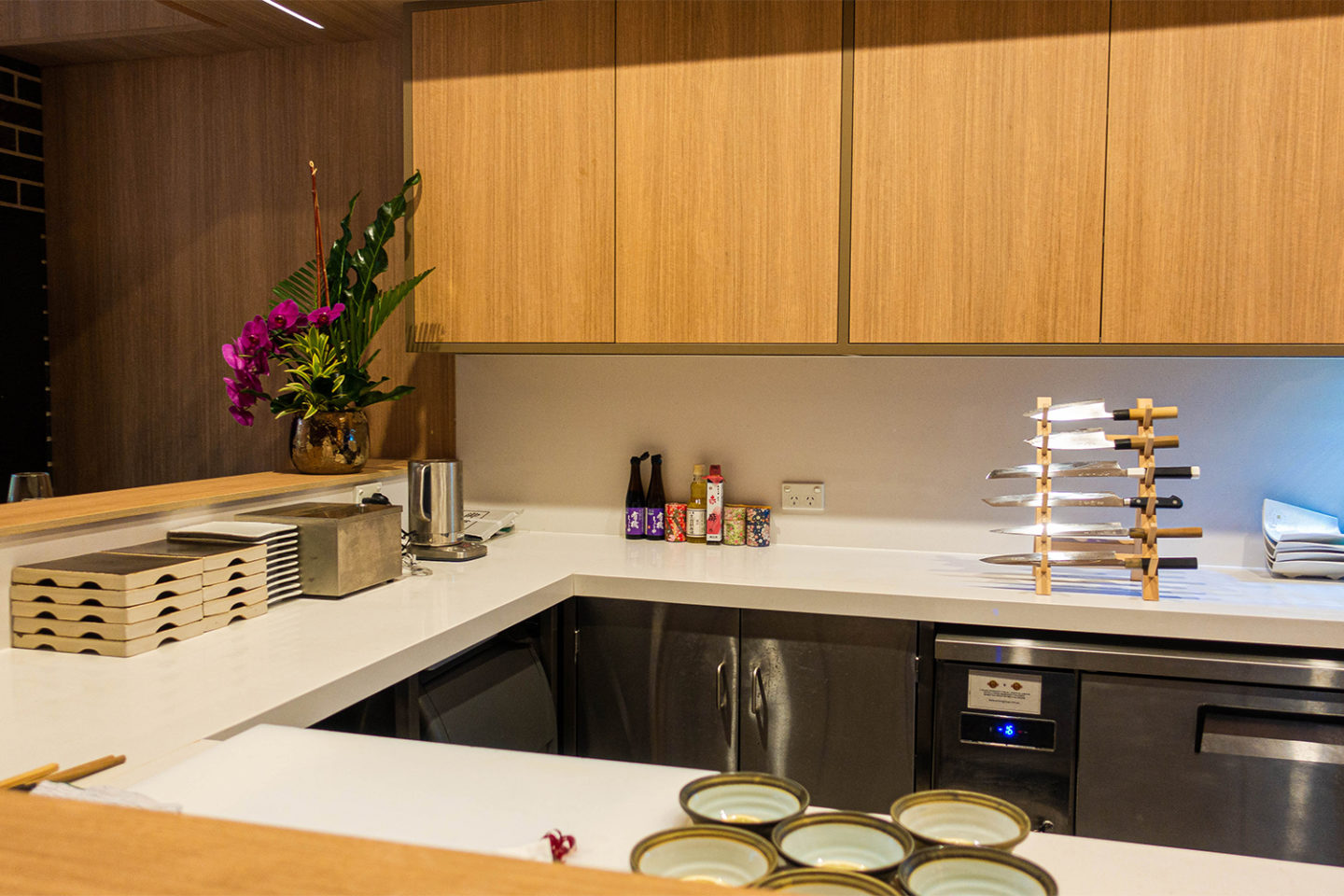
Kuon is a newly opened (9-month-old) omakase in Darling Square, Sydney. It is a very hyped dining experience at the moment that is always booked out. We ate here on Sunday. I’ve detailed this post to include reservations, Japanese culture and the food, of course 😉.
It was 20 dishes for $190 per person (9 kappos, 10 nigiris, 1 dessert). The add-on dish and nigiri were an extra $100 per person (so Mick had 22 dishes total).
Our main chef was Chef Jun Miyauchi and his apprentice.
It was 20 dishes for $190 per person (9 kappos, 10 nigiris, 1 dessert). The add-on dish and nigiri were an extra $100 per person (so Mick had 22 dishes total).
Our main chef was Chef Jun Miyauchi and his apprentice.
Making a reservation
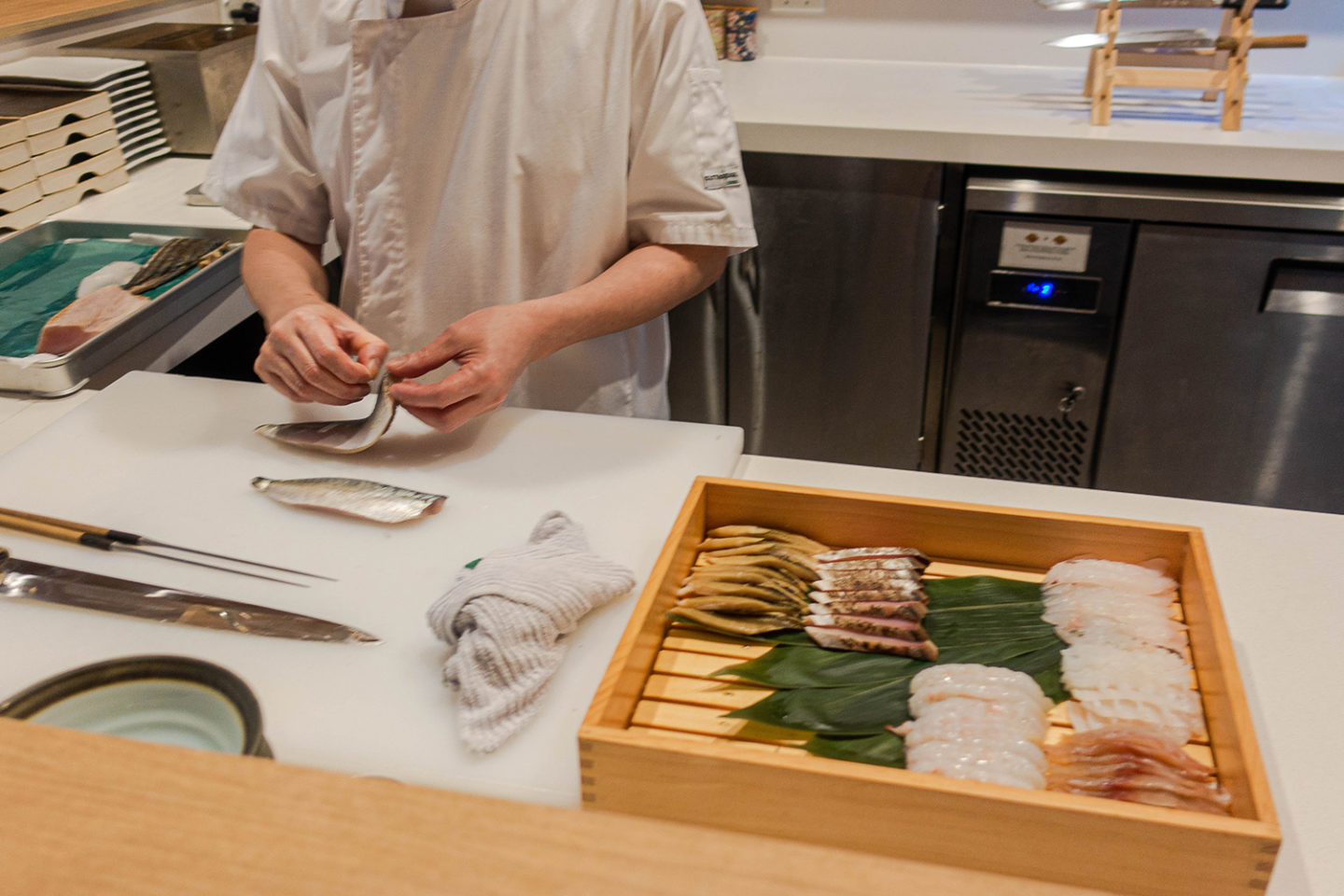
Kuon is always booked out within minutes of opening up their system on the first Tuesday of the month at 12PM. What worked best for us (and what the server recommended) was to:
We tried booking in January, no luck. We tried again in February and despite having 3 people on 3 different devices with multiple browsers opened, we only scored one reservation. We tried again in March with the above method and also got one reservation 🥺.
Also if you have a public reservation and want to give it to your friends, they do not need your name/credit card to attend. For private, the person making the reservation must attend.
- Create an OpenTable account
- Open 3-4 browsers on the computer with different timeslots/dates at 11:55 PM
- Refresh immediately at noon and keep refreshing
- Do not hesitate if there is a slot. Click on it to the payment page. You’ll get 5 minutes to make a final decision but keep in mind that if you go back, everything will be gone 😫.
We tried booking in January, no luck. We tried again in February and despite having 3 people on 3 different devices with multiple browsers opened, we only scored one reservation. We tried again in March with the above method and also got one reservation 🥺.
Also if you have a public reservation and want to give it to your friends, they do not need your name/credit card to attend. For private, the person making the reservation must attend.
Sake
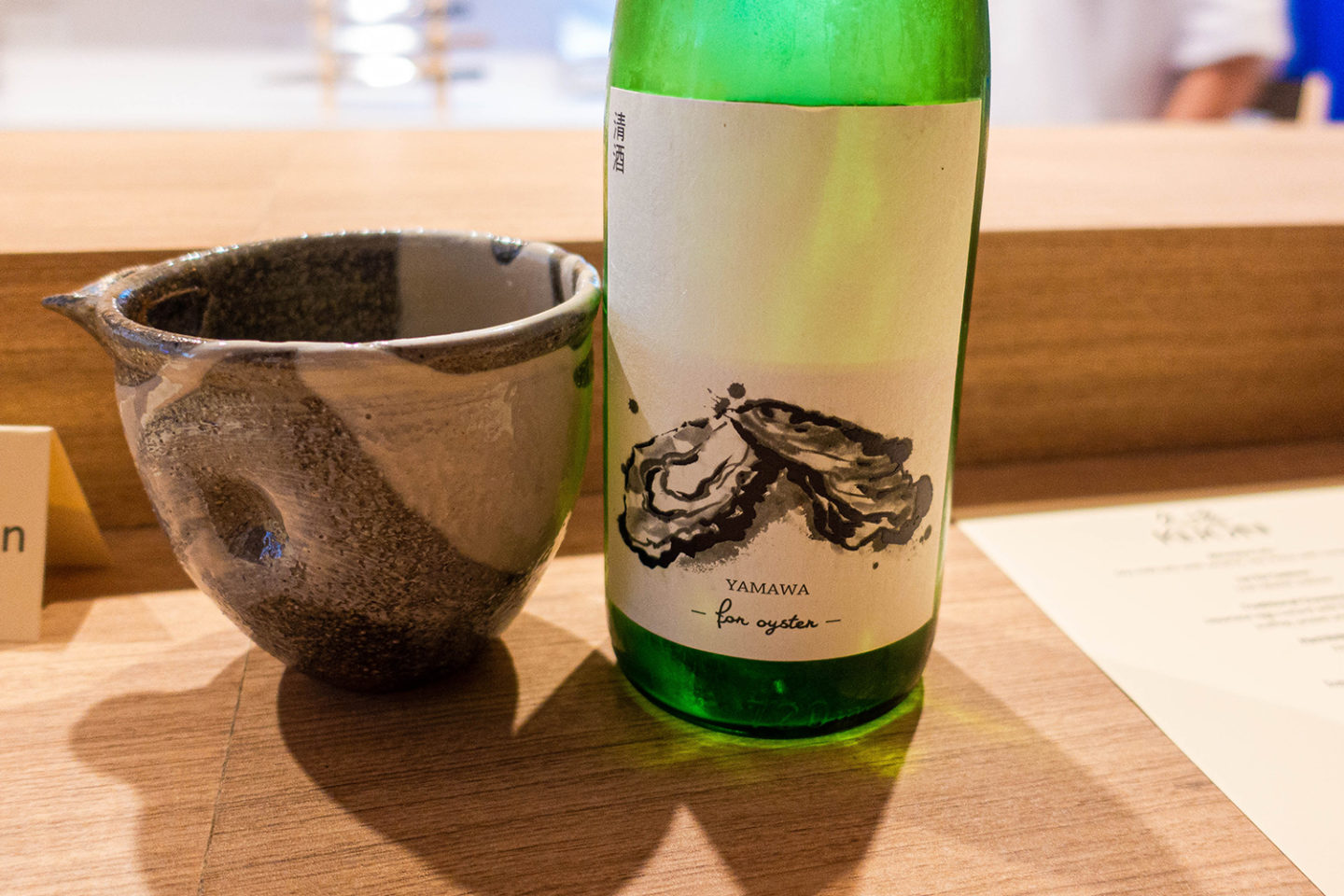
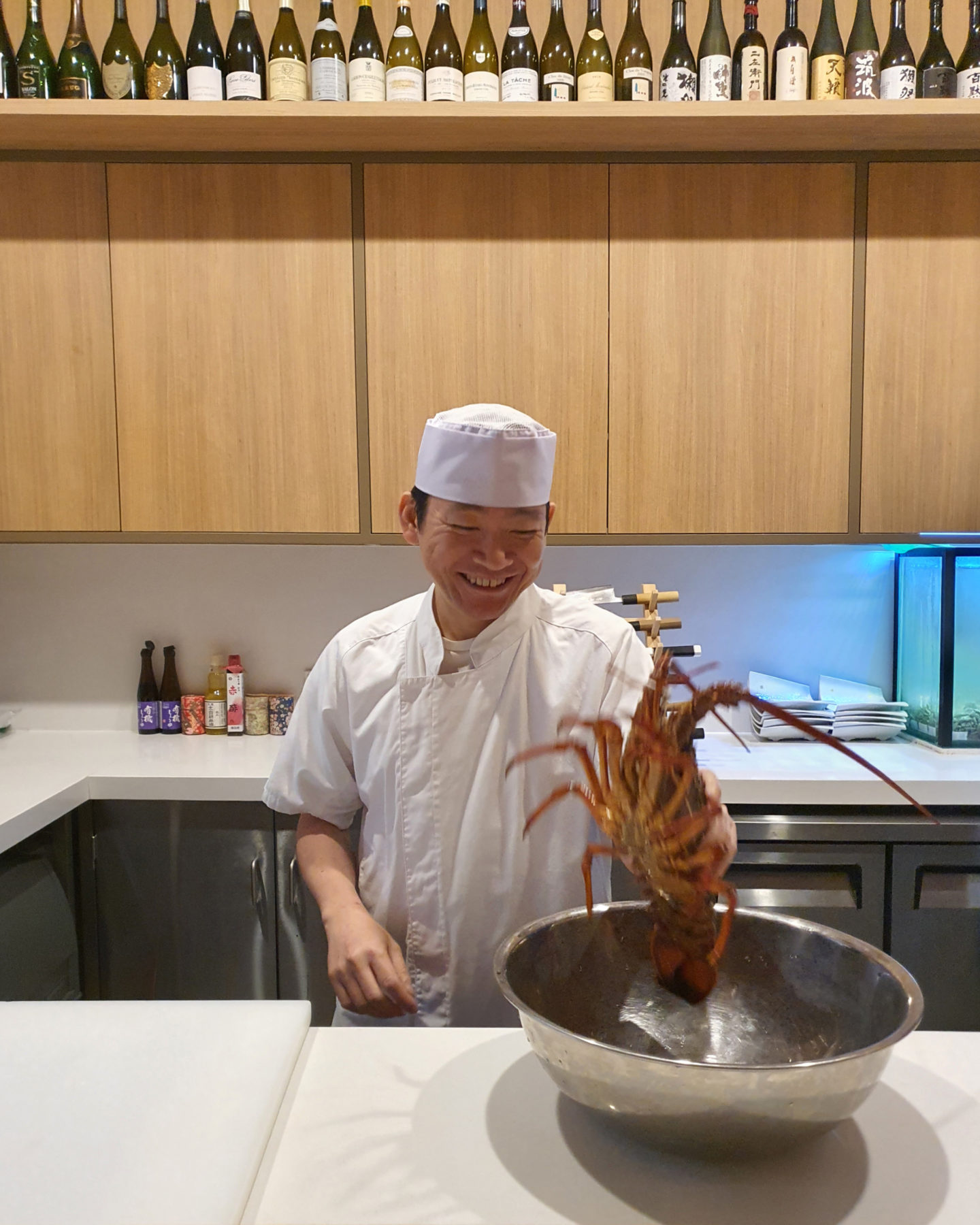
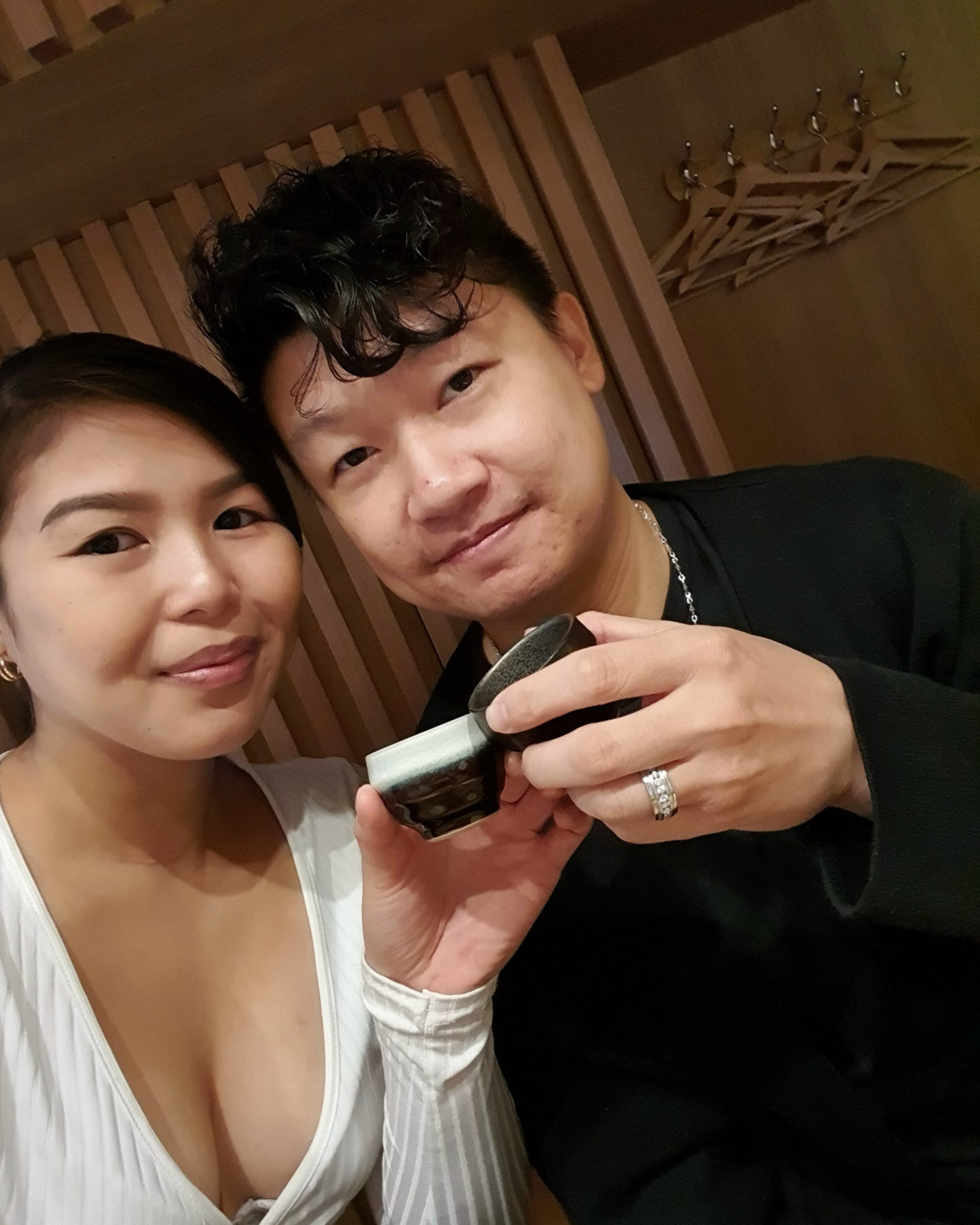
After arrival, we were introduced to our live lobster and ordered a bottle of Yamawa for Oyster, from Miyagi, Japan, 720mls for $145. This was a light Junmai, with a mild floral aroma that made it easy to skull down.
Omakase
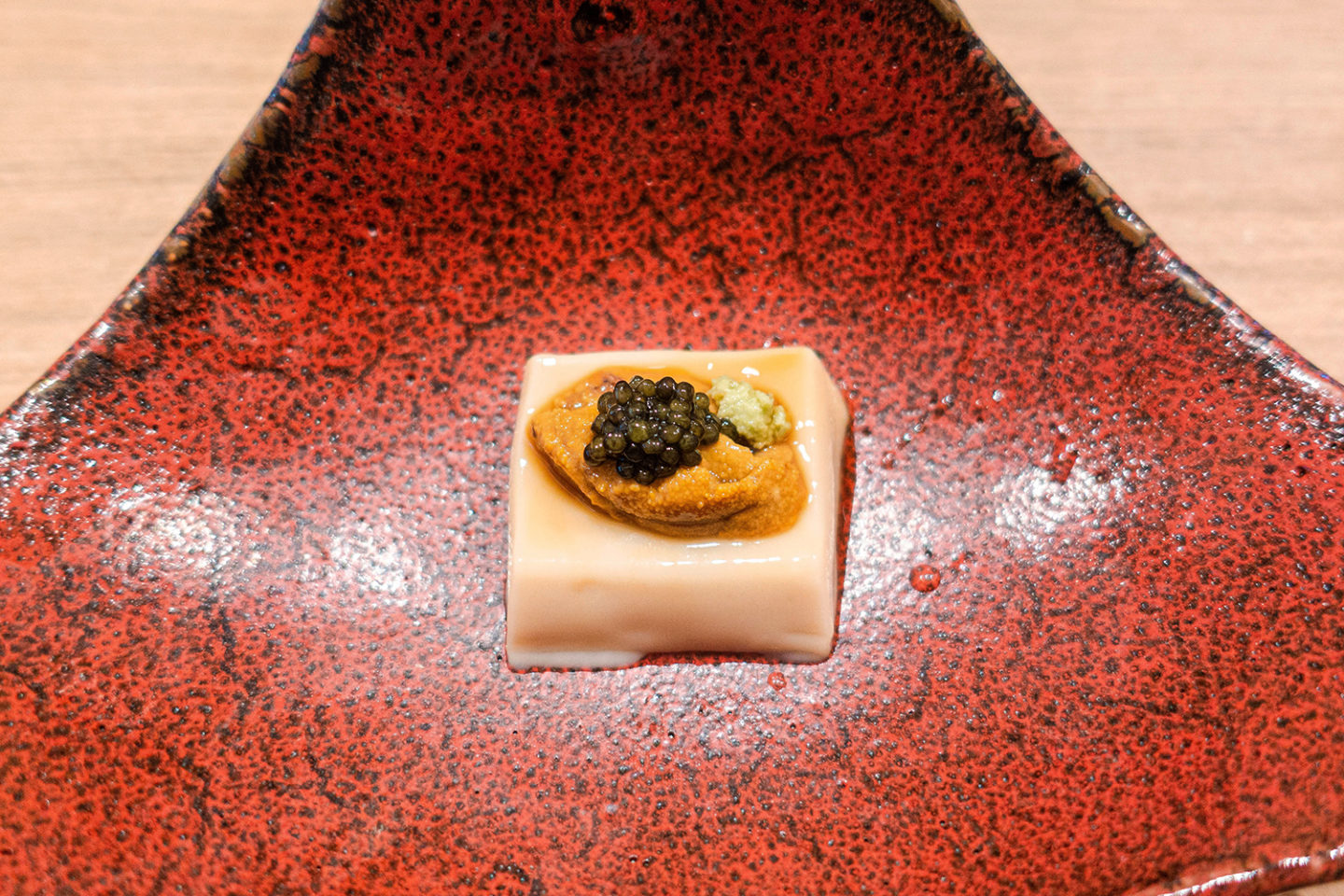
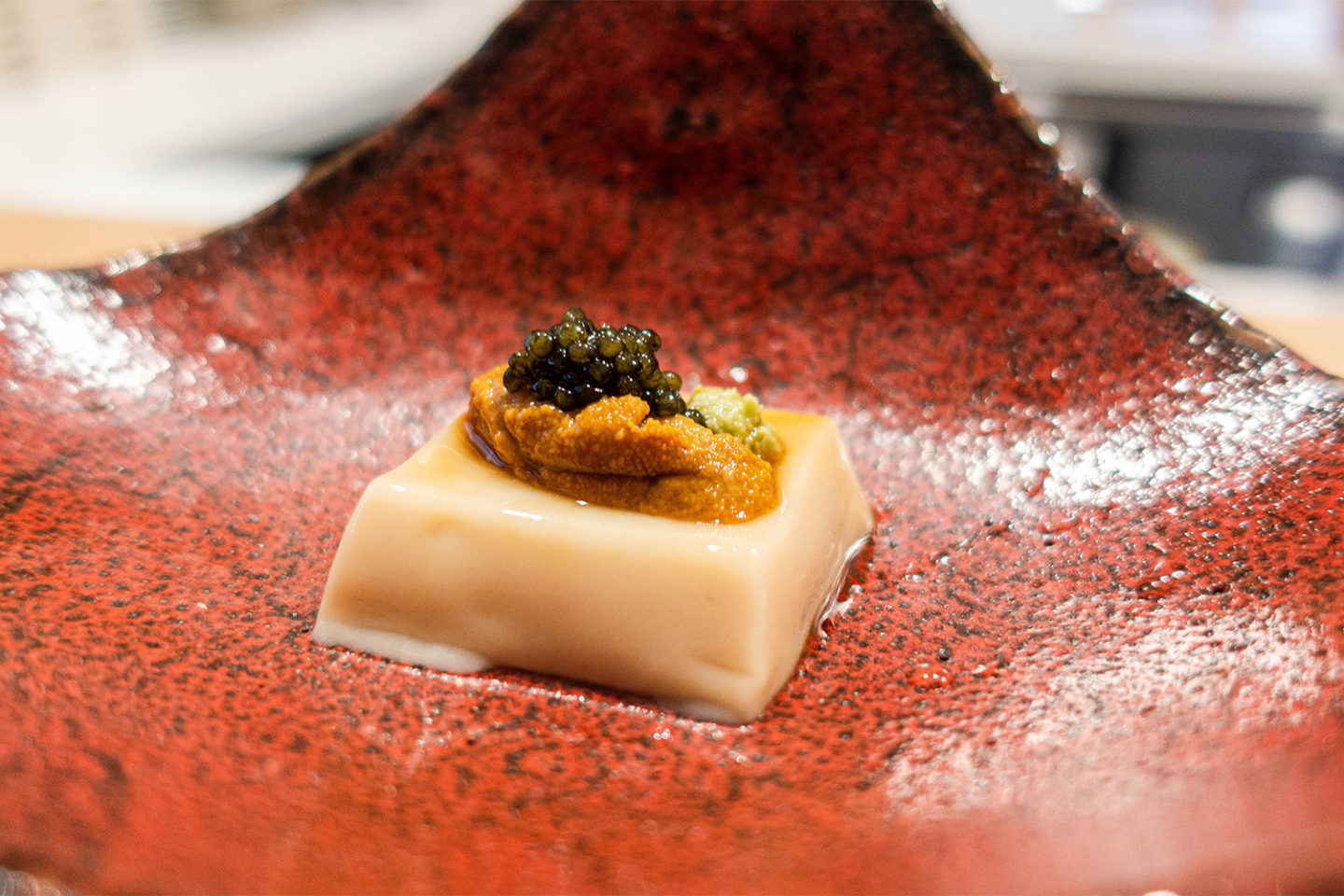
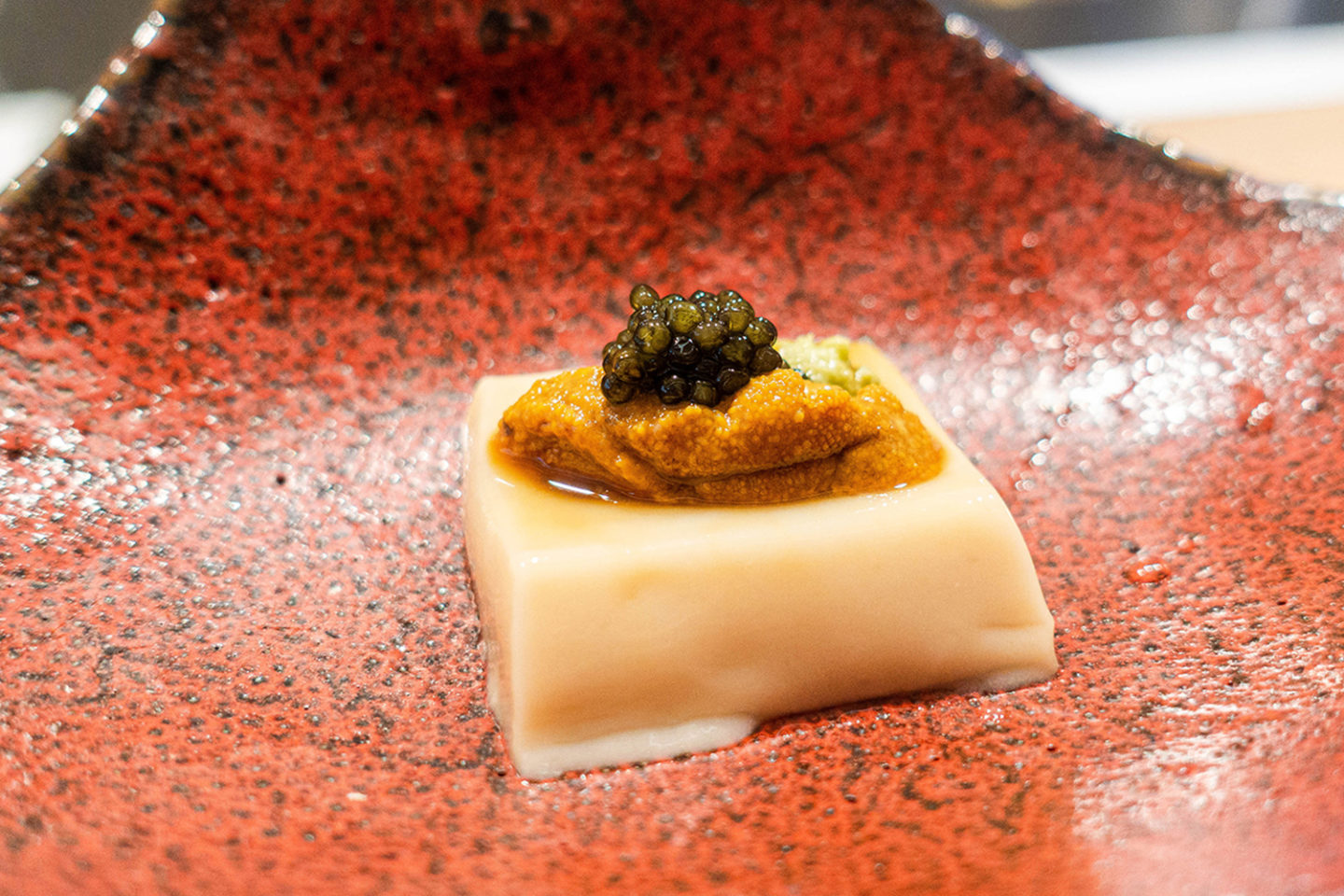
Straight into the food review, our first dish was the mineoka tofu, placed on this vibrant royal red plate. This was soy milk tofu with sesame, sea urchin and caviar osetra. A boujee start, indeed 😏.
The soy milk was dense and creamy which was quite unexpected on the palate. The soy flavour was prominent, cut through by the caviar. They used San Gregorio de Polanco caviar from Uruguay. This was more moderate in oceanic salt and not as sharp as the Serbian caviar. The sea urchin was briny and rich however due to its small serving size, its texture was lost in the pillow of tofu.
The soy milk was dense and creamy which was quite unexpected on the palate. The soy flavour was prominent, cut through by the caviar. They used San Gregorio de Polanco caviar from Uruguay. This was more moderate in oceanic salt and not as sharp as the Serbian caviar. The sea urchin was briny and rich however due to its small serving size, its texture was lost in the pillow of tofu.
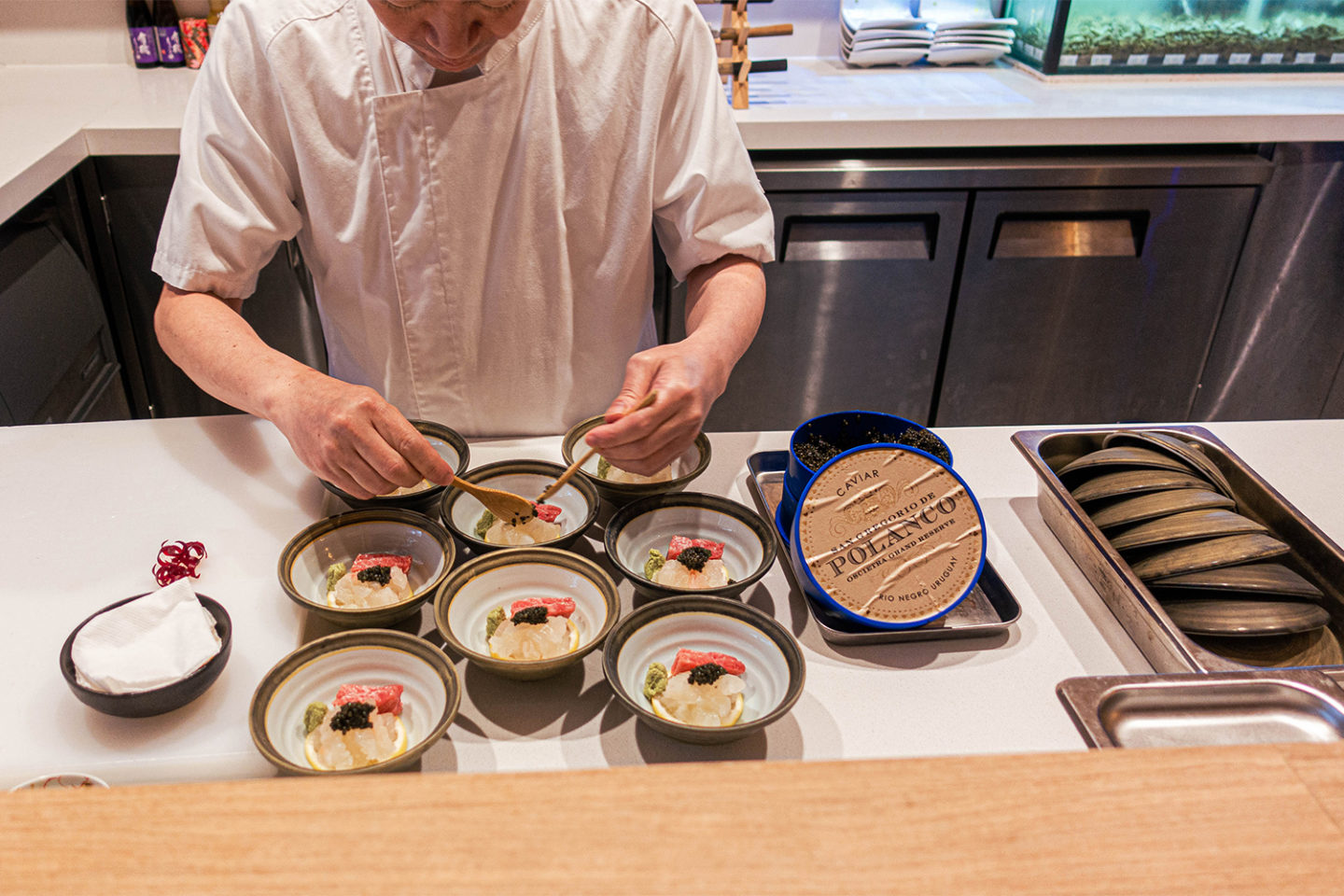
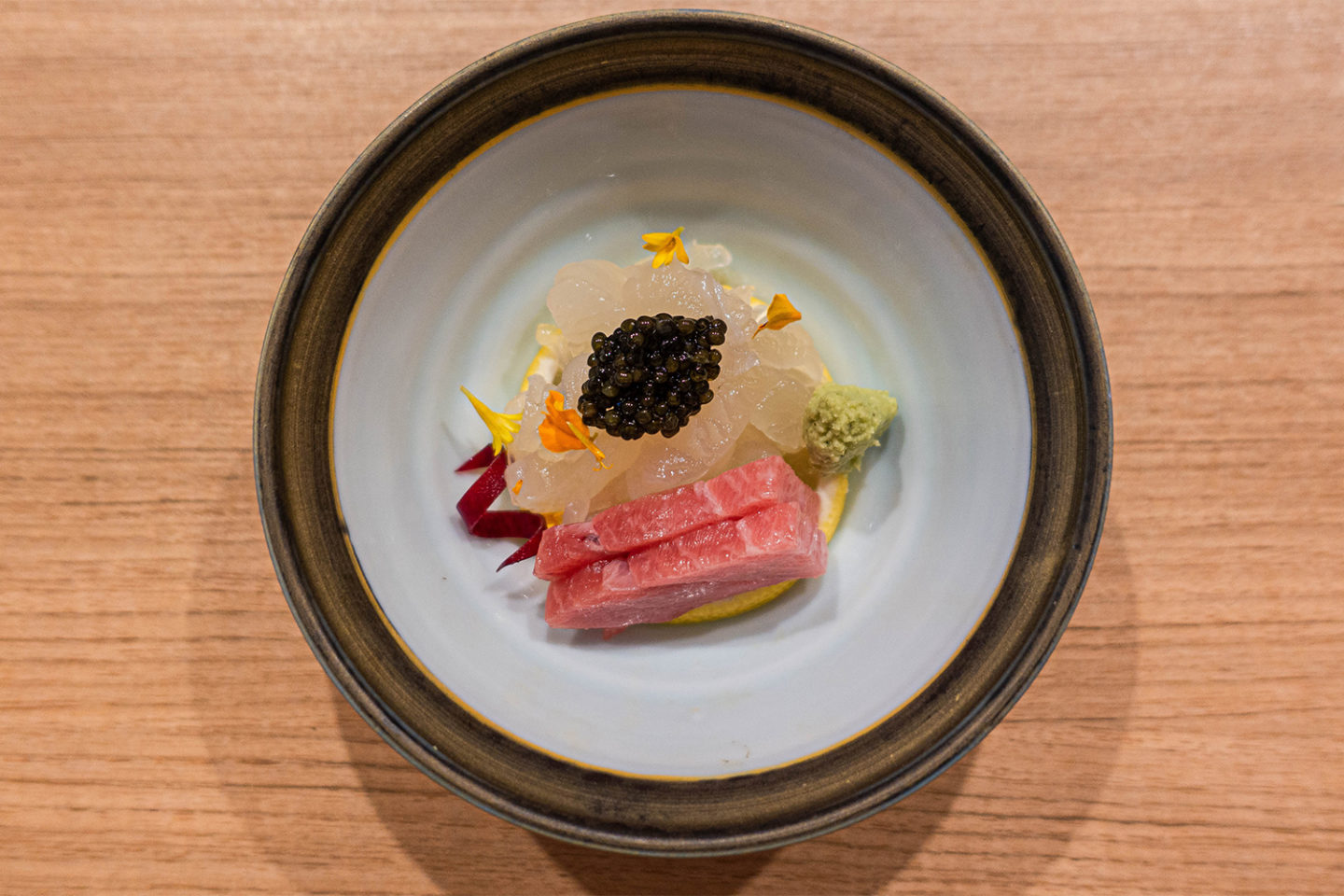
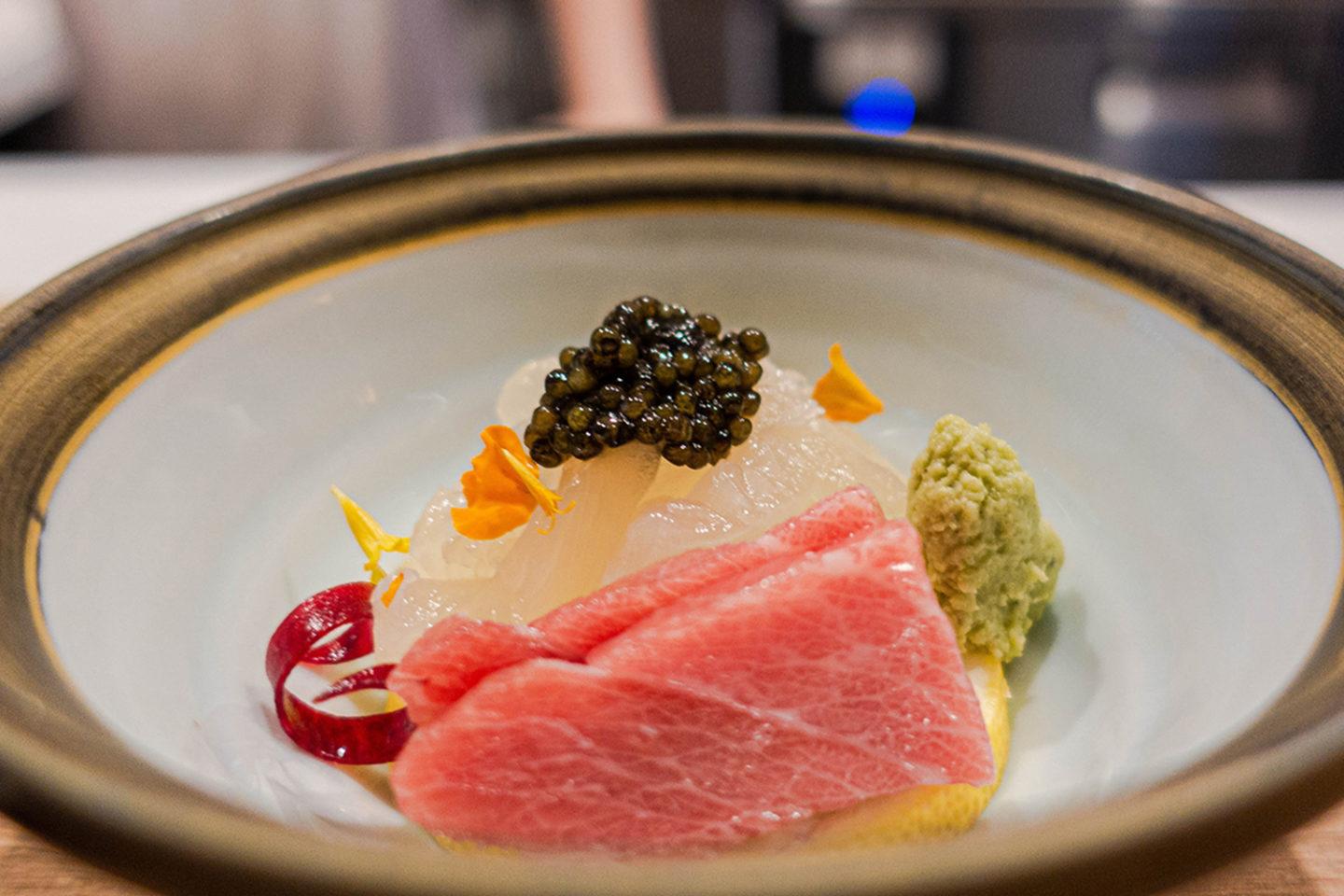
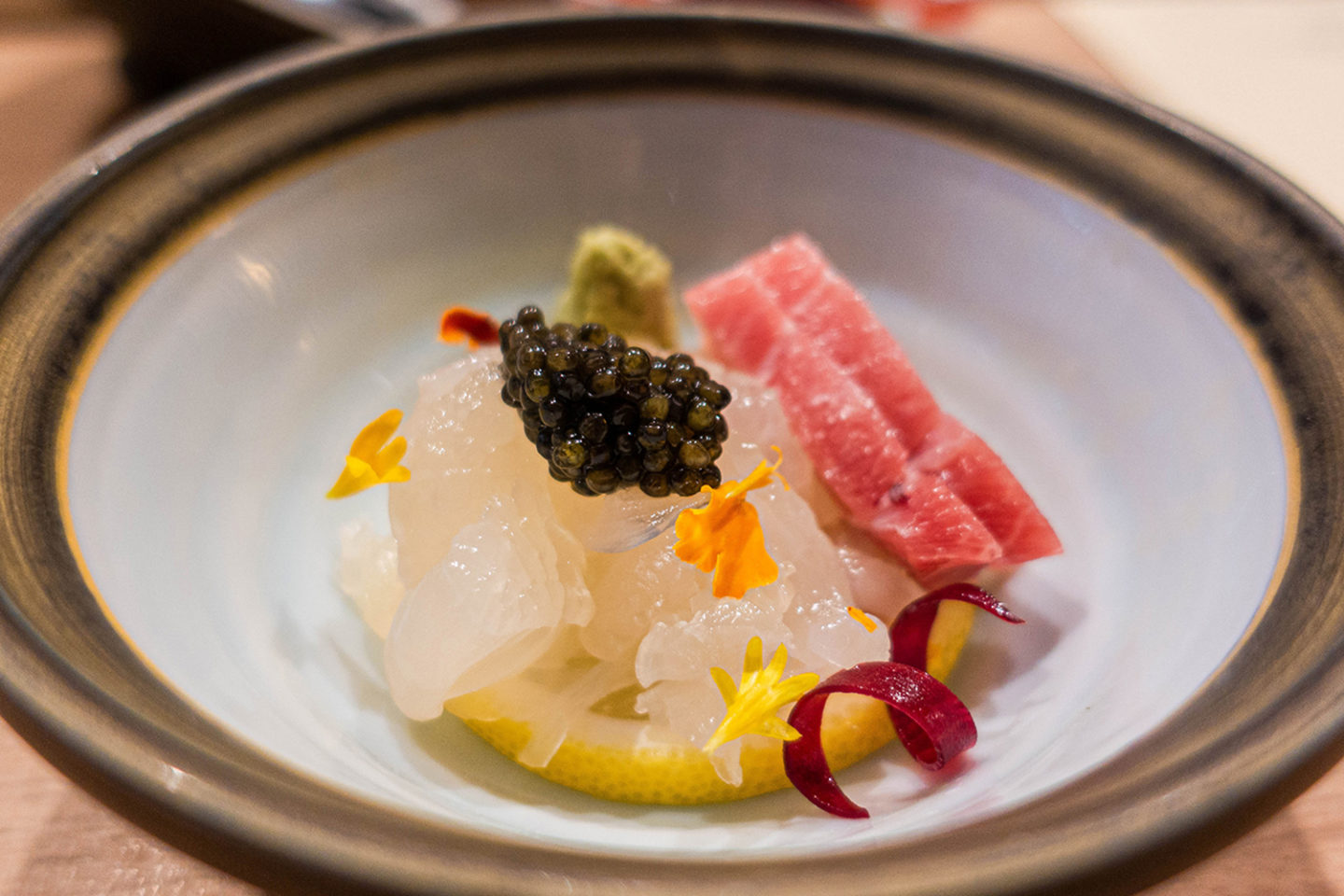
The ise ebi sashimi was a beautiful reveal. Our lobster friend had been freshly chopped and served in this bowl with the Uruguay caviar and NZ otoro (fatty tuna belly). This was our first time eating raw lobster and wow, we were impressed 😍.
It had a delicate, stringent texture with a moderate crustacean taste. The otoro was dense and tender, like compacted fattiness. The dried flowers added some crunch to the bite. This was one of our favourite dishes of the lunch.
It had a delicate, stringent texture with a moderate crustacean taste. The otoro was dense and tender, like compacted fattiness. The dried flowers added some crunch to the bite. This was one of our favourite dishes of the lunch.
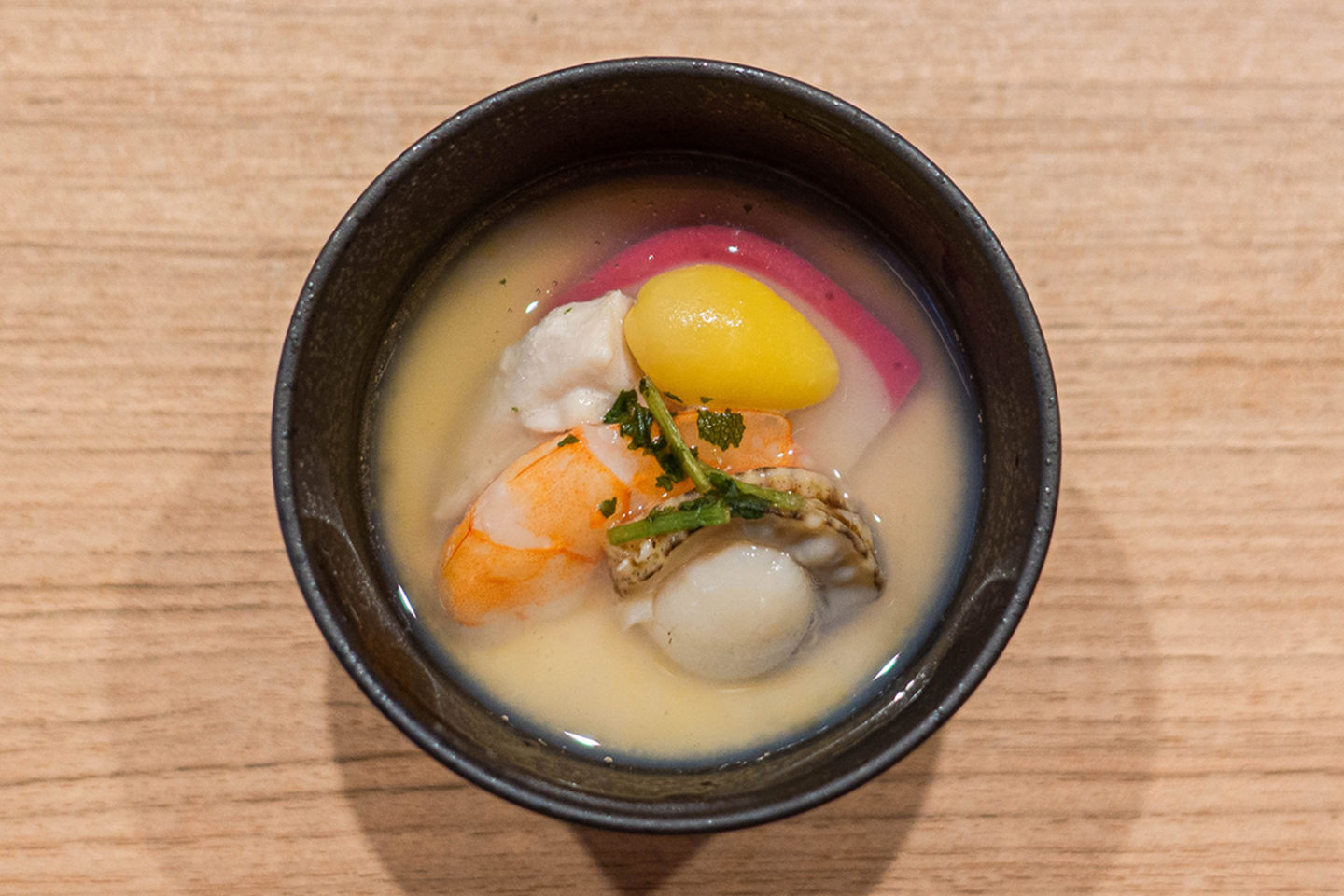
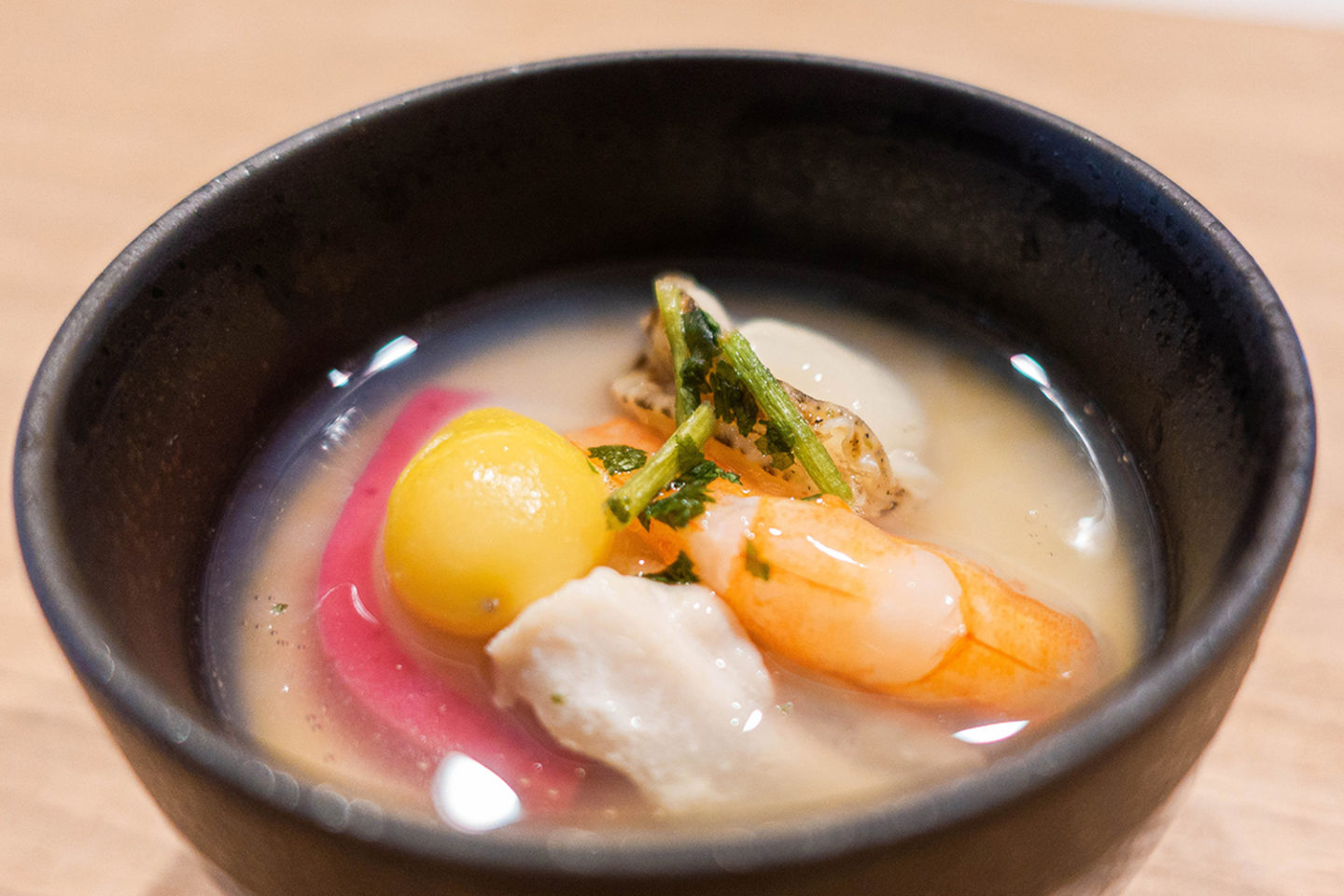
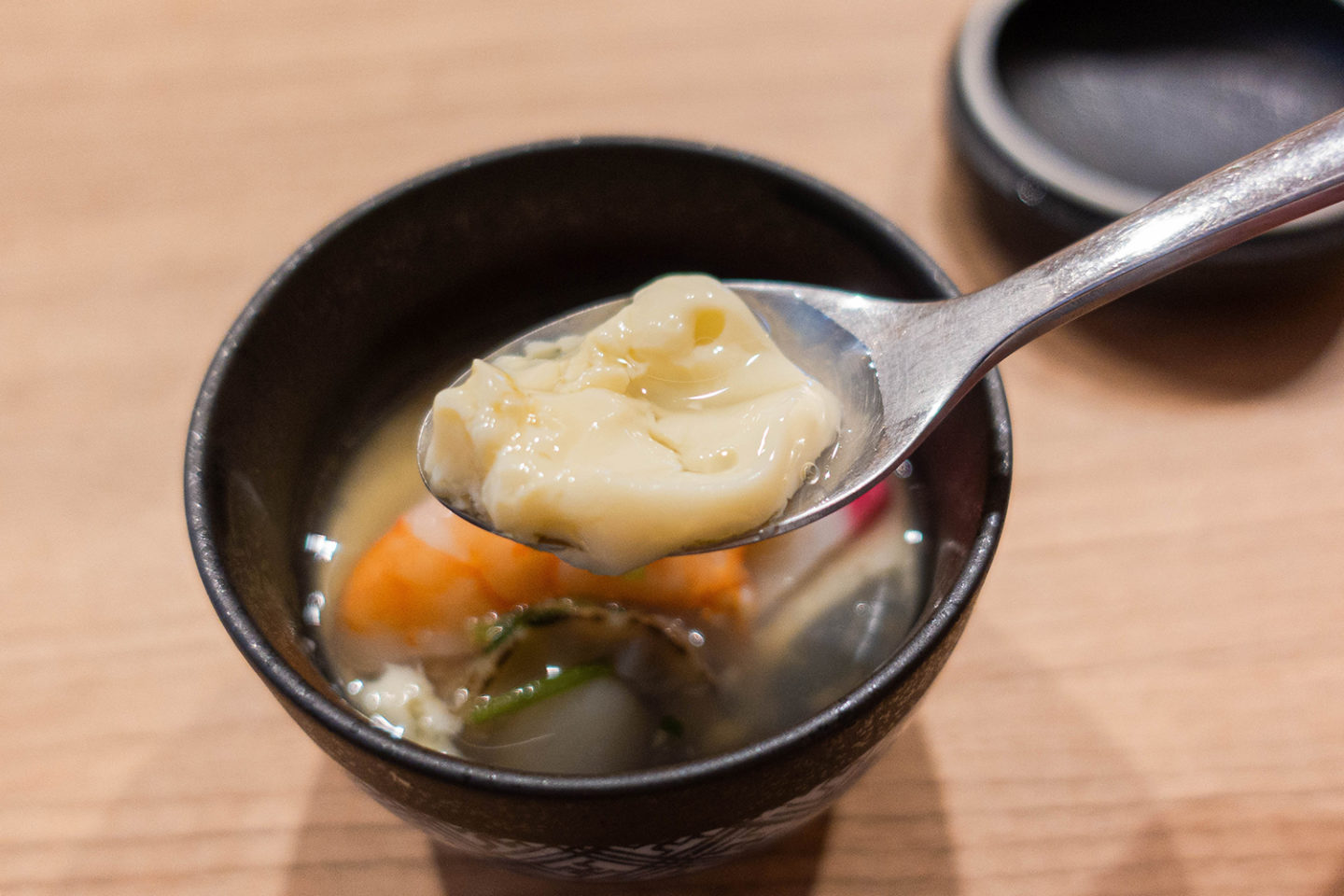
Next was the traditional chawanmushi, made of Japanese egg custard with fish cake, chicken, scallop, prawn and ginkgo nut. This was served hot, not like the cool consommé at other restaurants. This chawanmushi was more of a hot and savoury egg broth, around 90°C.
The added components were steamed and retained their flavours but also had extra water residue. The ginkgo nut was a mellow nutty flavour. It was raining heavily that day so this dish was very soothing and enjoyable ☔.
The added components were steamed and retained their flavours but also had extra water residue. The ginkgo nut was a mellow nutty flavour. It was raining heavily that day so this dish was very soothing and enjoyable ☔.
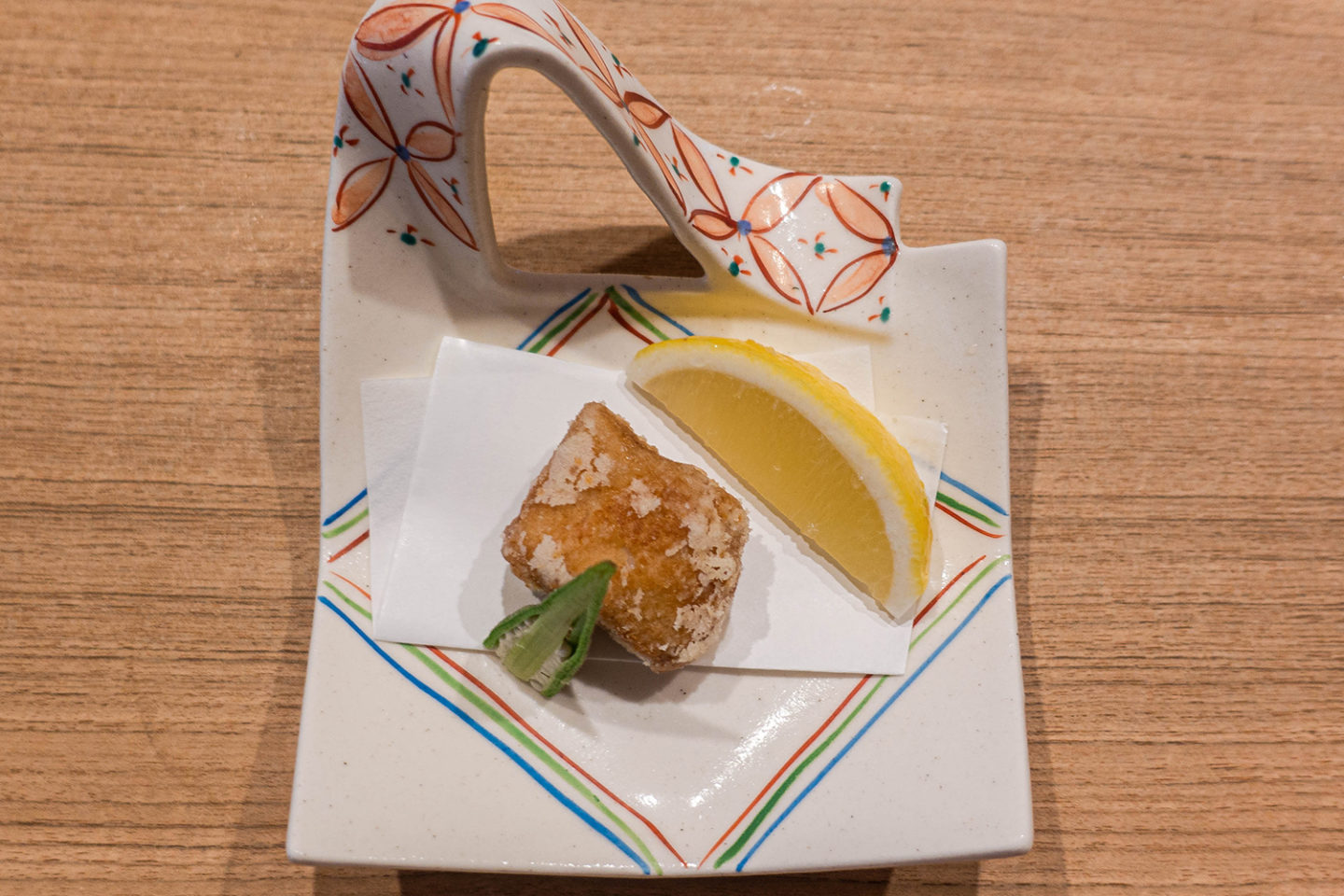
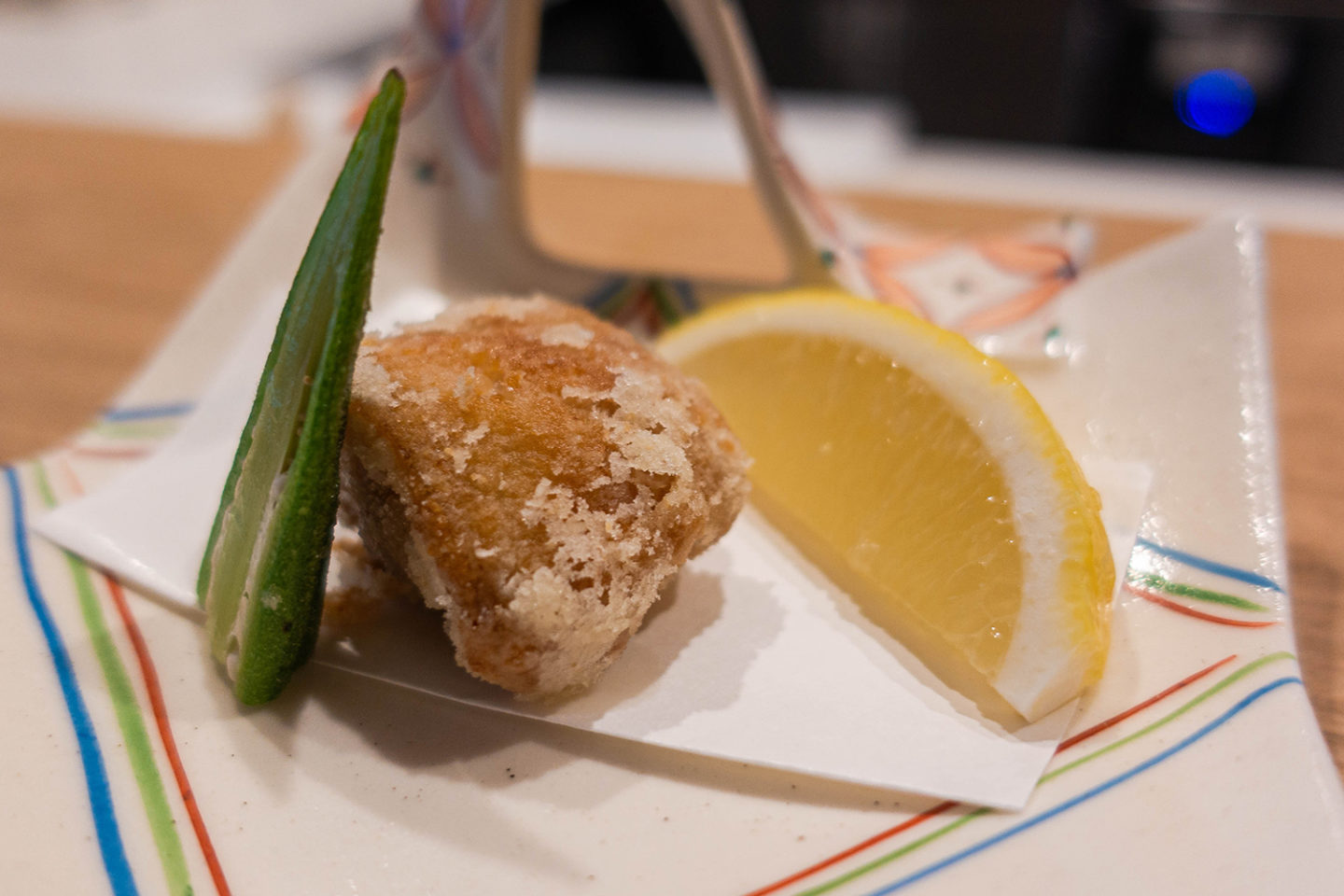
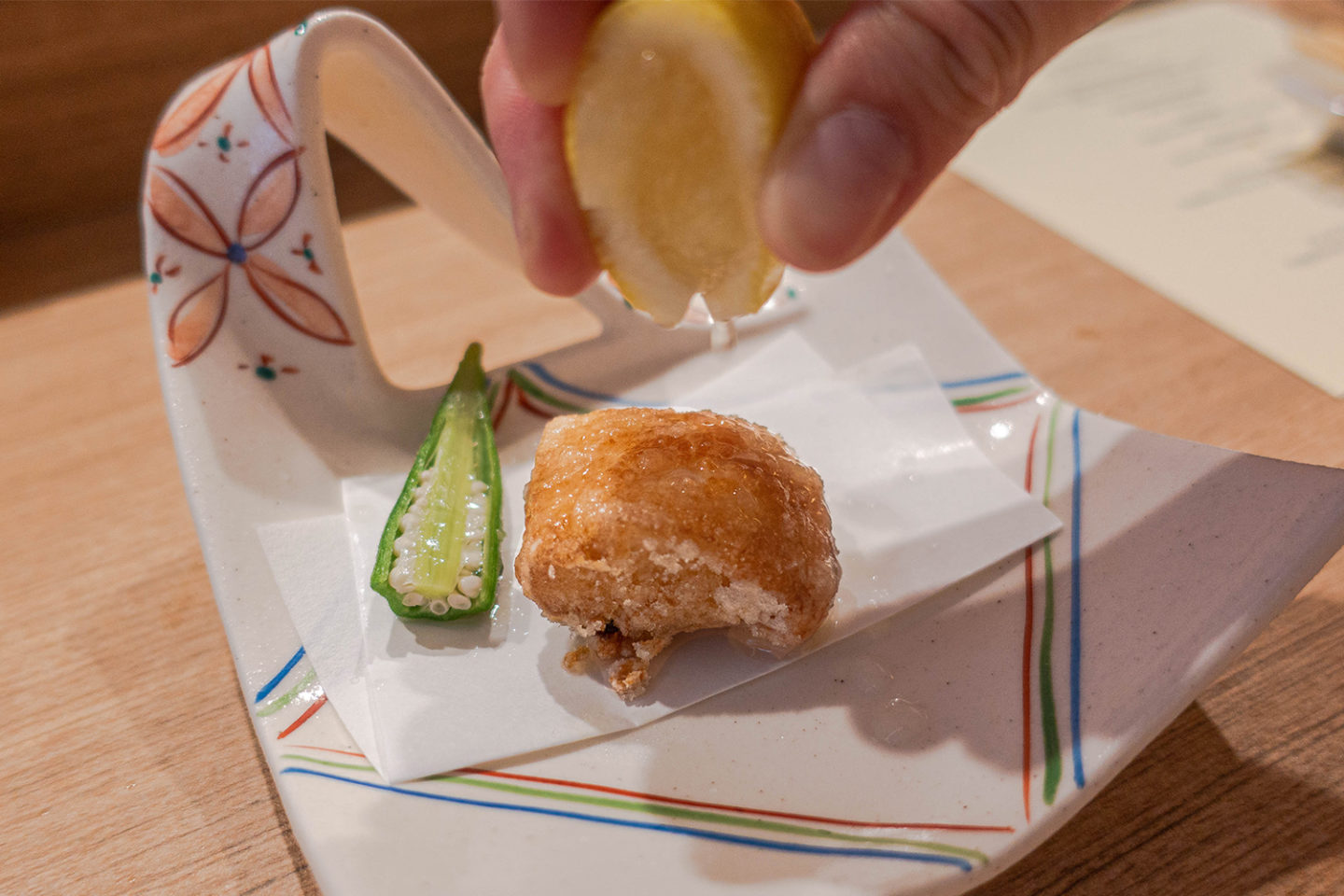
I really like their plates 😂. This was the hachibiki Tatsuta age, a karaage-style fried ruby fish served with lemon and okra. The fish was juicy with a mild fishy flavour. The batter was light and crisp. And the okra was soft, with a clean grassy taste.
We were a little disappointed in the size of the piece but that was our greedy asses talking. The lemon was necessary to cut through the oil – there was some residue oil leaking out of the fish after the initial bite.
We were a little disappointed in the size of the piece but that was our greedy asses talking. The lemon was necessary to cut through the oil – there was some residue oil leaking out of the fish after the initial bite.
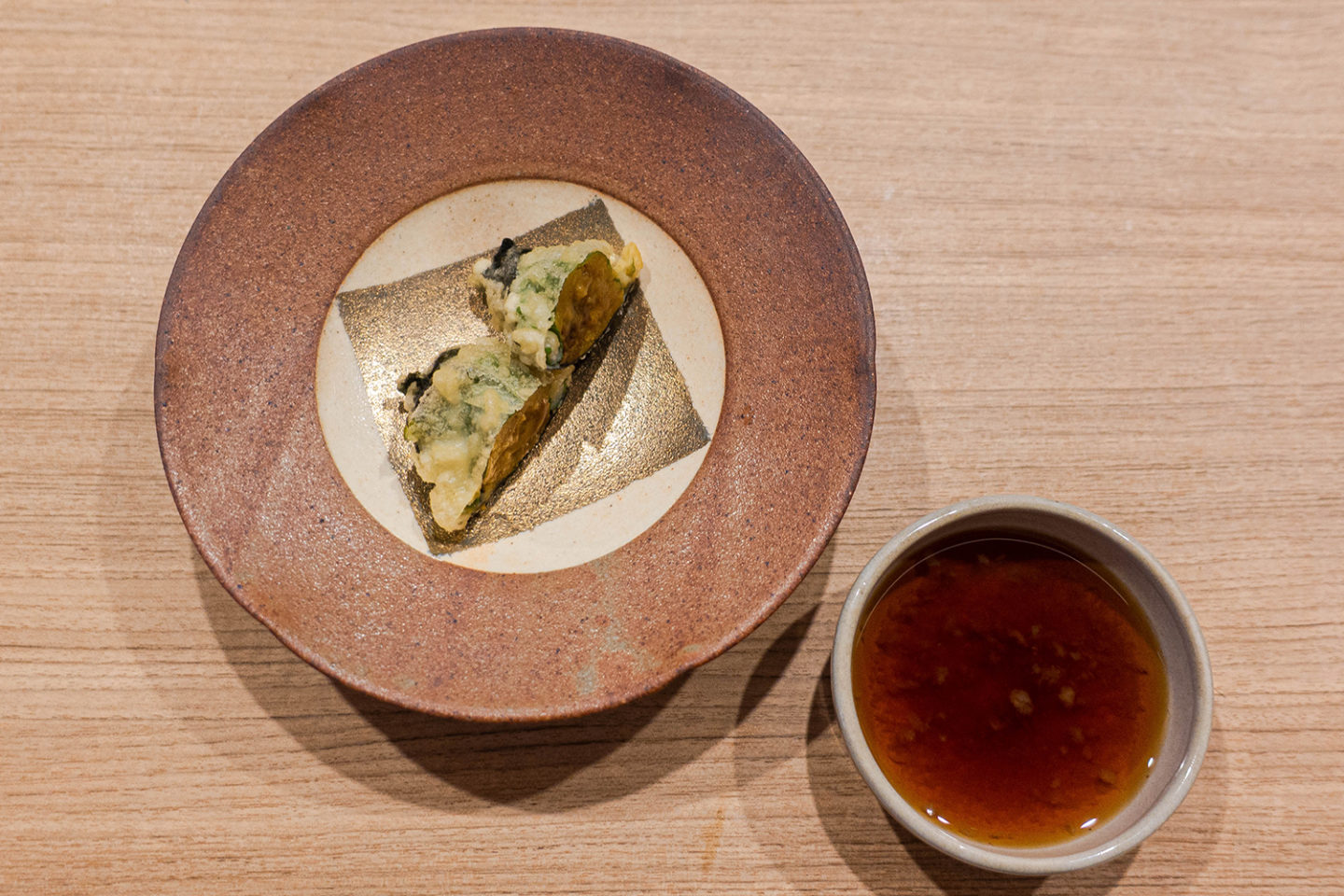
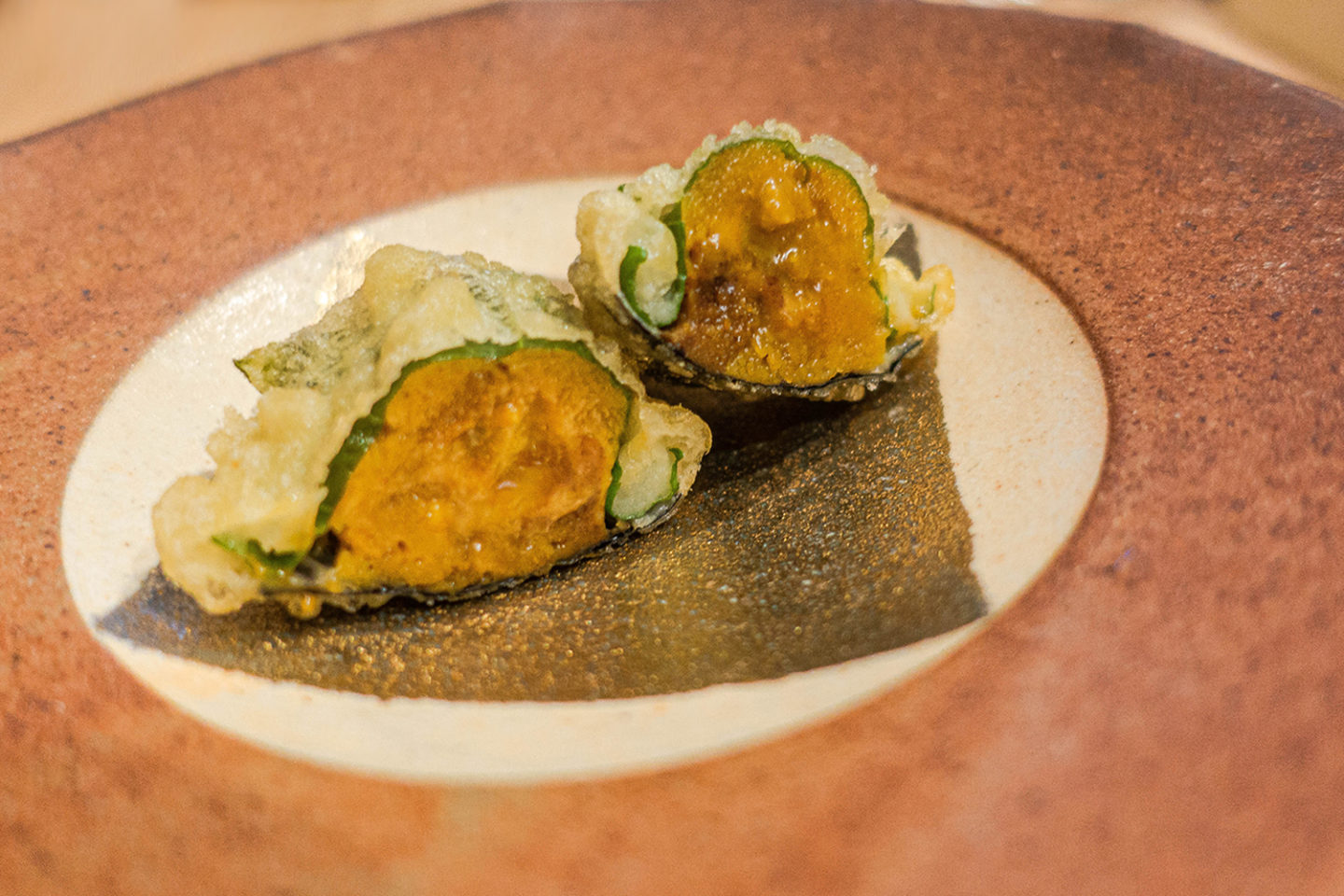
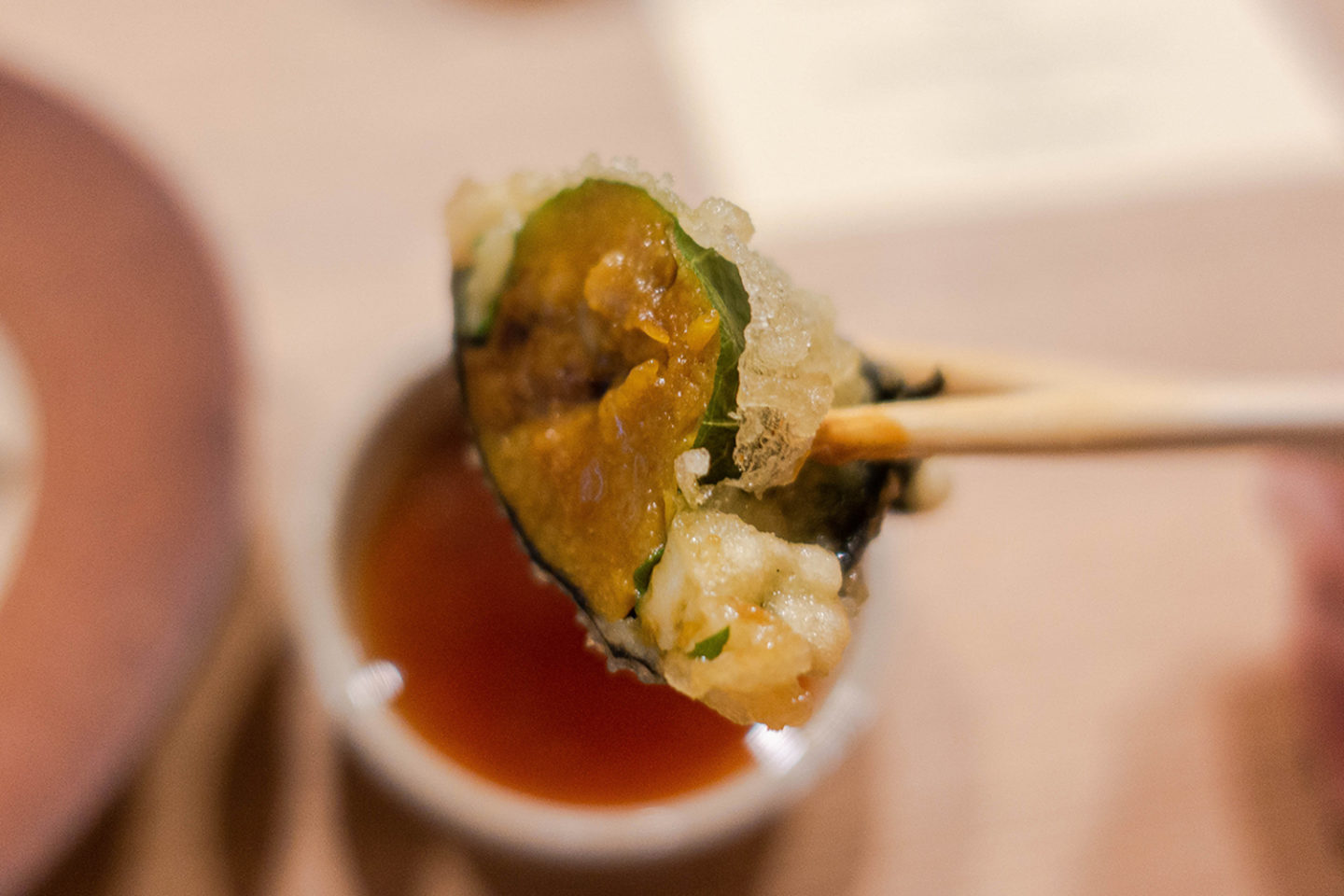
This was the supplementary sea urchin tempura for an extra $20.
We’ve never had fried urchin before and were quite amazed by this unique cooking style. The urchin was not mushy or briny but had a more creamy and meaty texture.
The batter was light and crispy, encasing the echinoderm and highlighting that iconic urchin flavour. The accompanying dip was a sweet and umami flavoured soy sauce. We still prefer the original raw style but this masterpiece was delicious 🤤.
We’ve never had fried urchin before and were quite amazed by this unique cooking style. The urchin was not mushy or briny but had a more creamy and meaty texture.
The batter was light and crispy, encasing the echinoderm and highlighting that iconic urchin flavour. The accompanying dip was a sweet and umami flavoured soy sauce. We still prefer the original raw style but this masterpiece was delicious 🤤.
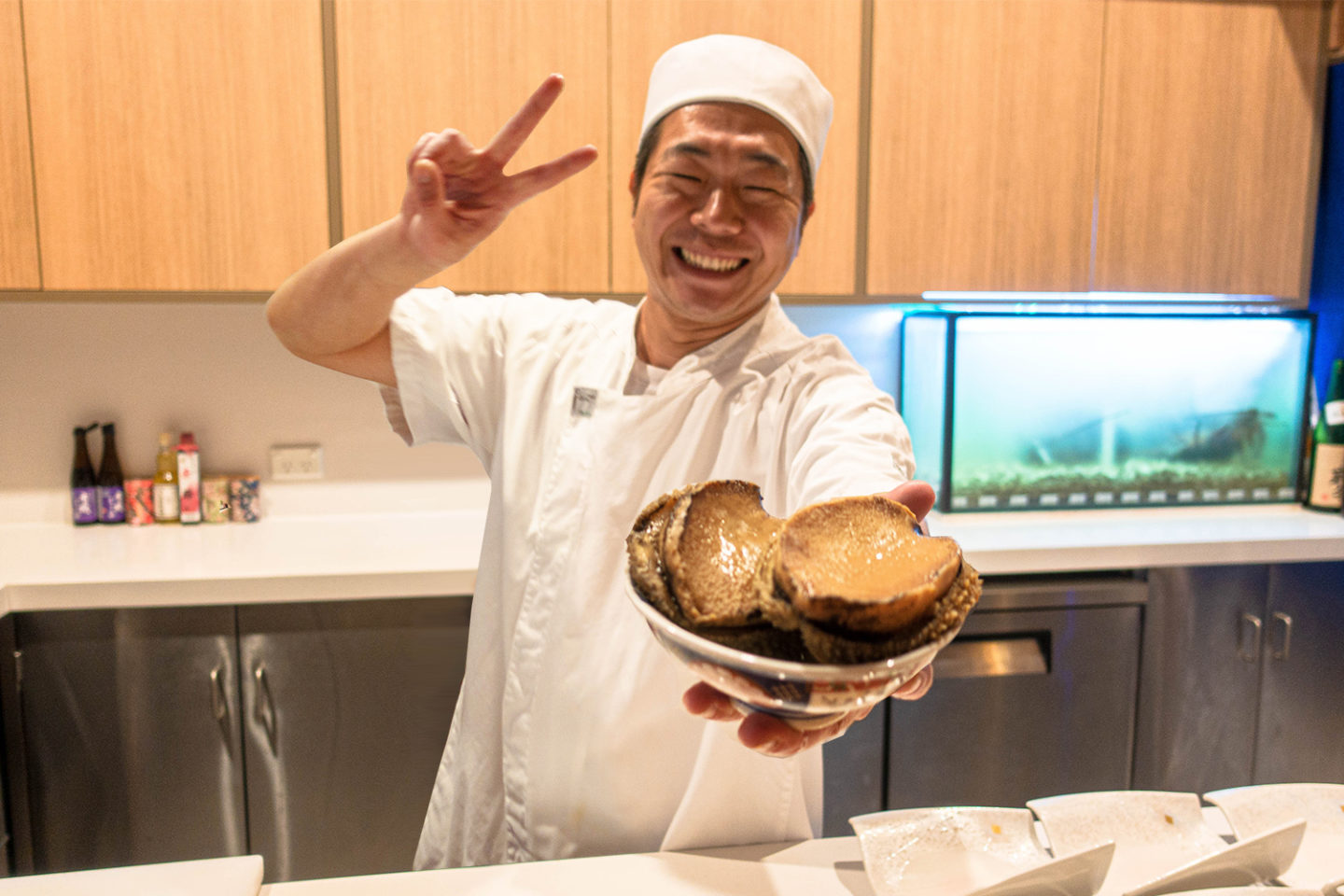
The apprentice chef looked very pleased with his steamed abalone 😆.
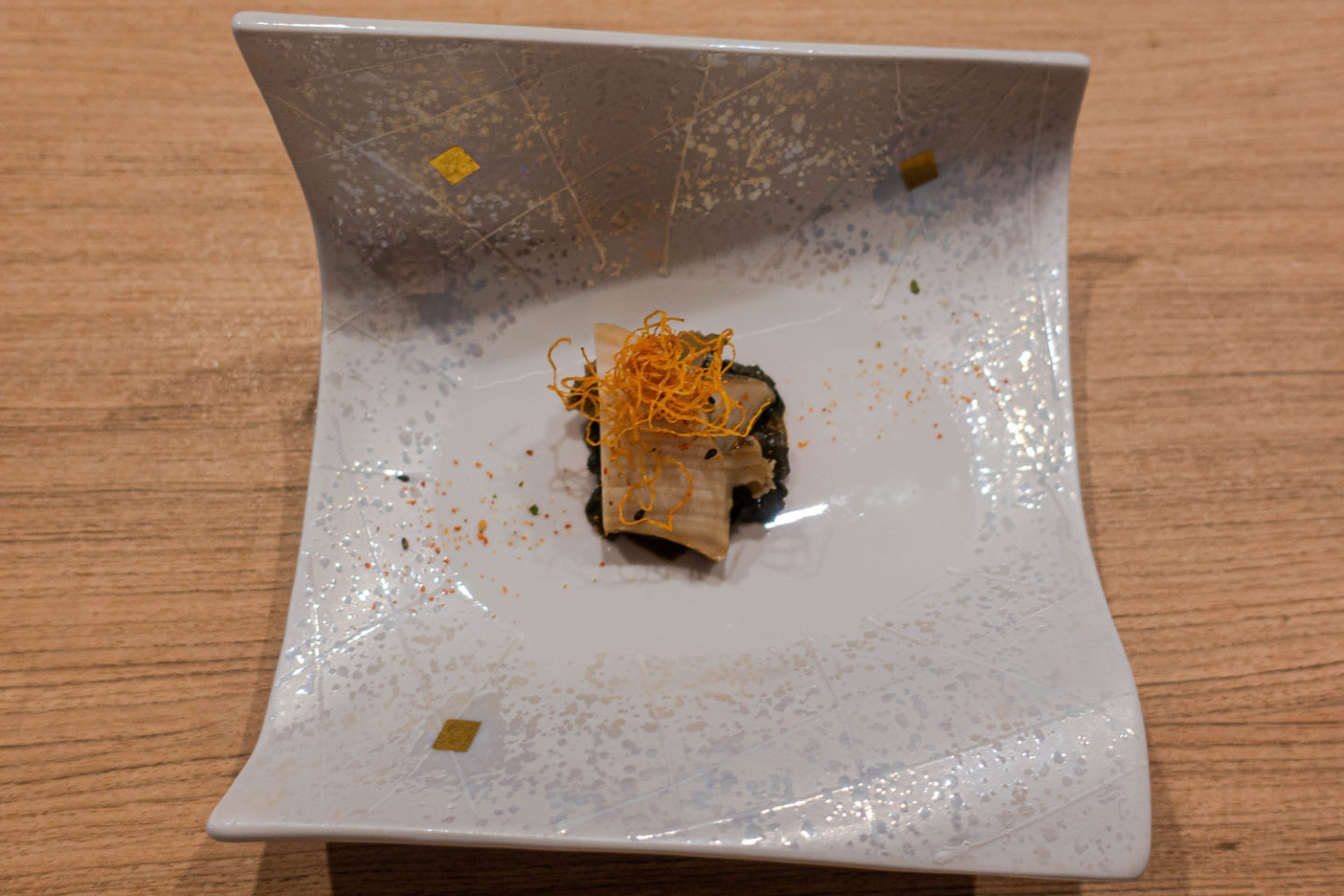
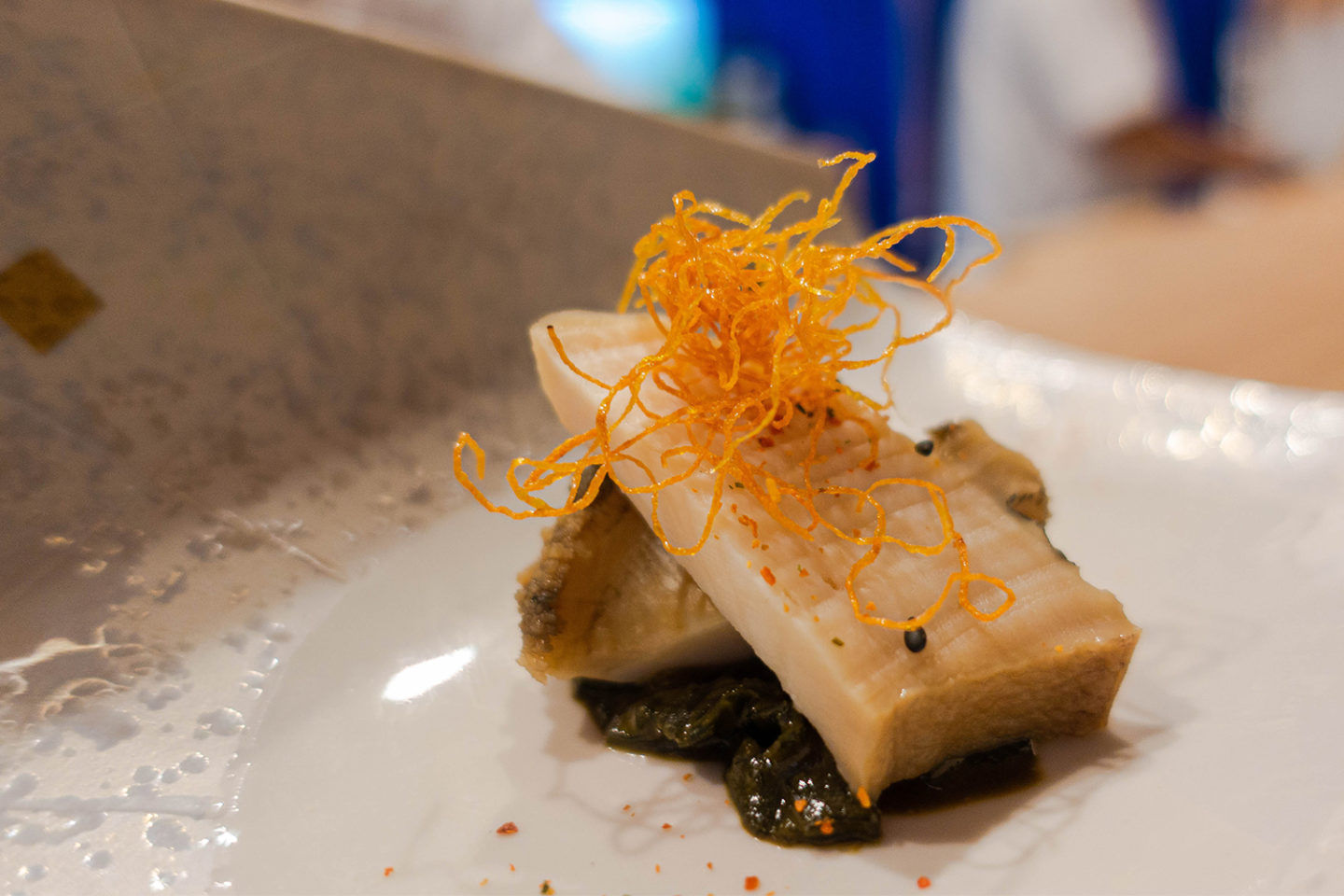
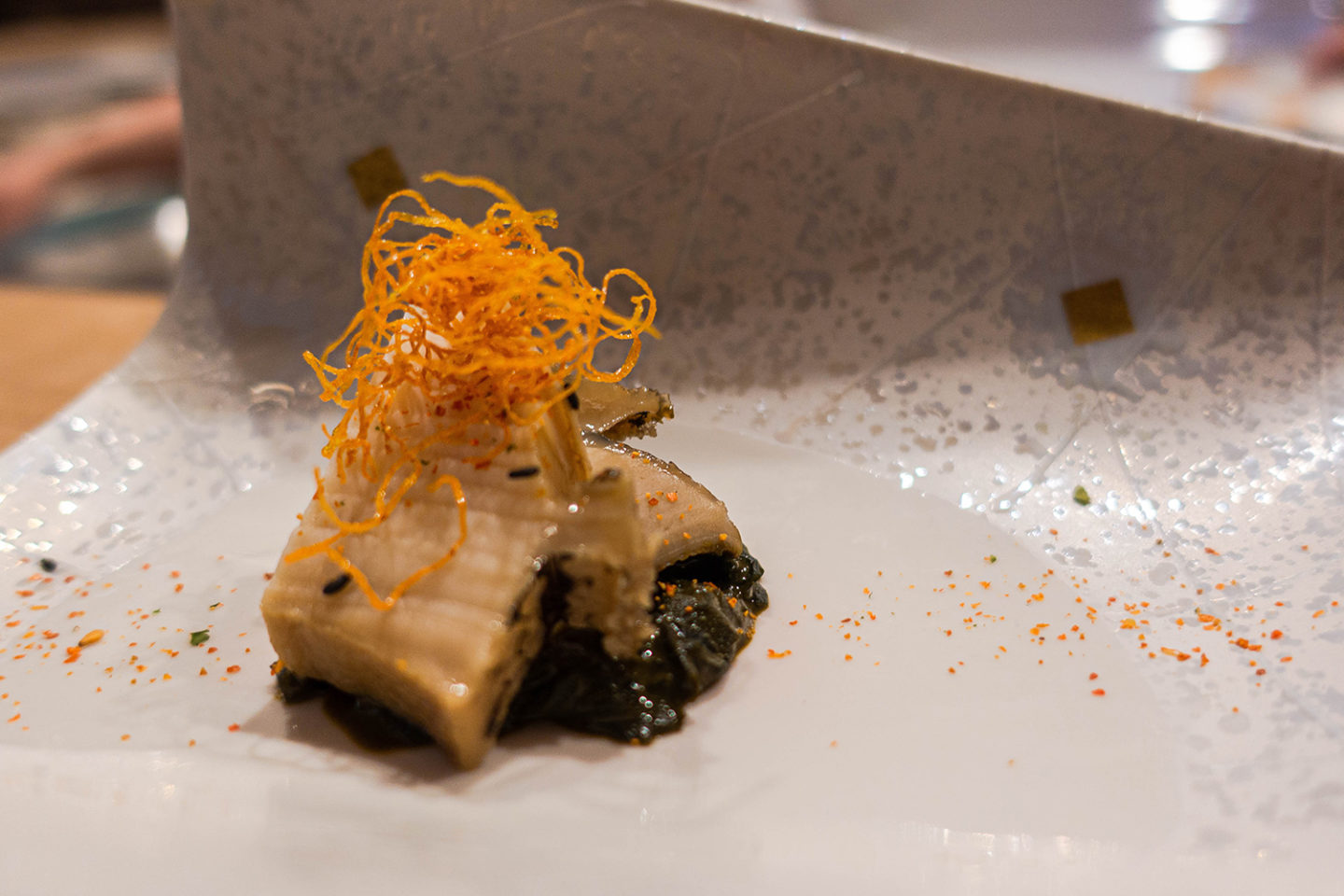
Back to the original course, we had the mushi awabi, a steamed abalone with saikyo miso. The abalone was a thick cut with a slightly chewy and tough texture so we’re guessing the steam time was somewhere between 2-4 hours. It had a mild taste, enhanced by the salty seaweed and miso sauce collecting at the bottom.
The shredded carrot was very delicate, adding a crunchy element to the bite. Overall it was good and we rated it above average on the delicious scale.
The shredded carrot was very delicate, adding a crunchy element to the bite. Overall it was good and we rated it above average on the delicious scale.
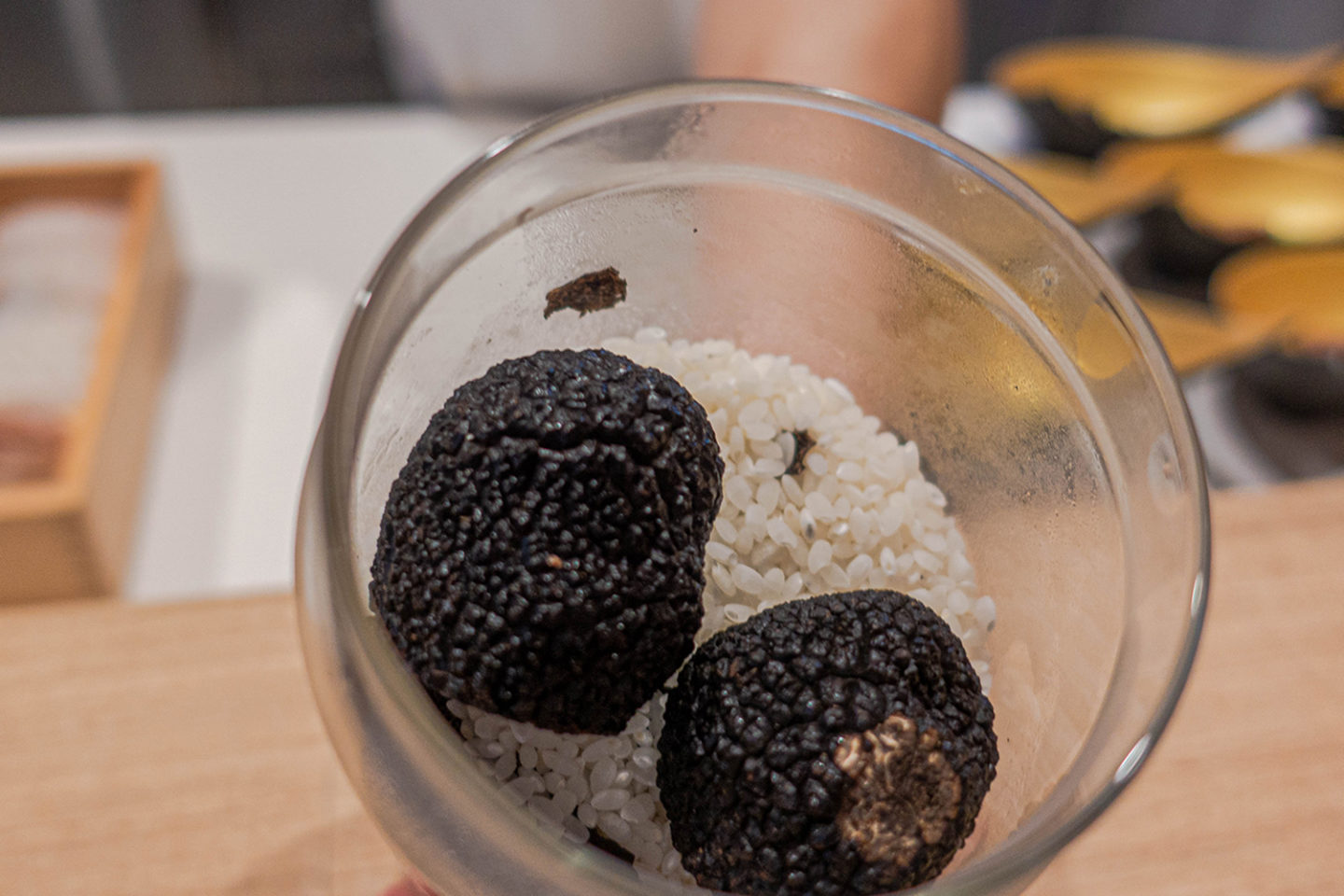
Oooft, the aroma of these Spanish truffles was heavenly 😍. This was the last batch of truffles before the commencement of the Australian season. It cost us an extra $30 each to add this luxurious ingredient and supplementary foie gras to this full blood wagyu strip loin MB9+.
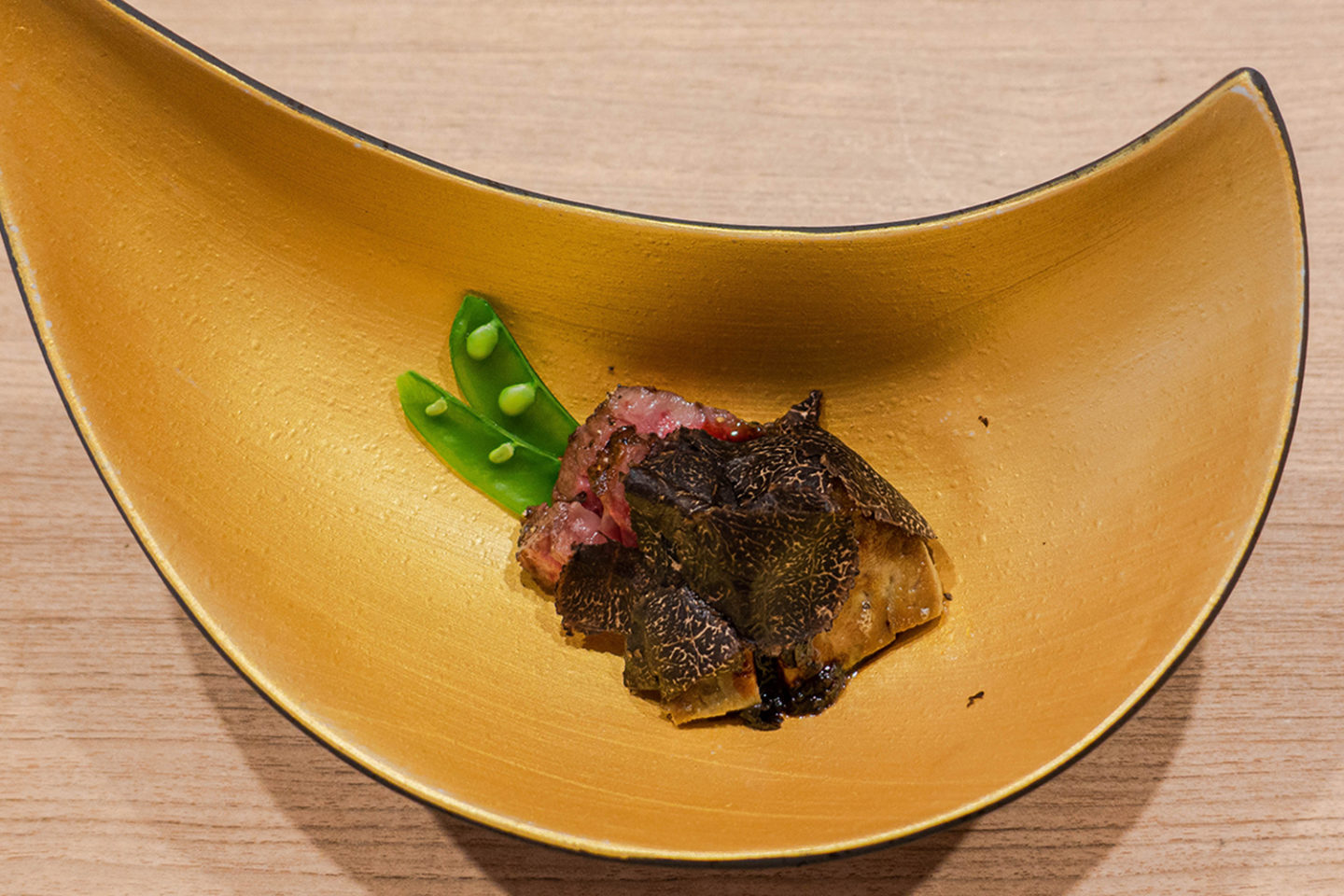
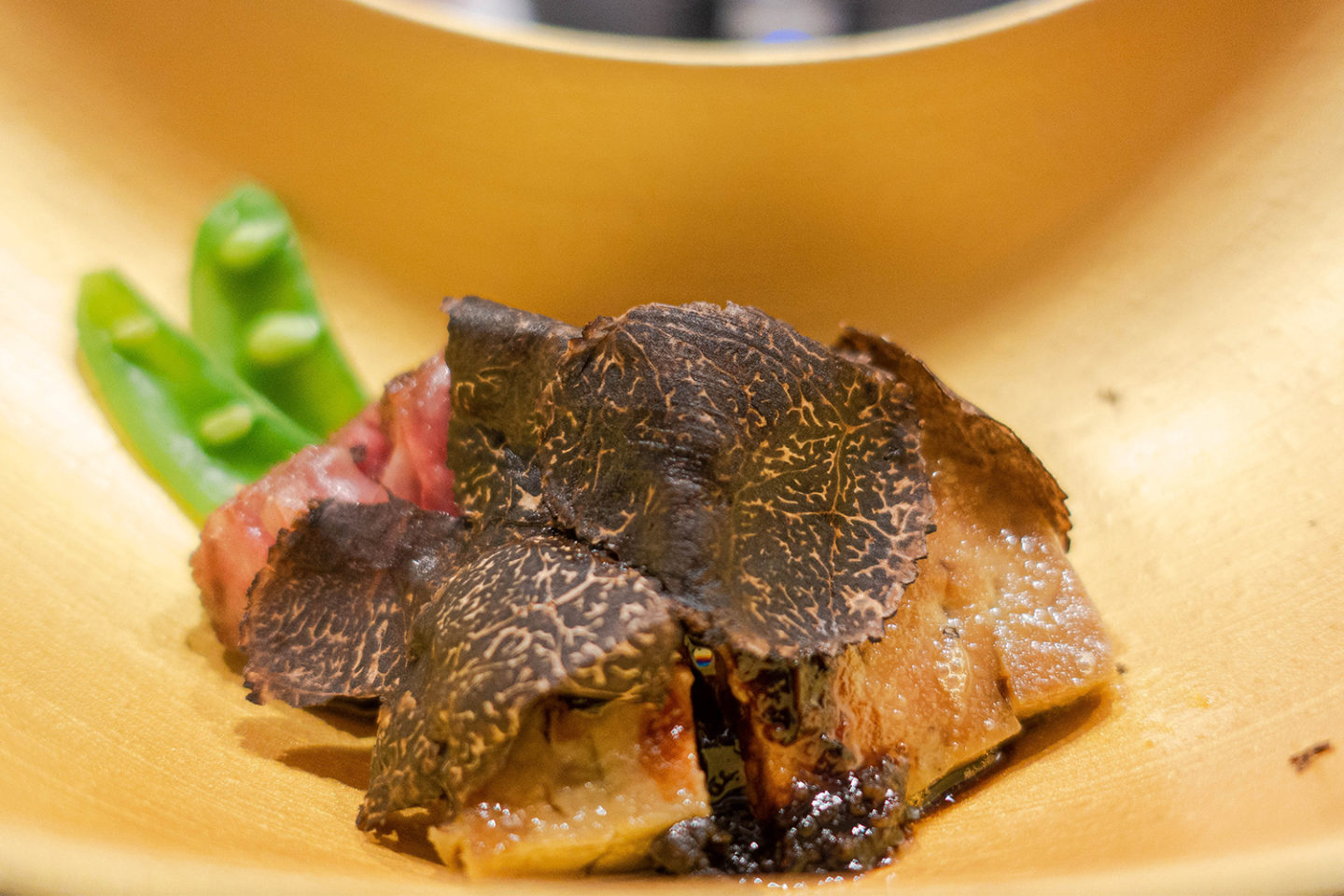
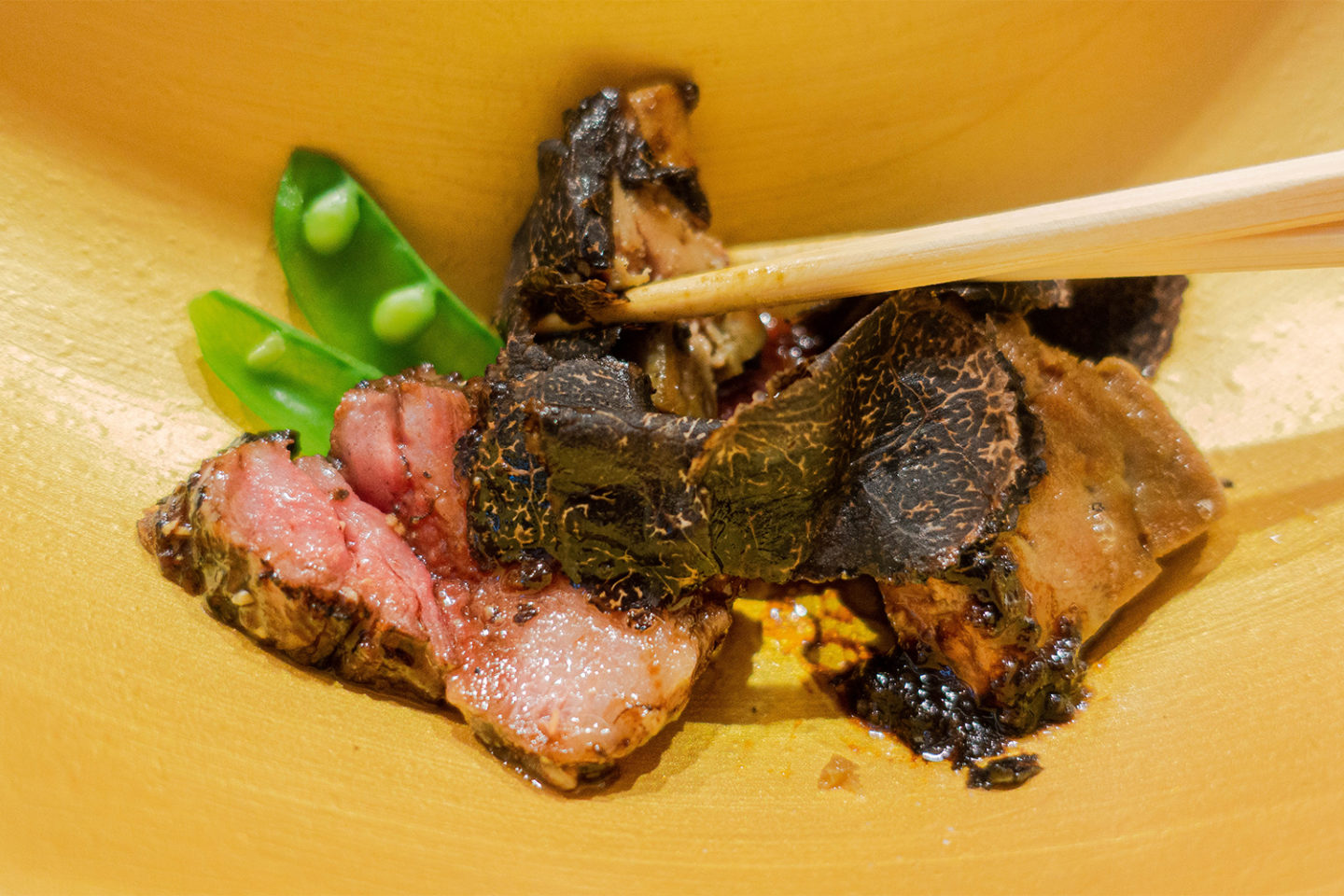
WOW! So worth it! Our wallets cried a little but our tastebuds were singing 🥰. The extras were definitely necessary for this boujee bite. Just needed that OOMPH!, ya know?
The truffle had a very strong floral aroma, almost sweeter than the Australian truffles. On the piece of wagyu, it wrapped the meat in a beautiful embrace with its delicate, soft layers. Its pungent flavour elevated the wagyu taste. The foie gras was just the right size and thickness, making each bite rich and decadent.
And the wagyu was definitely top of the range, with the most tender texture, melt-in-your-mouth feels and seasoned beefy flavours. The pea balanced everything with its earthy crunch.
The truffle had a very strong floral aroma, almost sweeter than the Australian truffles. On the piece of wagyu, it wrapped the meat in a beautiful embrace with its delicate, soft layers. Its pungent flavour elevated the wagyu taste. The foie gras was just the right size and thickness, making each bite rich and decadent.
And the wagyu was definitely top of the range, with the most tender texture, melt-in-your-mouth feels and seasoned beefy flavours. The pea balanced everything with its earthy crunch.
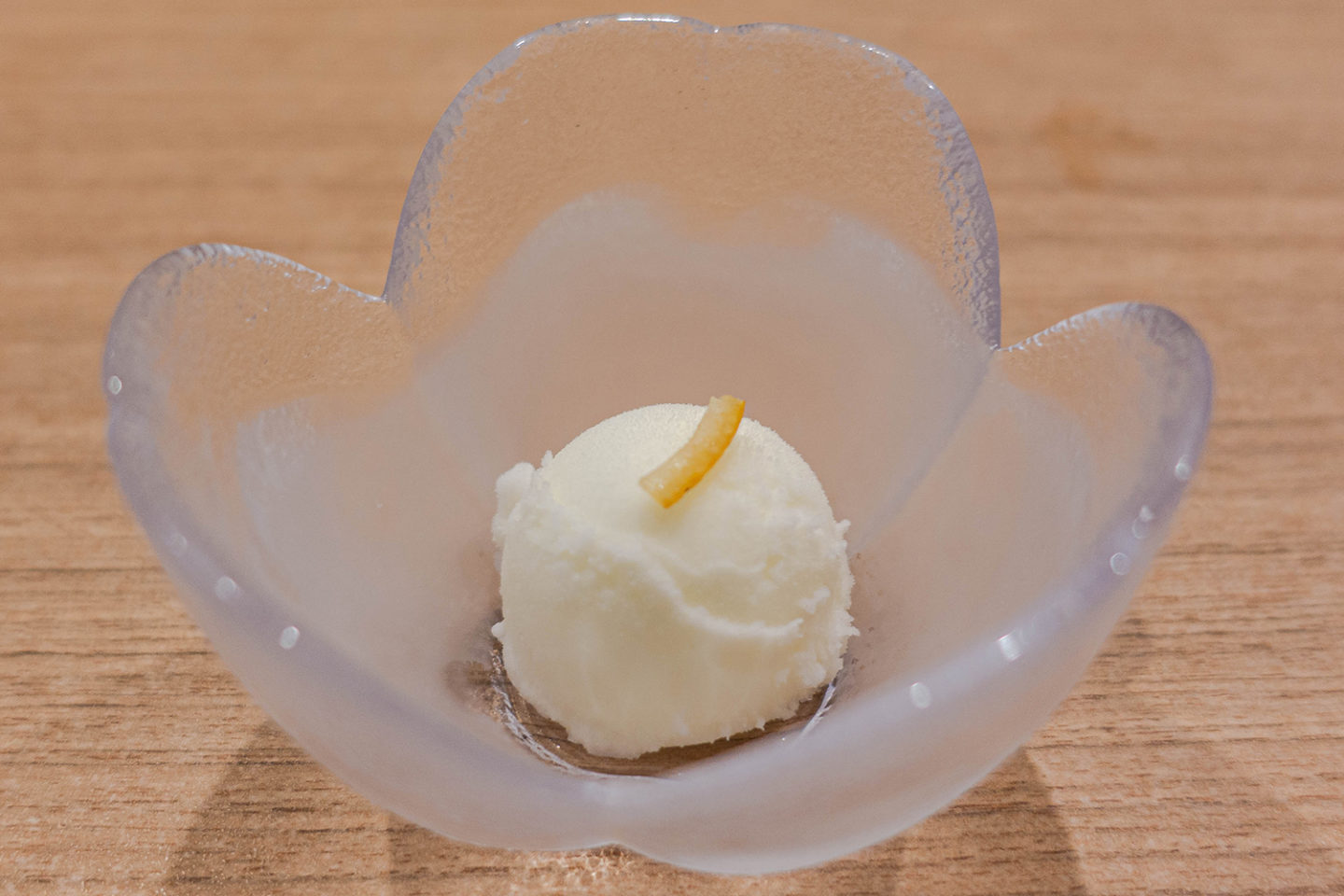
This yuzu sorbet was our palate cleanser but it tasted like a refreshing dessert 😄.
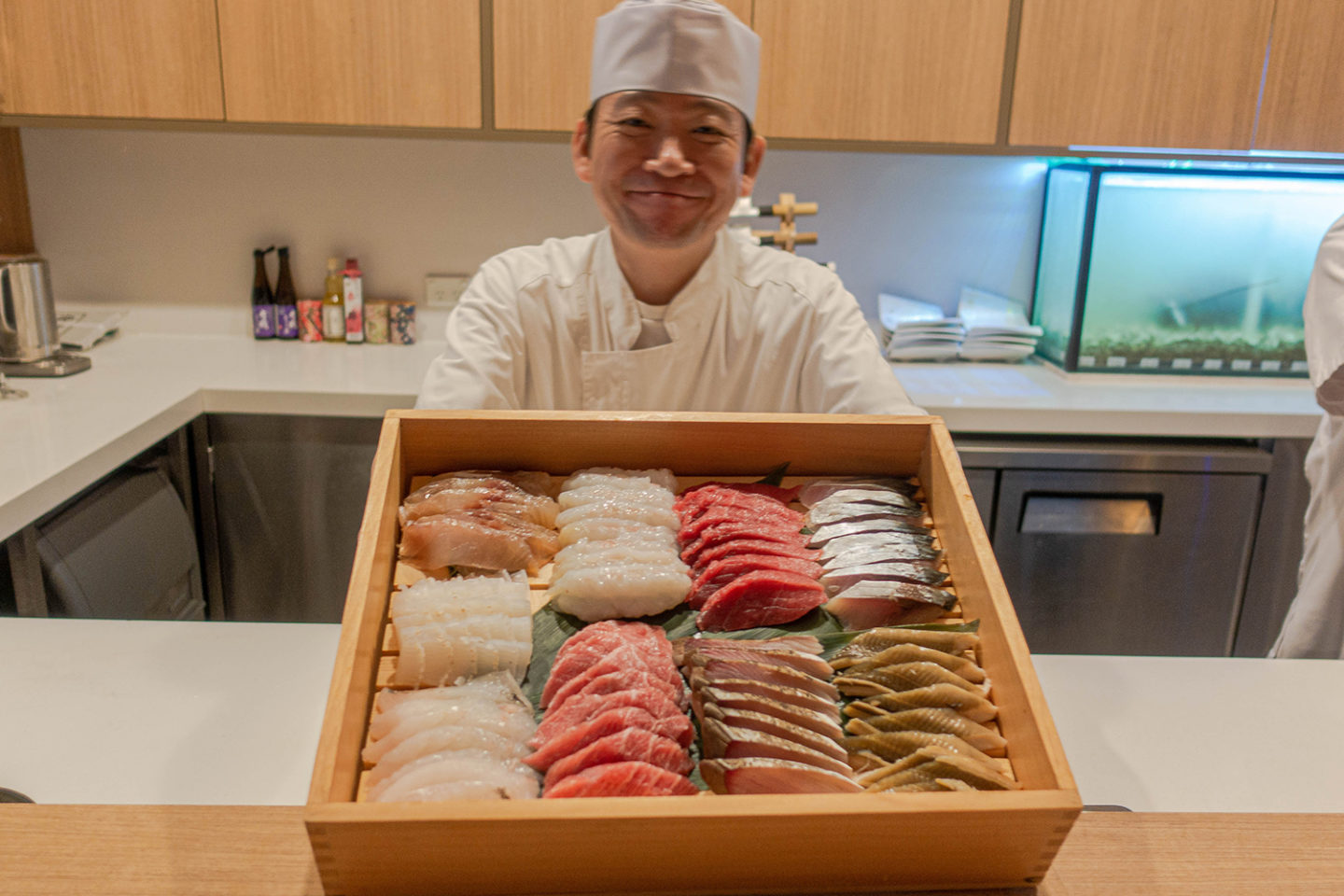
My camera is starting to fail me with these blurry shots. Time for an upgrade 🤣.
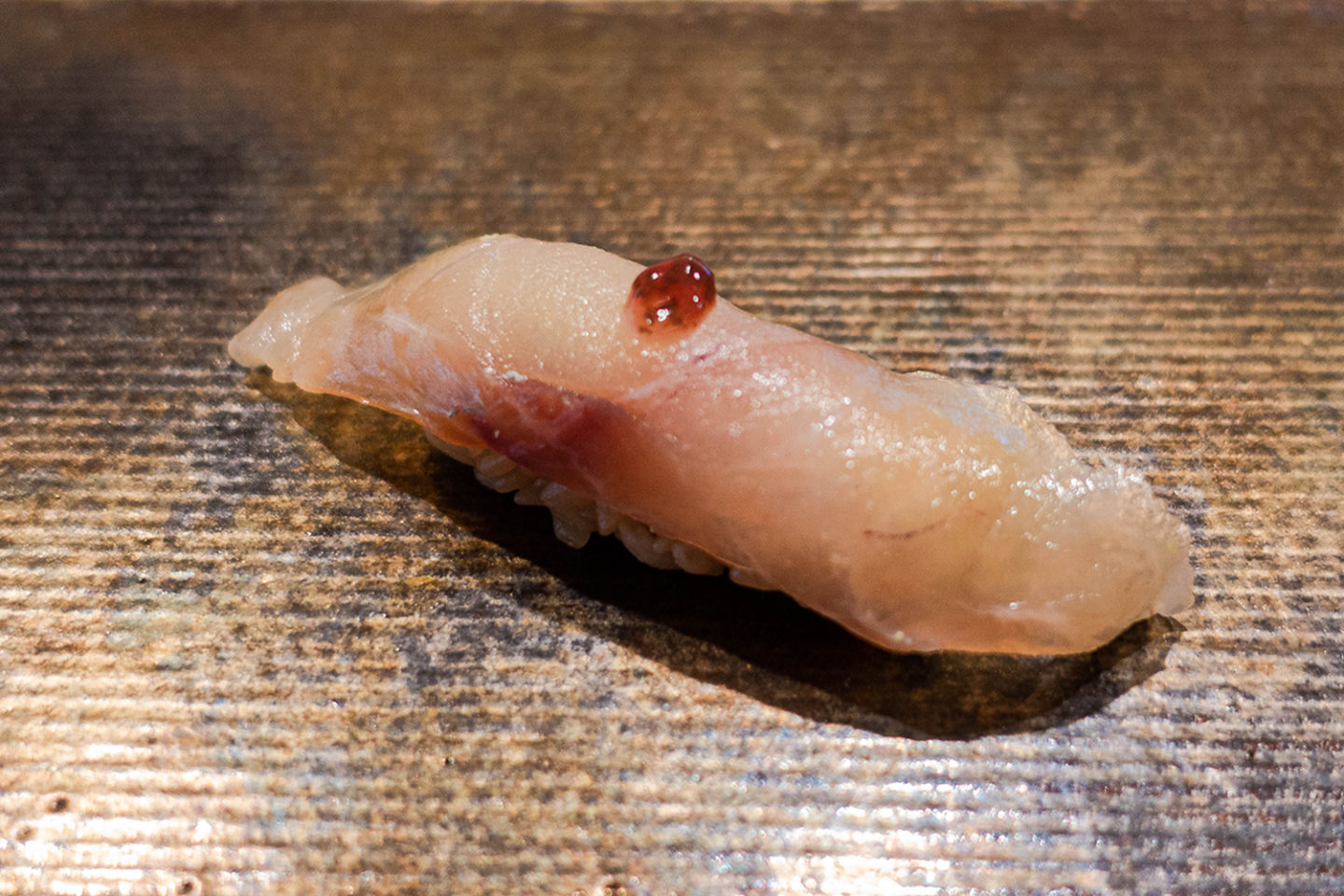
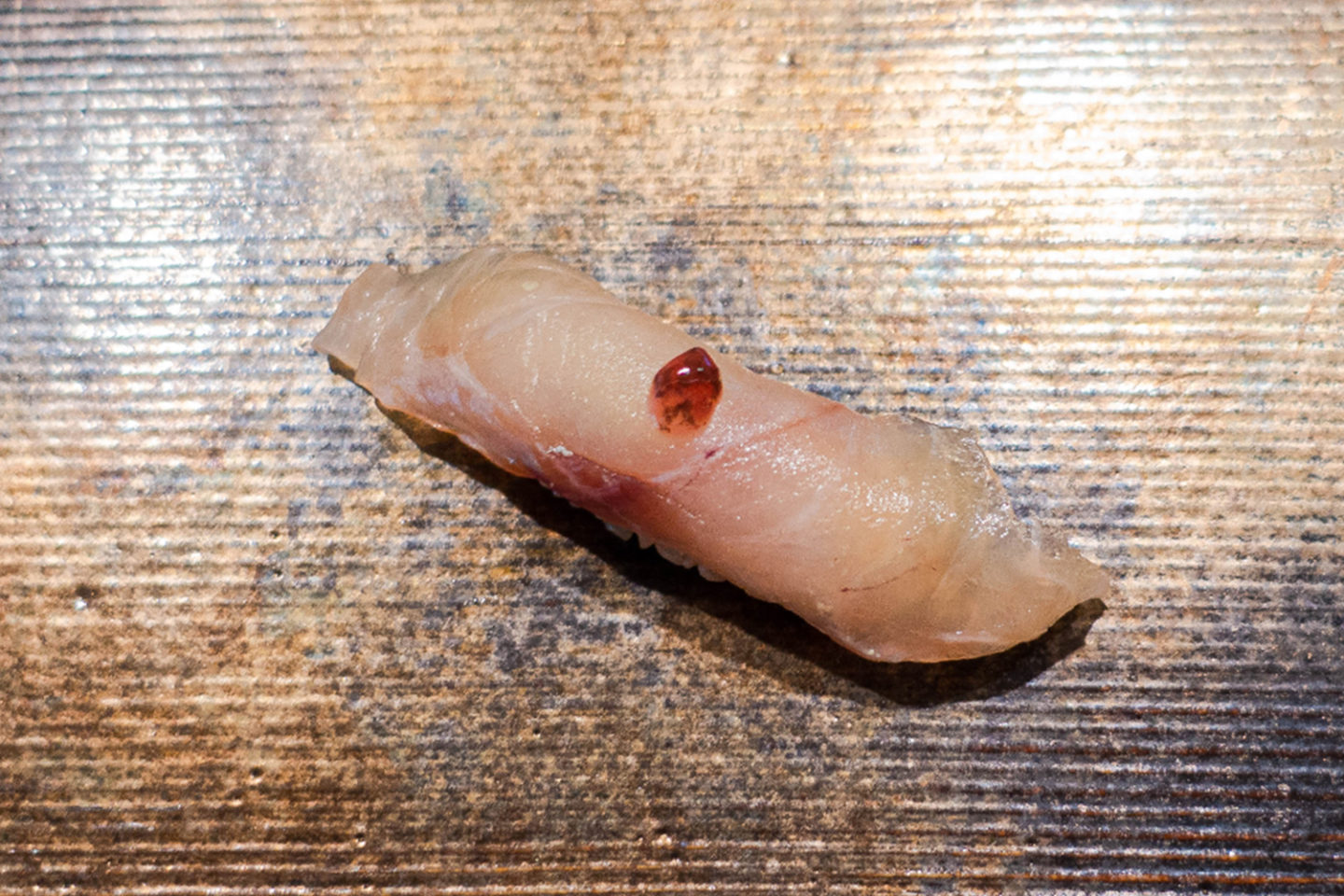
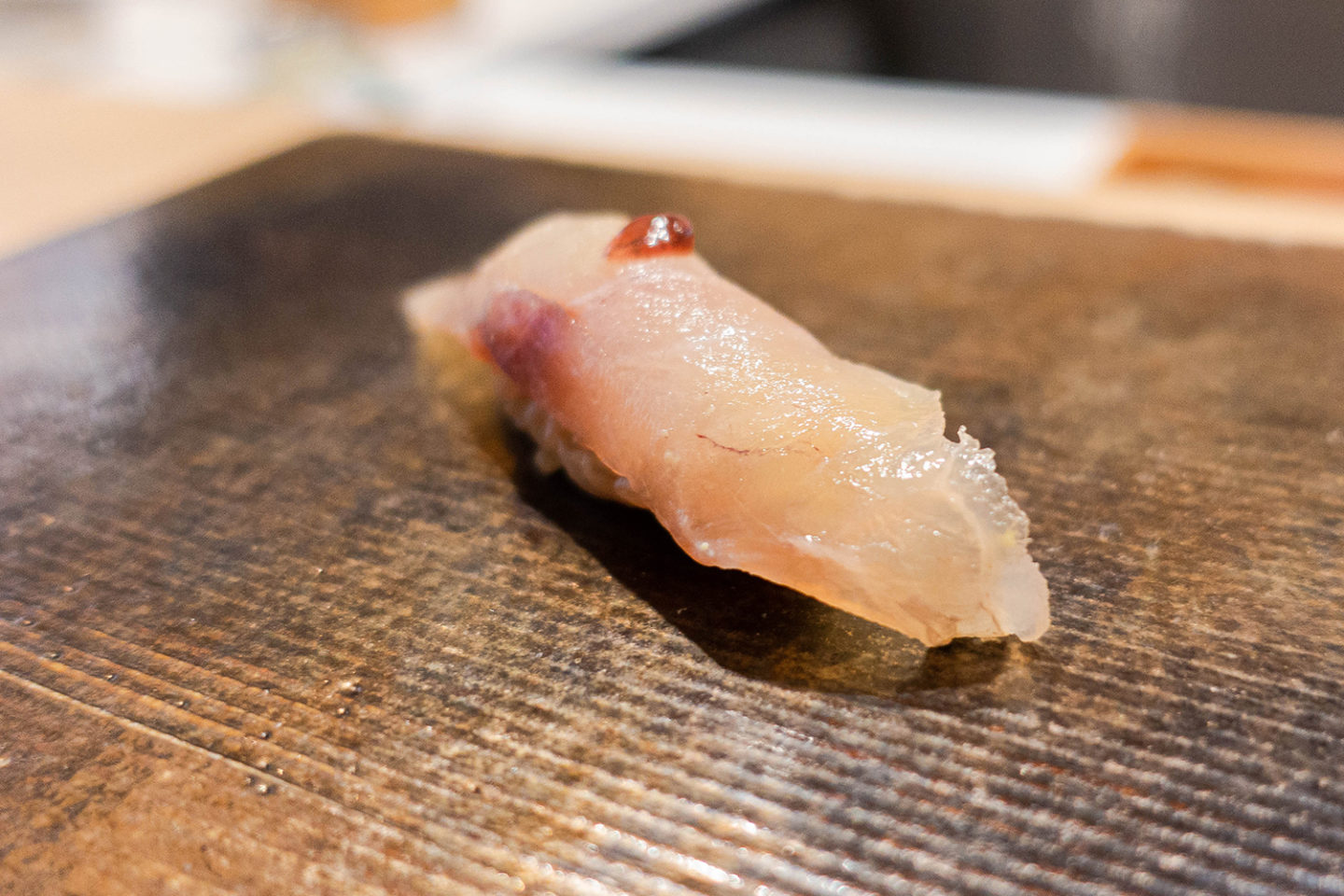
On to our nigiri, the rice was red vinegar rice, cooked slightly al dente. And I didn’t take a photo of the complementary ginger but it was an earthy and sour sliced ginger.
Our first nigiri was the Ghana fish from Coffs Harbour. This had been marinated in kelp and topped with Japanese plum sauce. It was a lean cut fish with an almost jelly-like texture. There was a moderate amount of wasabi hidden between the fish and rice. The nigiri was a lot skinnier and smaller than what we’ve been spoiled to (thanks Chef Sano 😅 LINK) but it was still a sweet and delicious bite.
Our first nigiri was the Ghana fish from Coffs Harbour. This had been marinated in kelp and topped with Japanese plum sauce. It was a lean cut fish with an almost jelly-like texture. There was a moderate amount of wasabi hidden between the fish and rice. The nigiri was a lot skinnier and smaller than what we’ve been spoiled to (thanks Chef Sano 😅 LINK) but it was still a sweet and delicious bite.
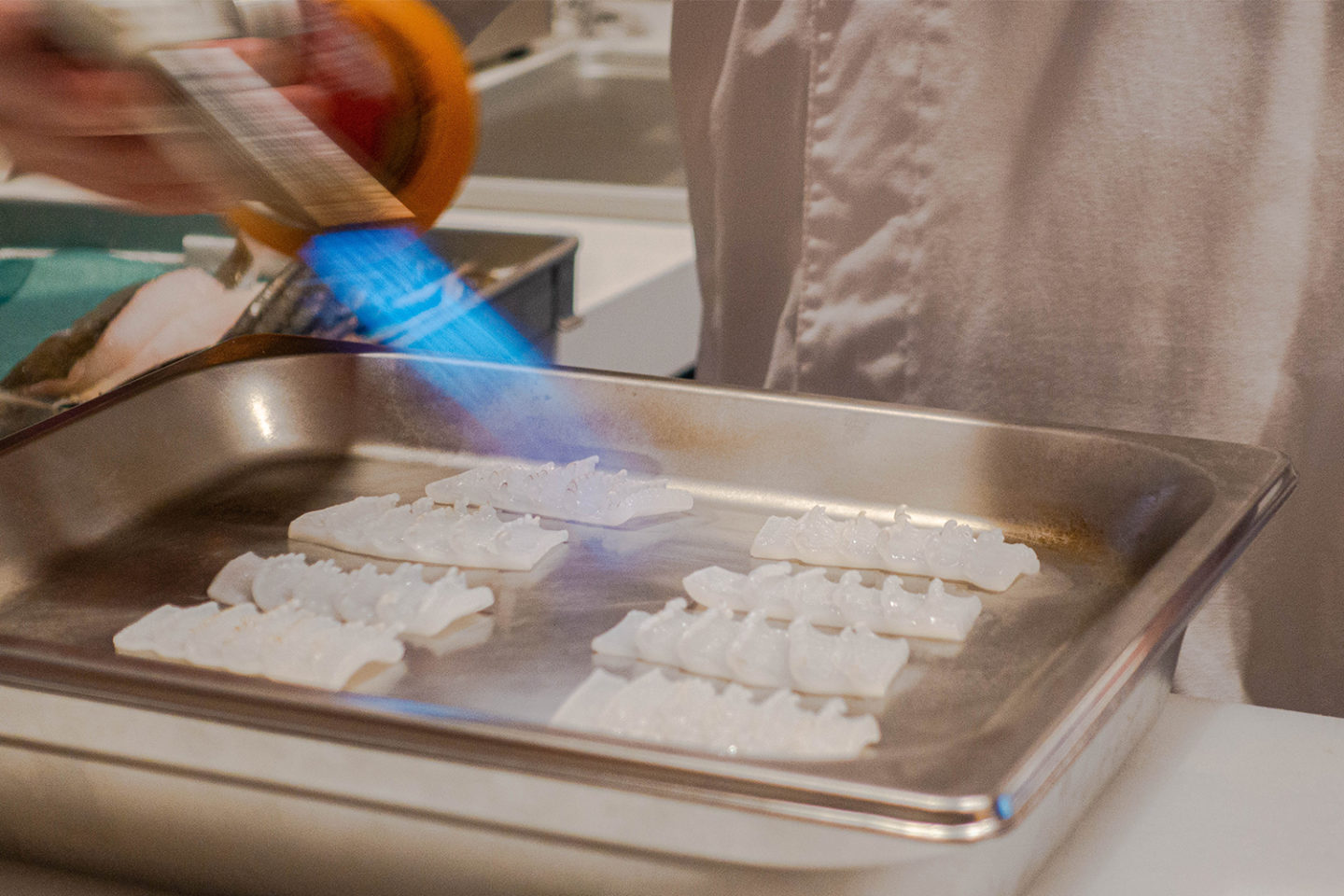
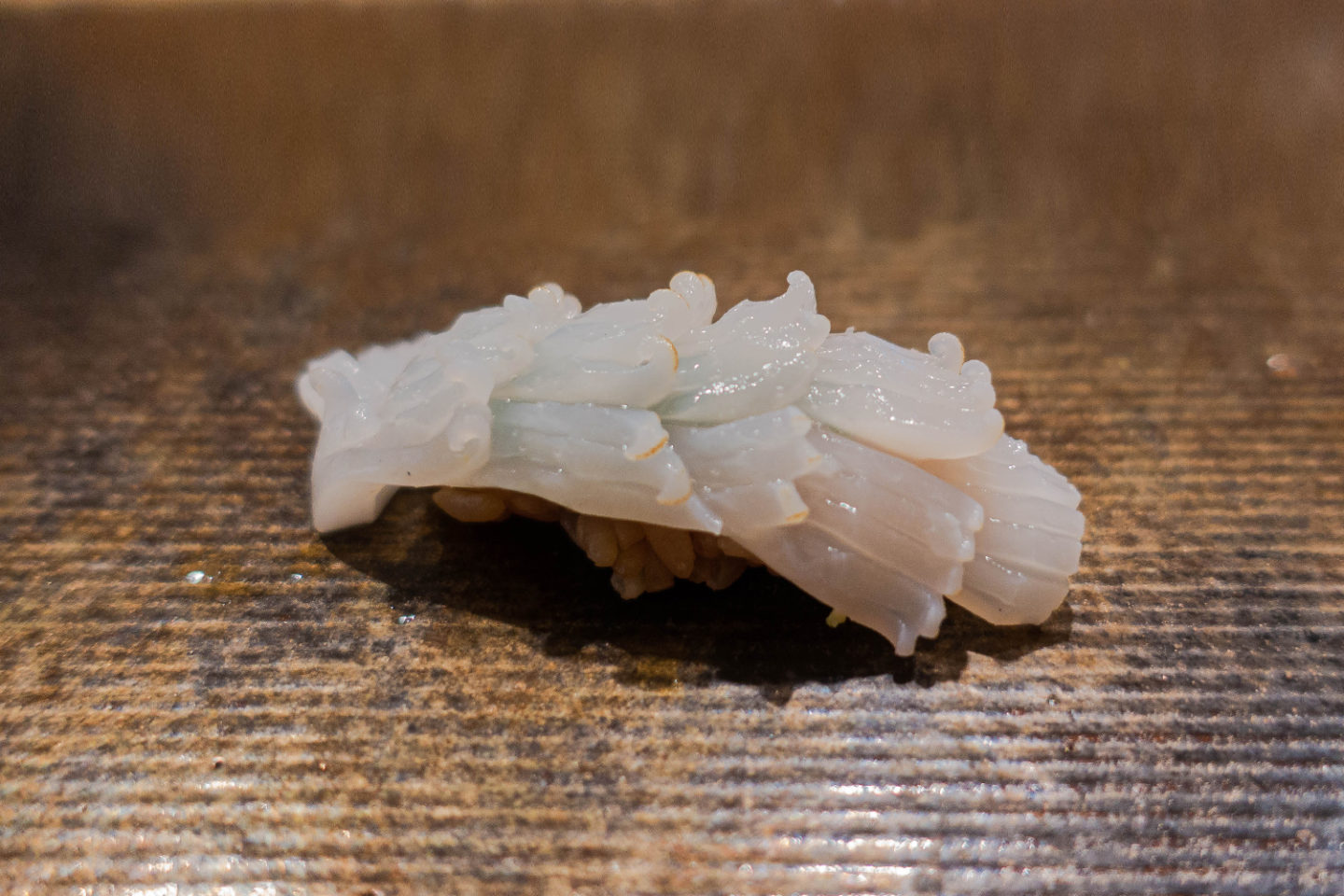
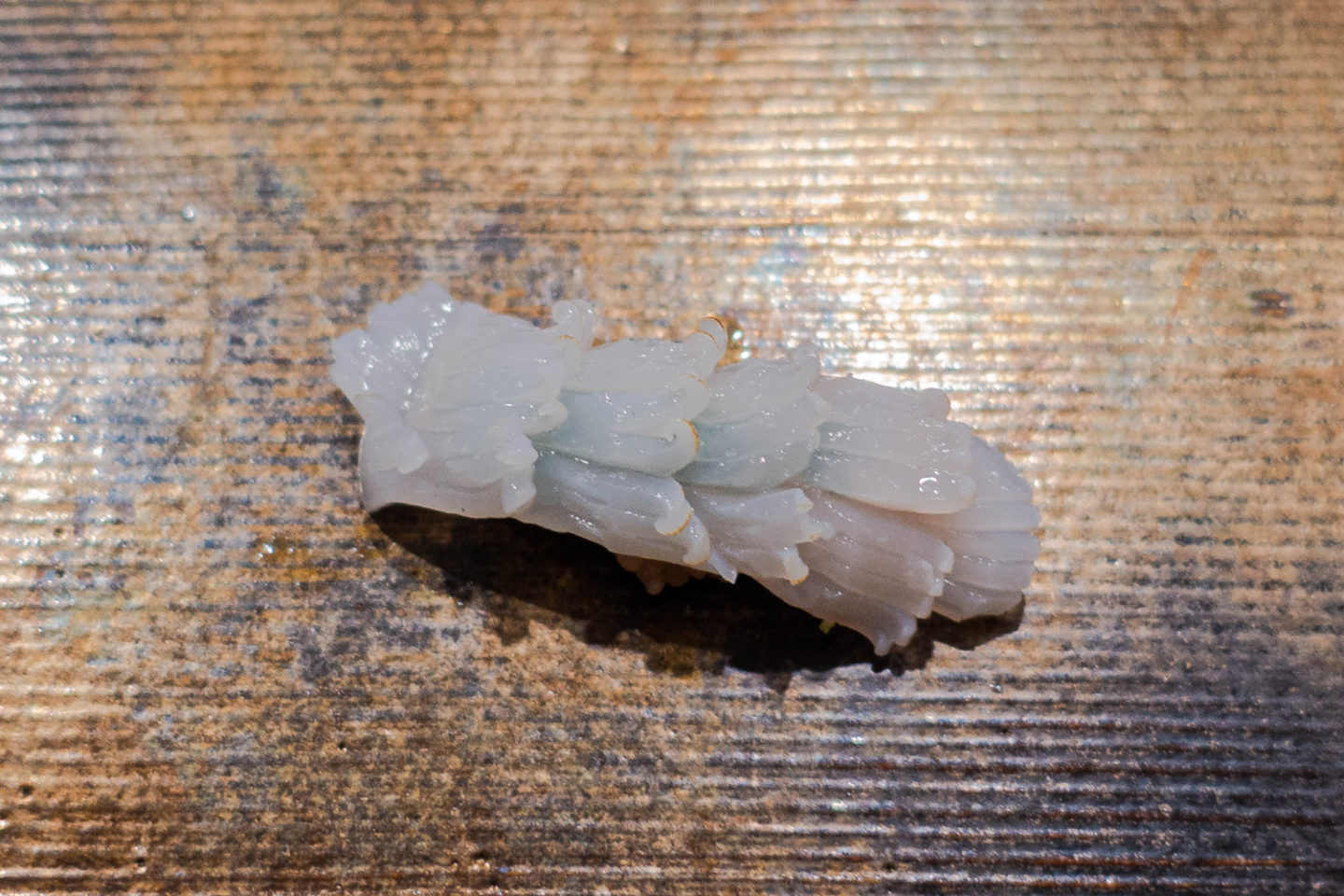
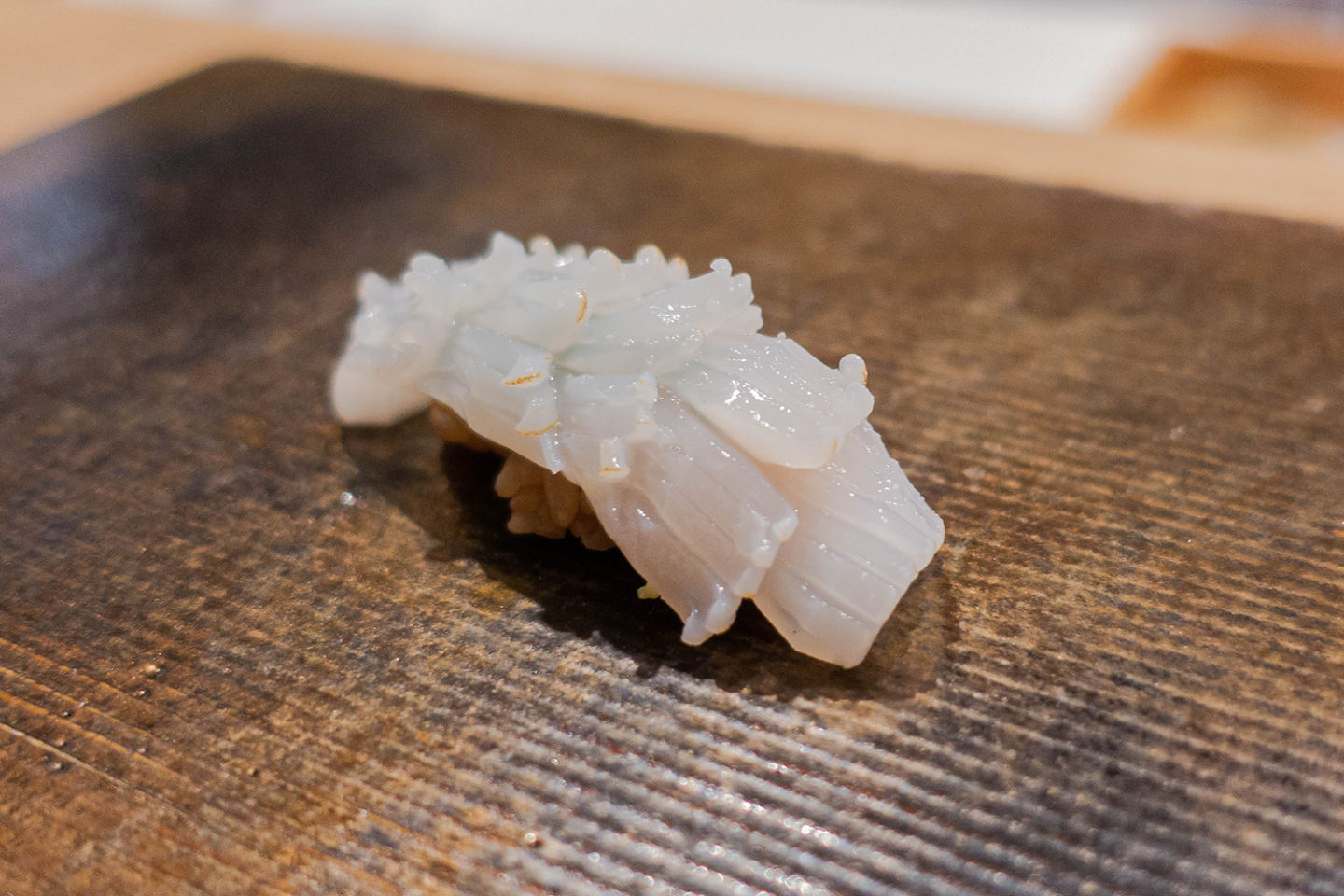
I love watching the skin pull back under the heat 🤤. This was the shiso calamari nigiri. It was very creamy, with that slightly tough squid texture. The torched char added a light smokiness to the flavours of this fish, elevated by the spicy wasabi and shiso leaf hidden underneath.
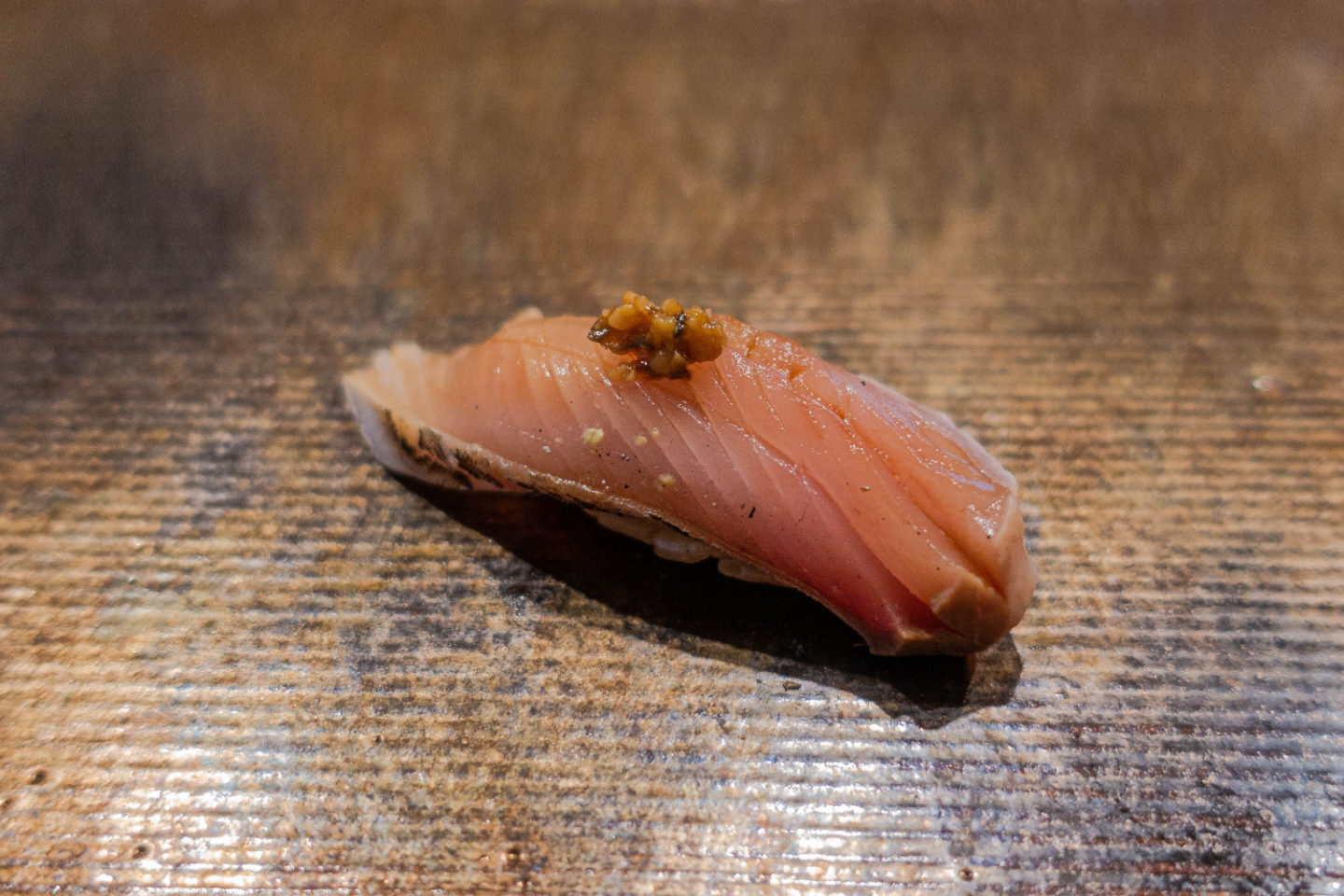
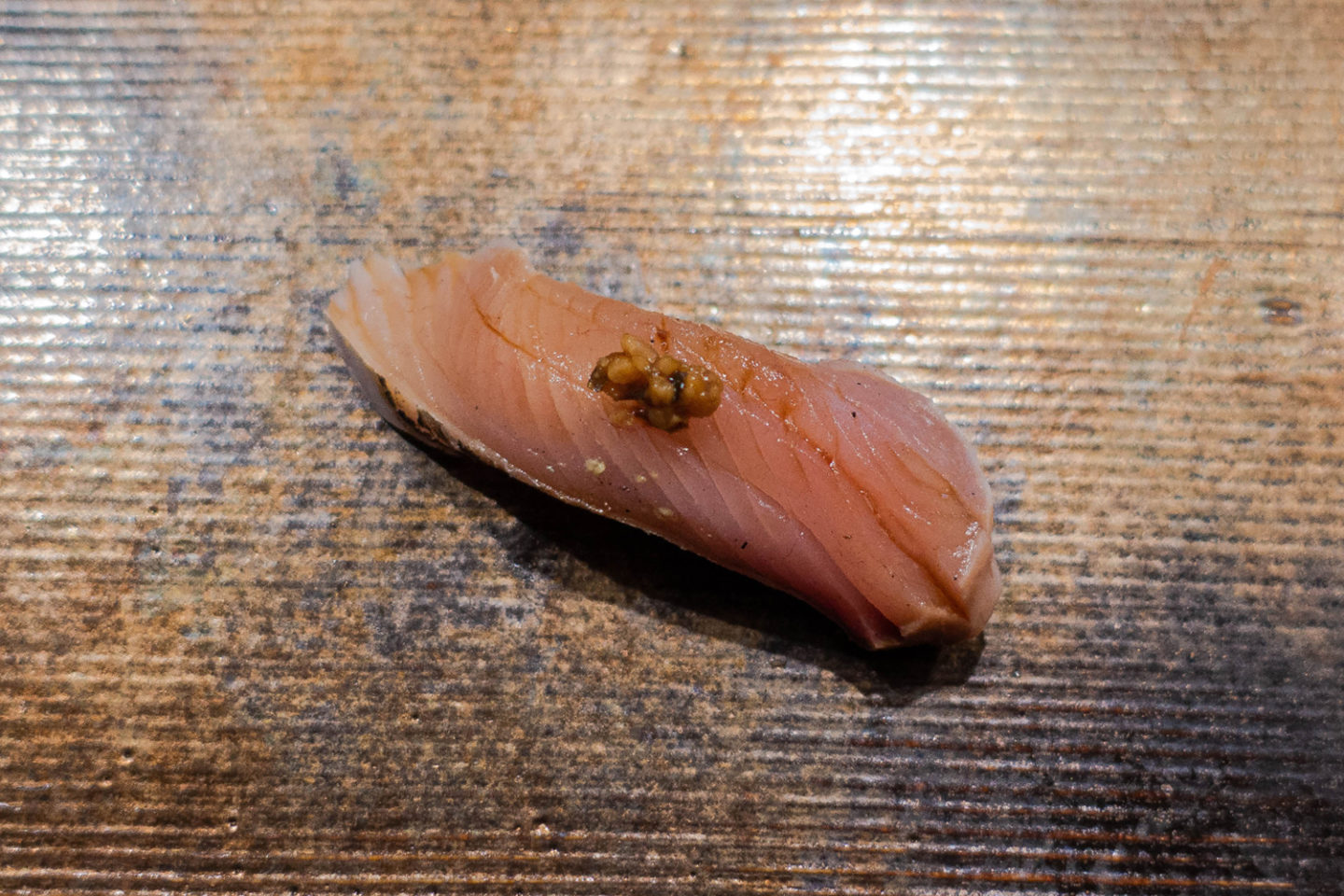
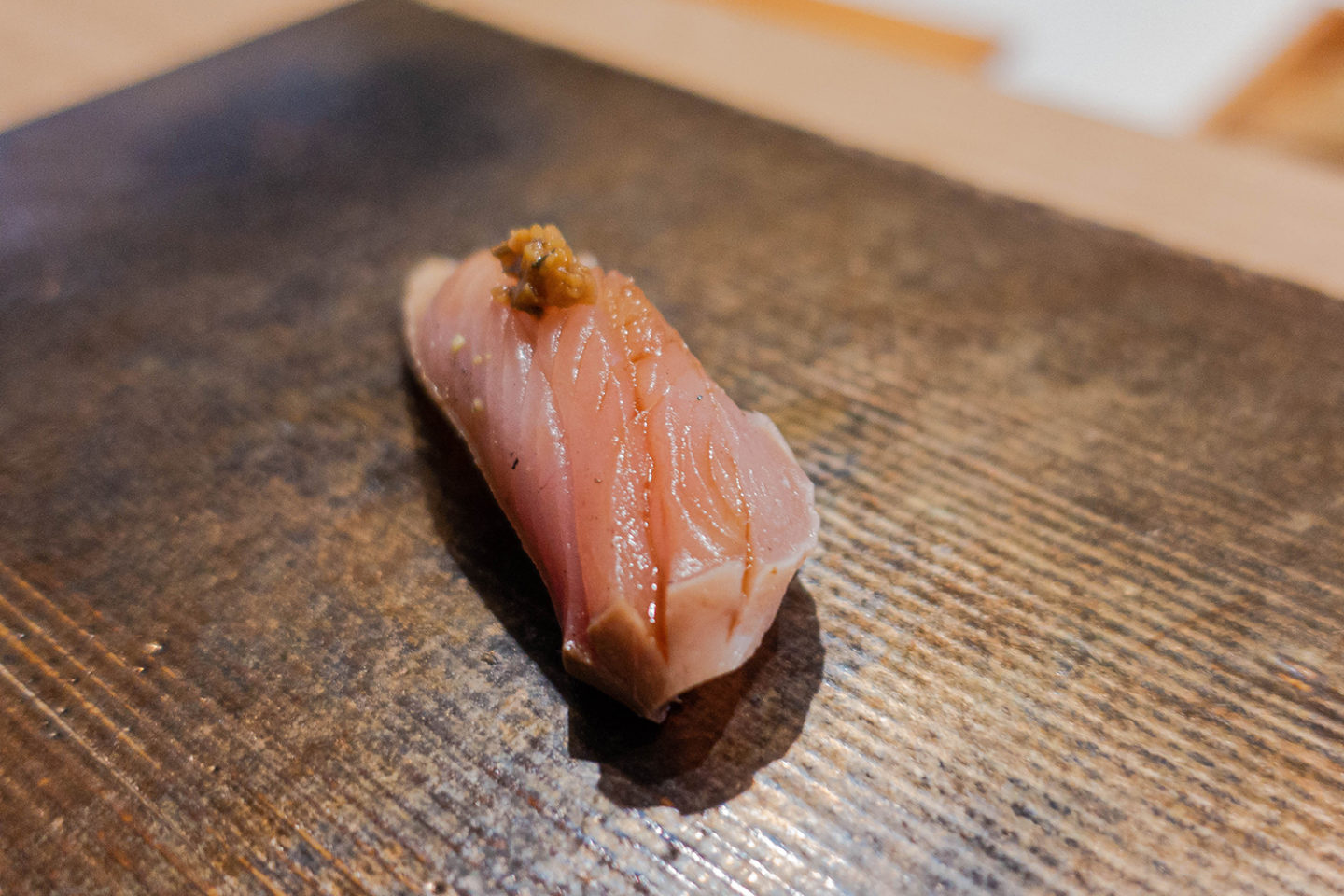
Next was the bonito fish, dry-aged for 3 days and layered over spicy rice malt. The topping was a Hokkaido sambal. This was a nice, mild spice that was tolerable to my basic palate and enhanced the bite.
The fish was surprisingly quite fatty. There was an aromatic taste to it, derived from the rice malt. We couldn’t really pinpoint the aroma but it was sort of earthy. This was one of the most enjoyed nigiri of the lunch, for its creativity and flavours.
The fish was surprisingly quite fatty. There was an aromatic taste to it, derived from the rice malt. We couldn’t really pinpoint the aroma but it was sort of earthy. This was one of the most enjoyed nigiri of the lunch, for its creativity and flavours.
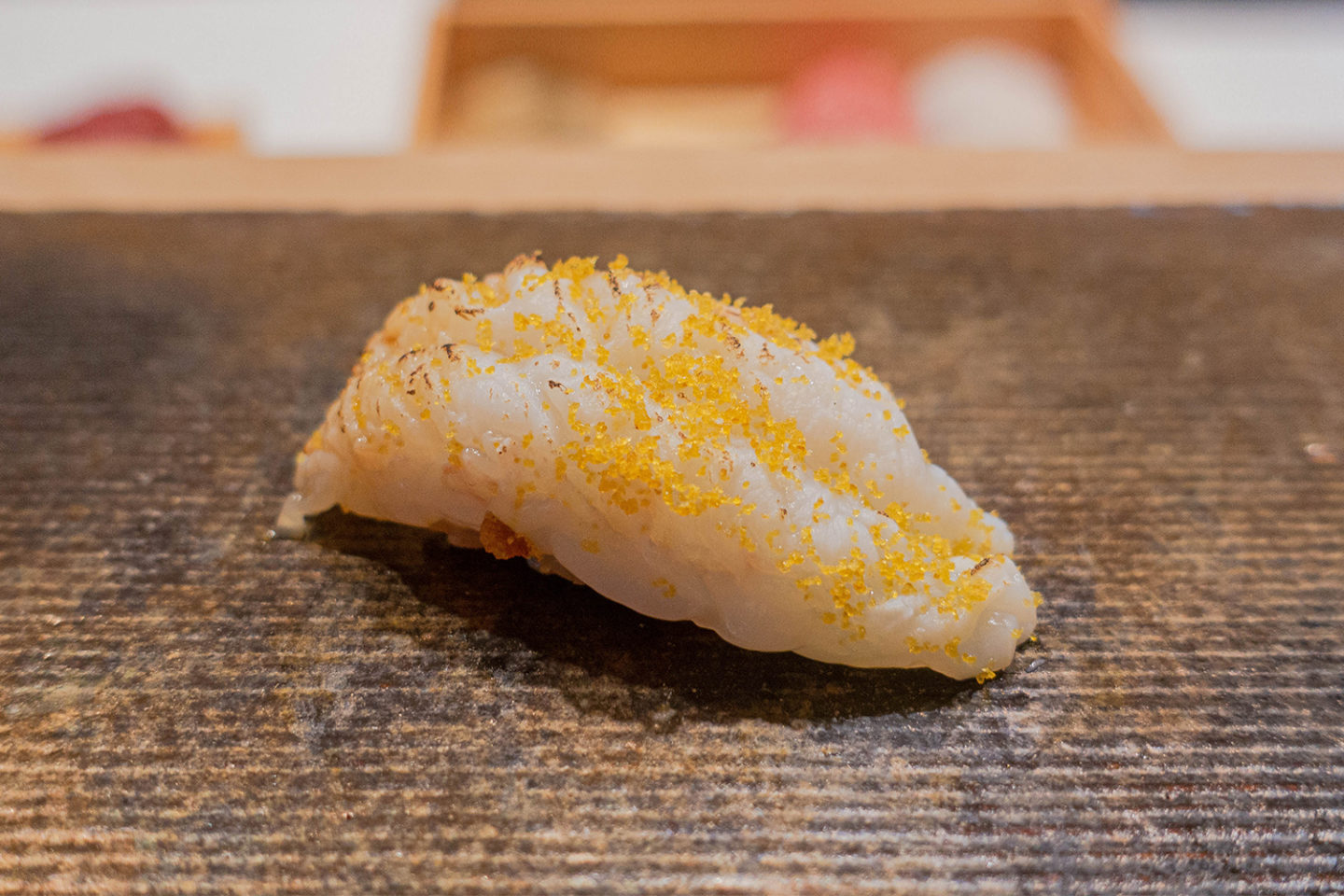
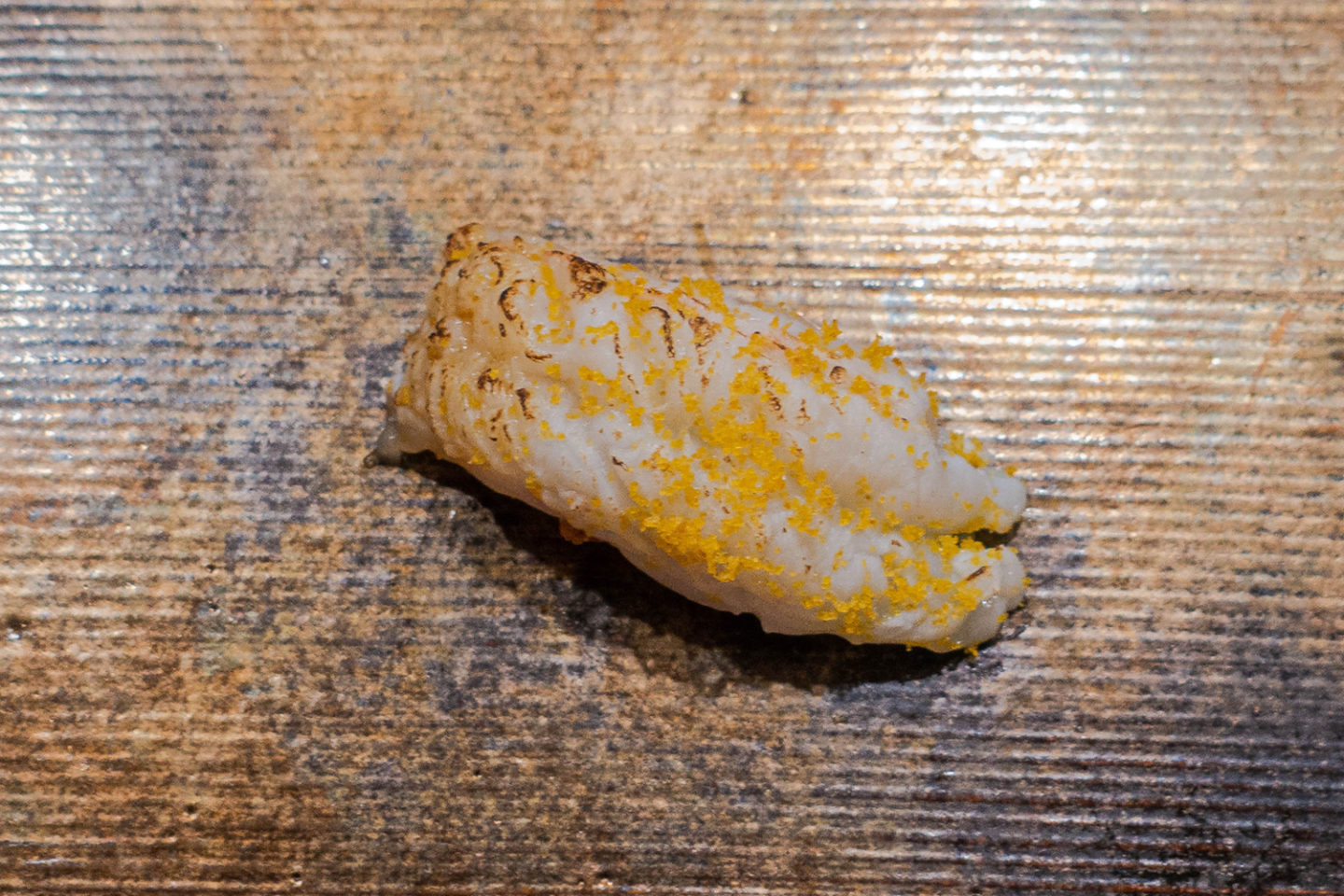
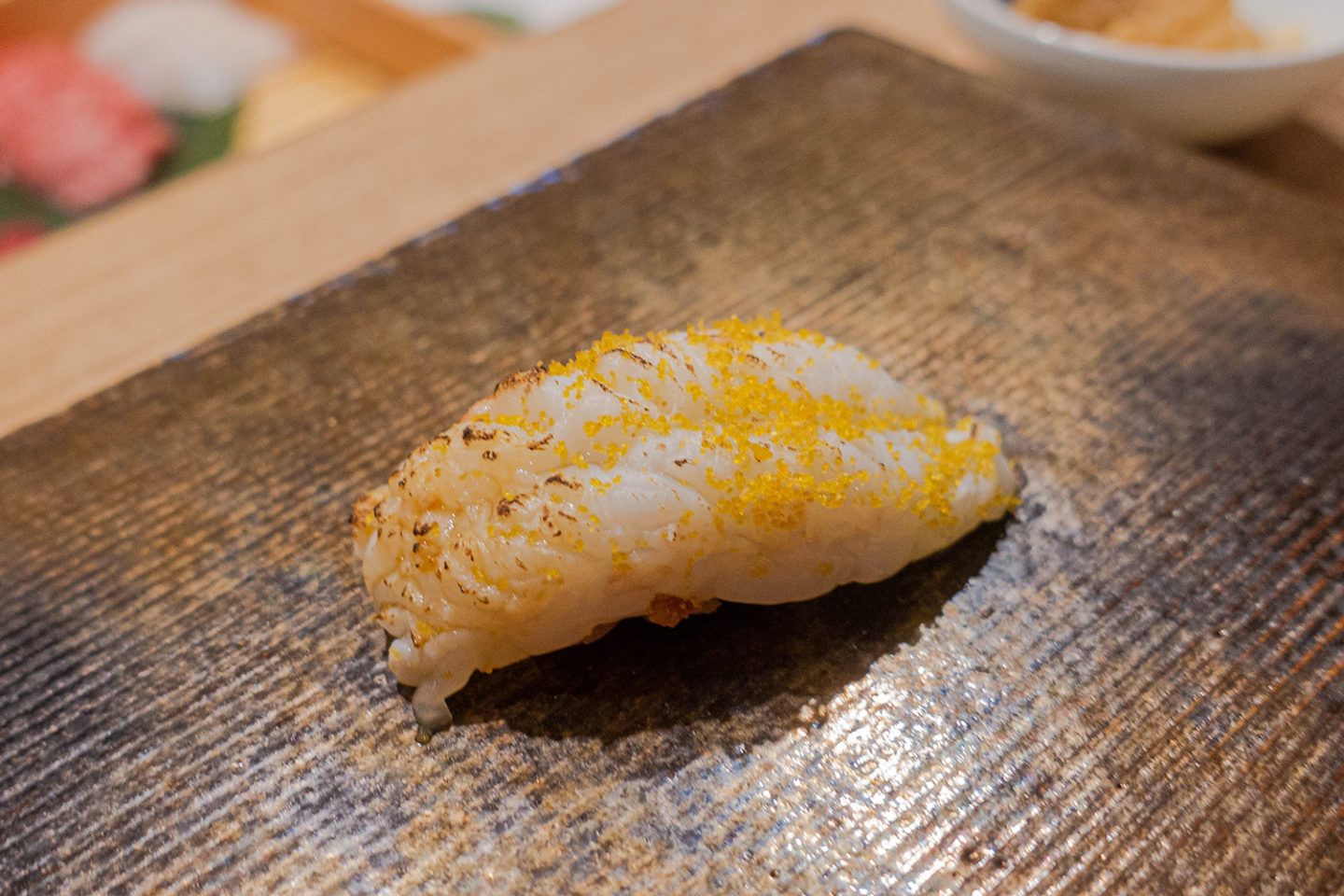
This intricate nigiri was scampi from Japan. I’ve written down ‘furikake’ but I think that was an autocorrect 🤣. This was topped with shaved Italian bottarga (cured fish roe) and dried mullet roe. It was almost indistinguishable in taste because of how fine the texture was.
The scampi was dense and creamy, however, it was more of a dry creaminess than its usual slimy creaminess. Kinda like a lean and clean scampi, if possible LOL 😅. I usually am head over heels for scampi but in this bite, I was left slightly unsatisfied.
The scampi was dense and creamy, however, it was more of a dry creaminess than its usual slimy creaminess. Kinda like a lean and clean scampi, if possible LOL 😅. I usually am head over heels for scampi but in this bite, I was left slightly unsatisfied.
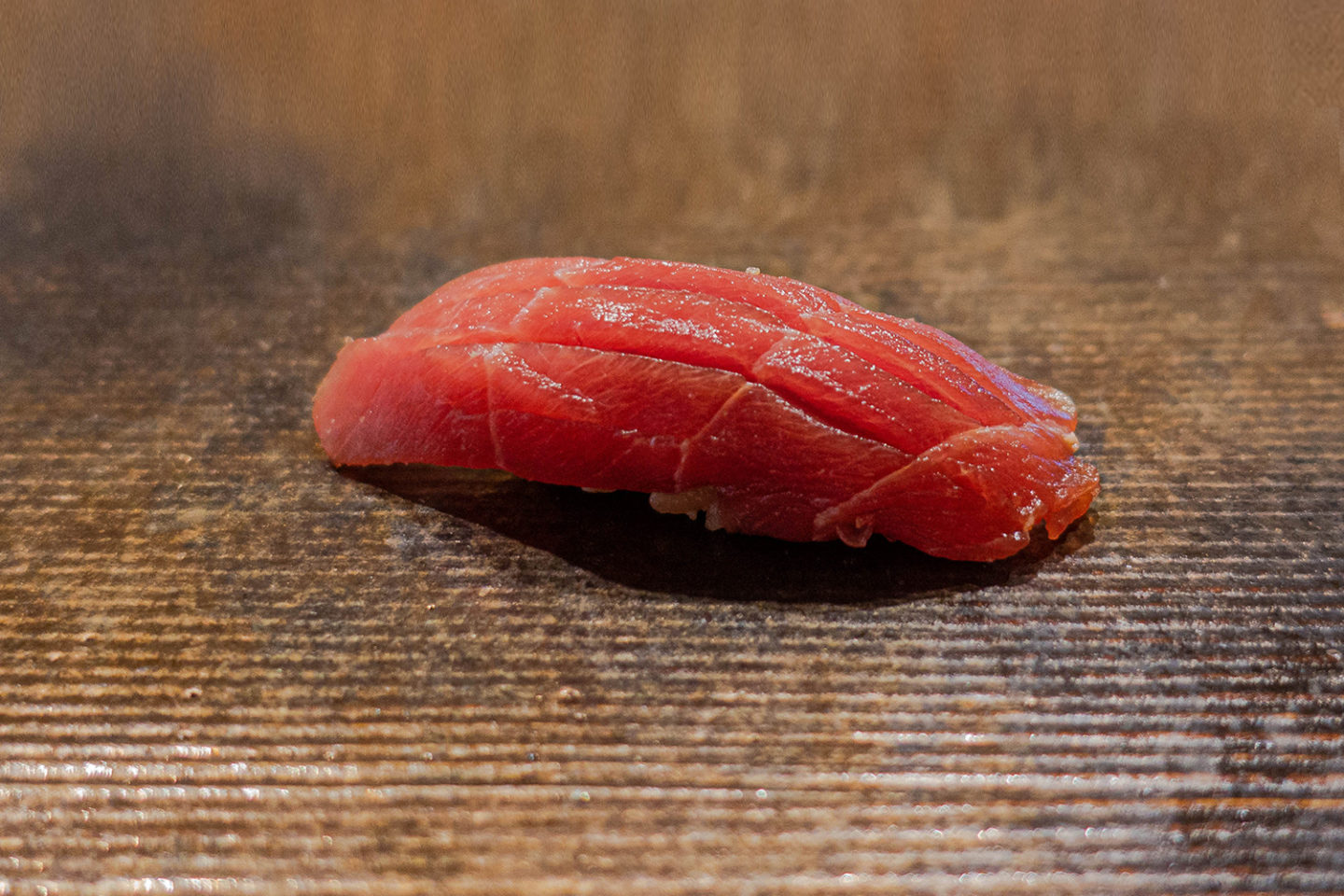
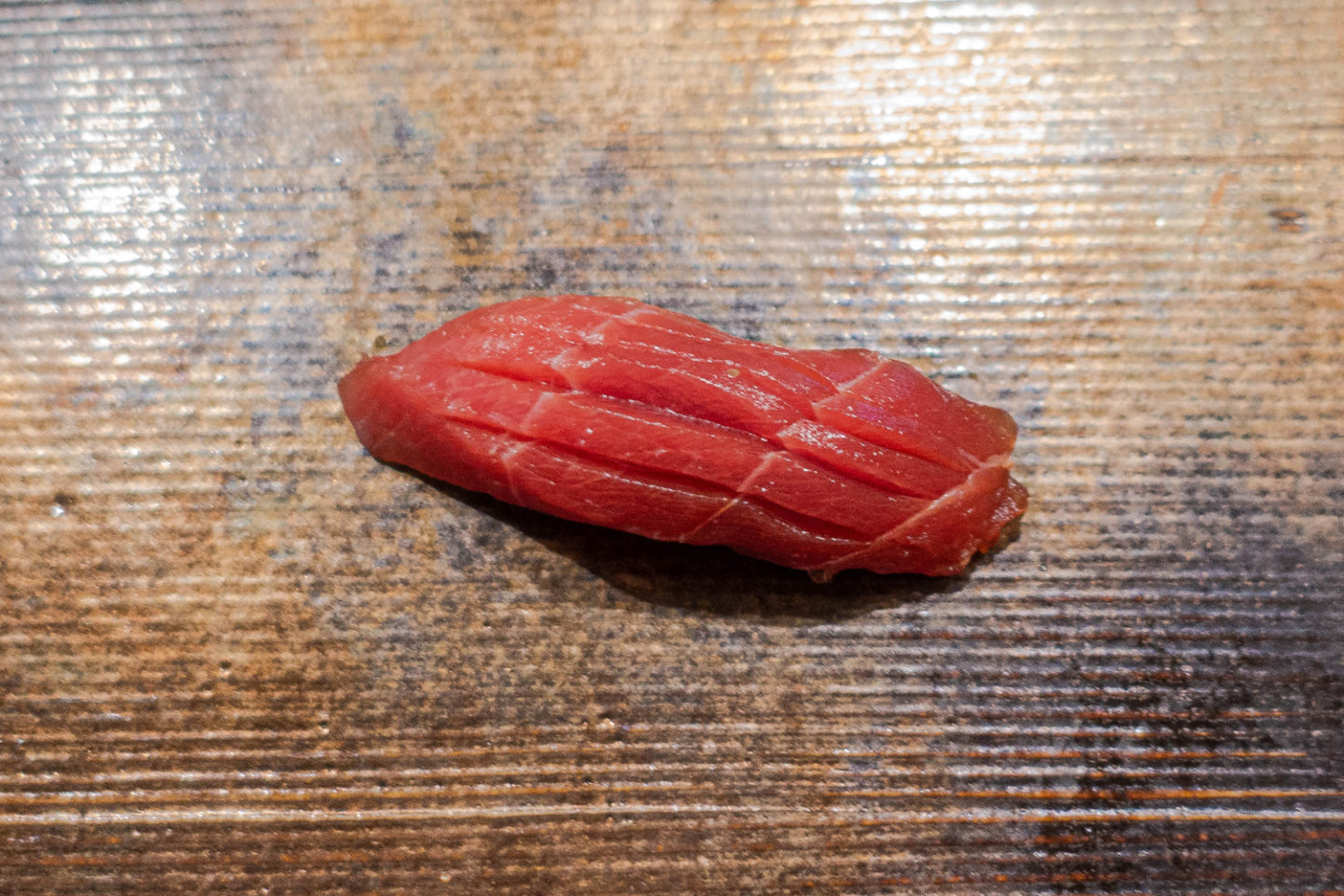
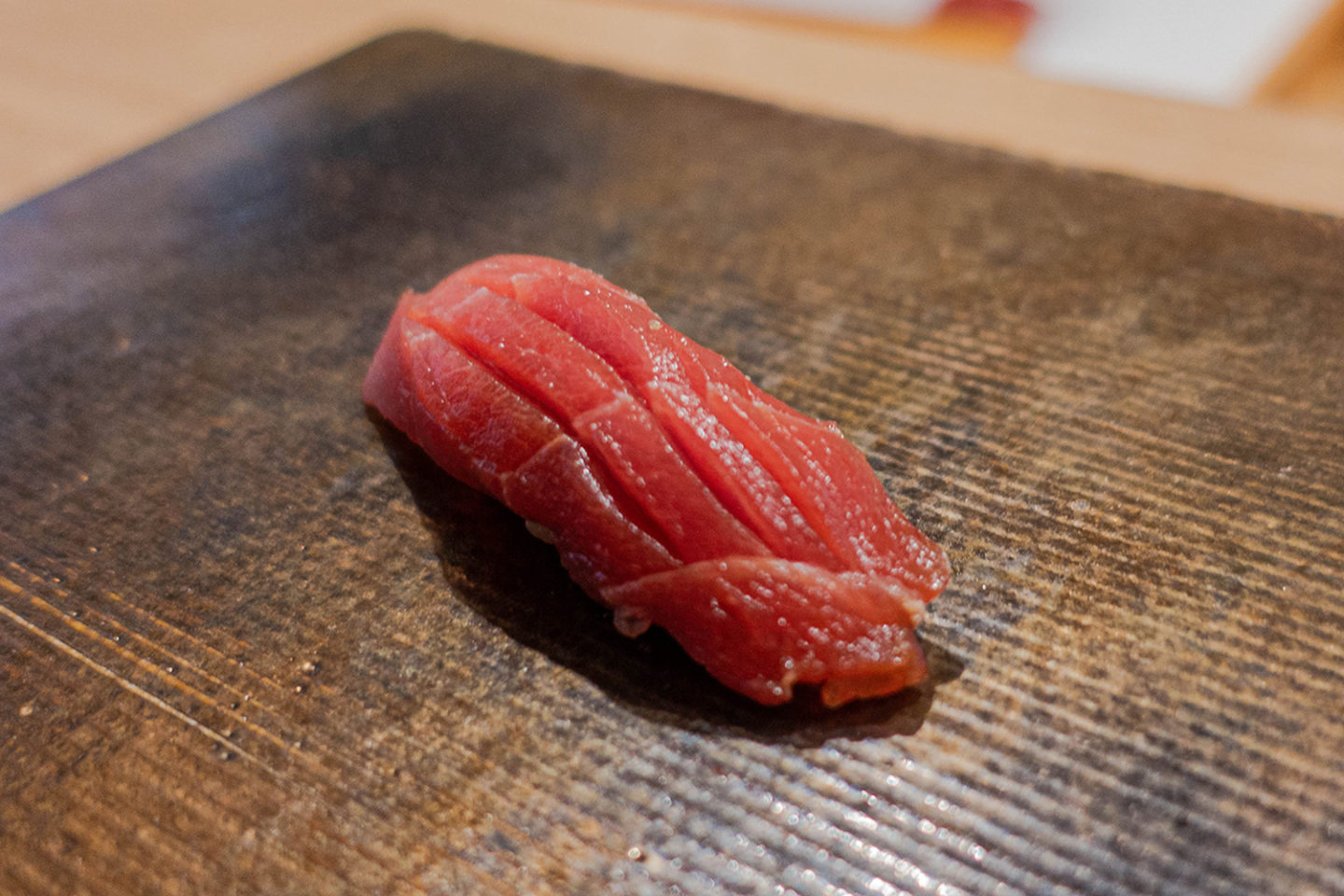
One of the prized pieces of an omakase is the Bluefin tuna, more specifically this akami cut from Tasmania. Akami is the leanest sashimi cut of a tuna, coming from the fish’s back and bottom abdomen. This slice was marinated in soy sauce and topped with bonito flakes. It was indeed a lean and somewhat creamy bite, and not overly fulfilling like its fattier counterparts.
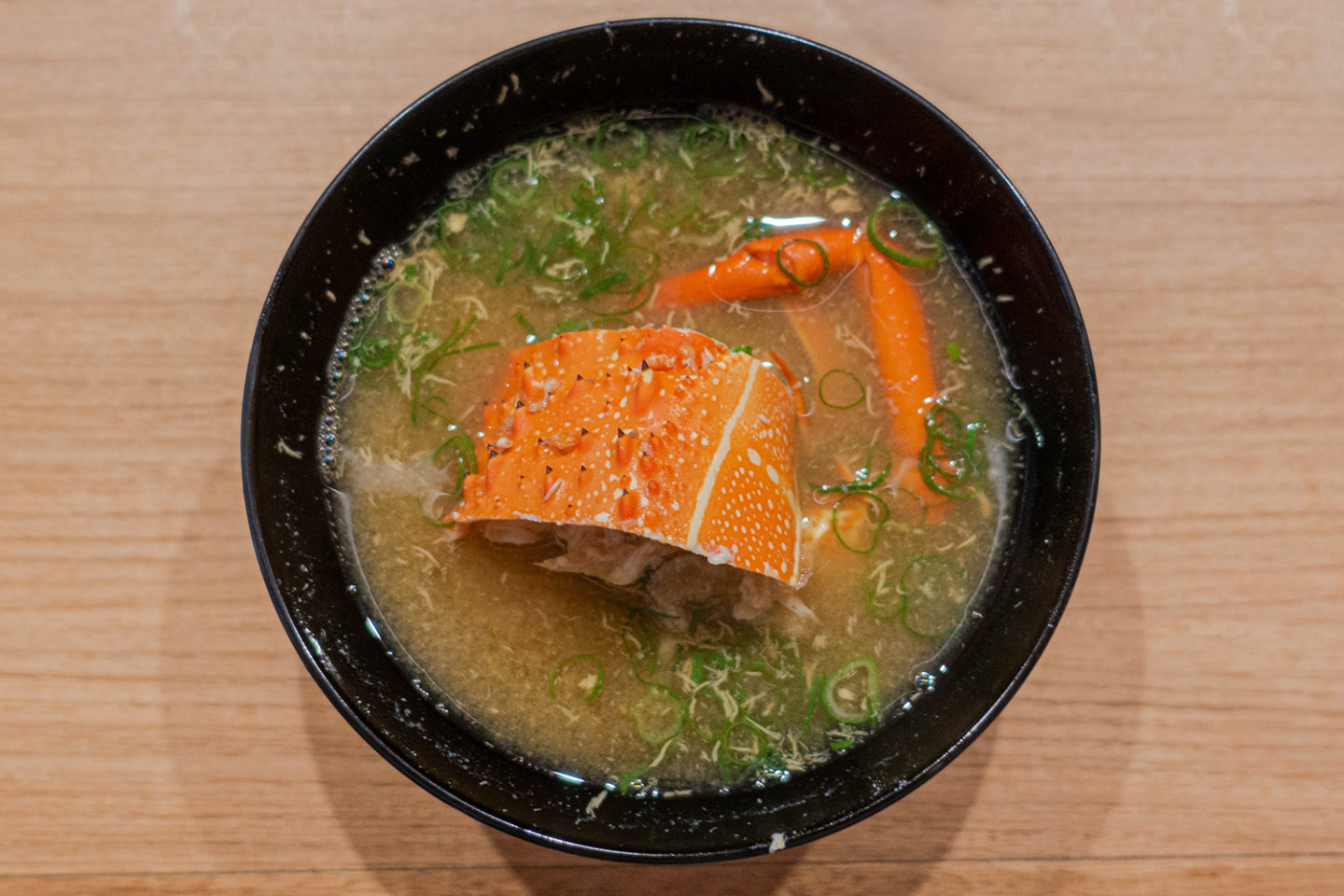
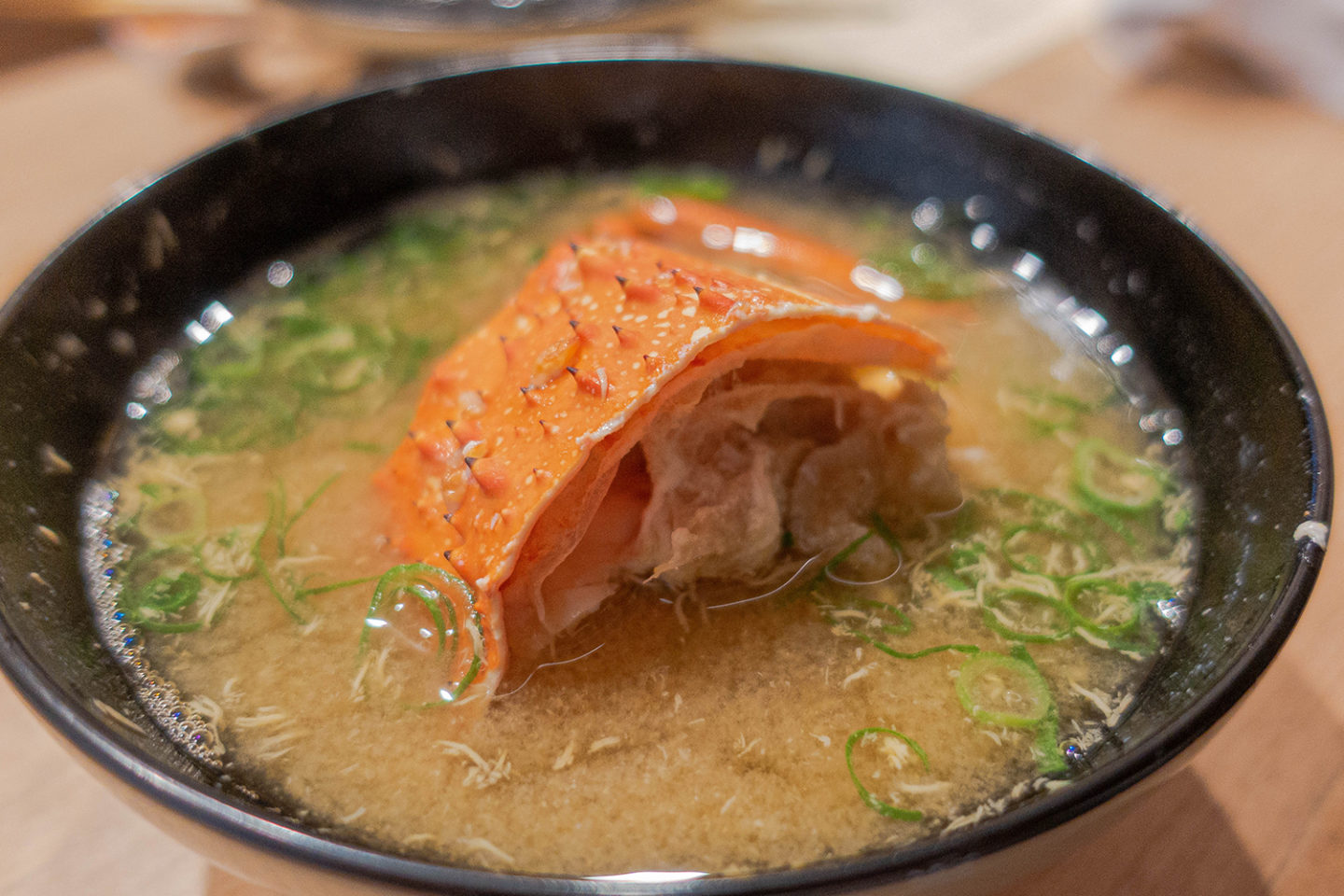
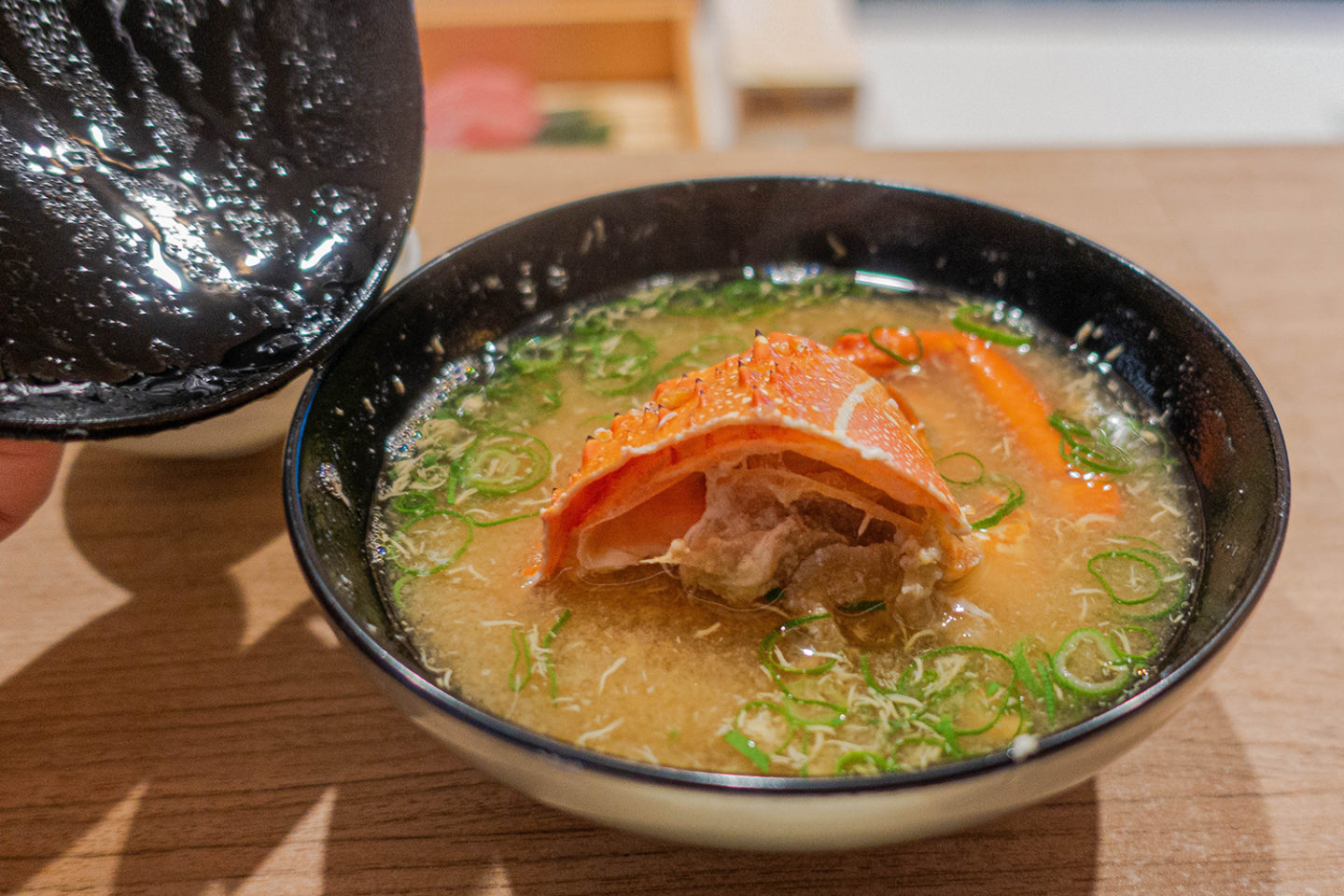
Our lobster friend showed up in this miso soup reveal 🦞. The meat was very sweet and tender, especially after brewing in the broth for an hour. It was so satisfying sucking on the bits and picking out the meat. The soup was light, complemented by the earthy scallions.
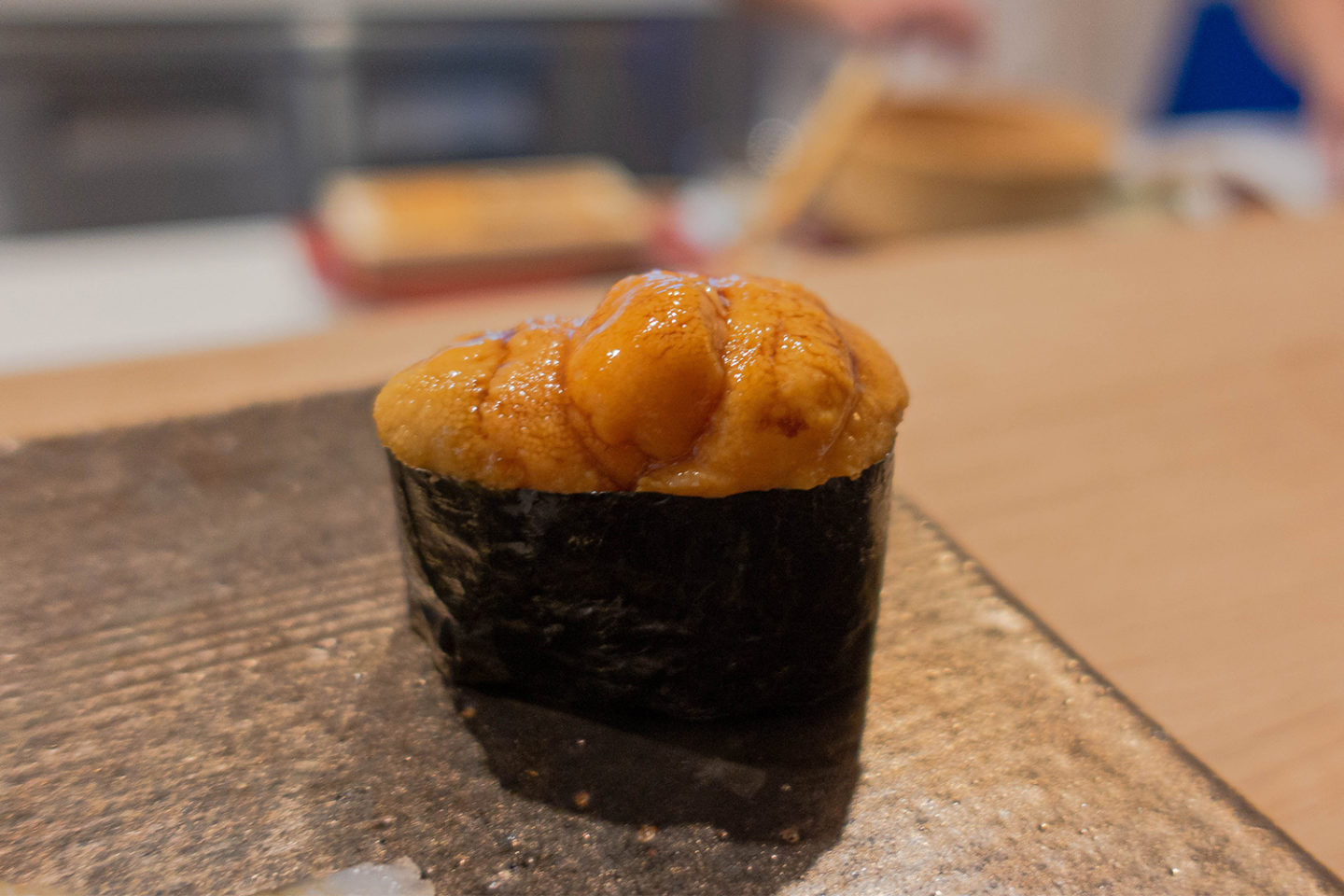

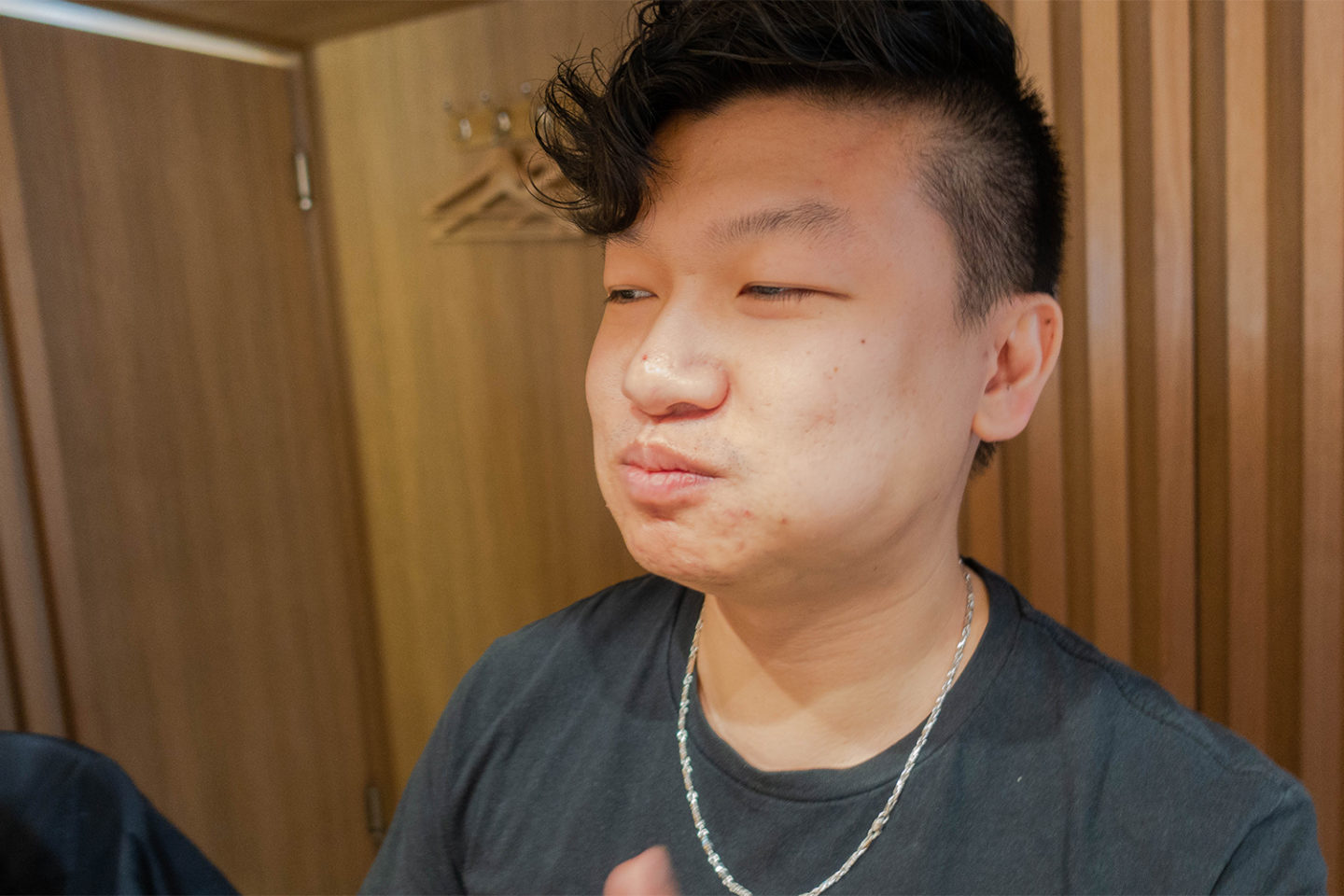
Only Mick got to enjoy the supplementary Hokkaido Kushiro sea urchin gunkan 20g for an extra $50. He said it was very, very creamy with a moderate urchin flavour. His eyes were rolling upon the initial taste. There was only 3 pieces offered to the 8 eaters that day.
For its price tag though, it was definitely not worth it and that $50 could have been spent in a more valuable way, like 5 long islands at Sanctuary for example… 😏😏😏
For its price tag though, it was definitely not worth it and that $50 could have been spent in a more valuable way, like 5 long islands at Sanctuary for example… 😏😏😏
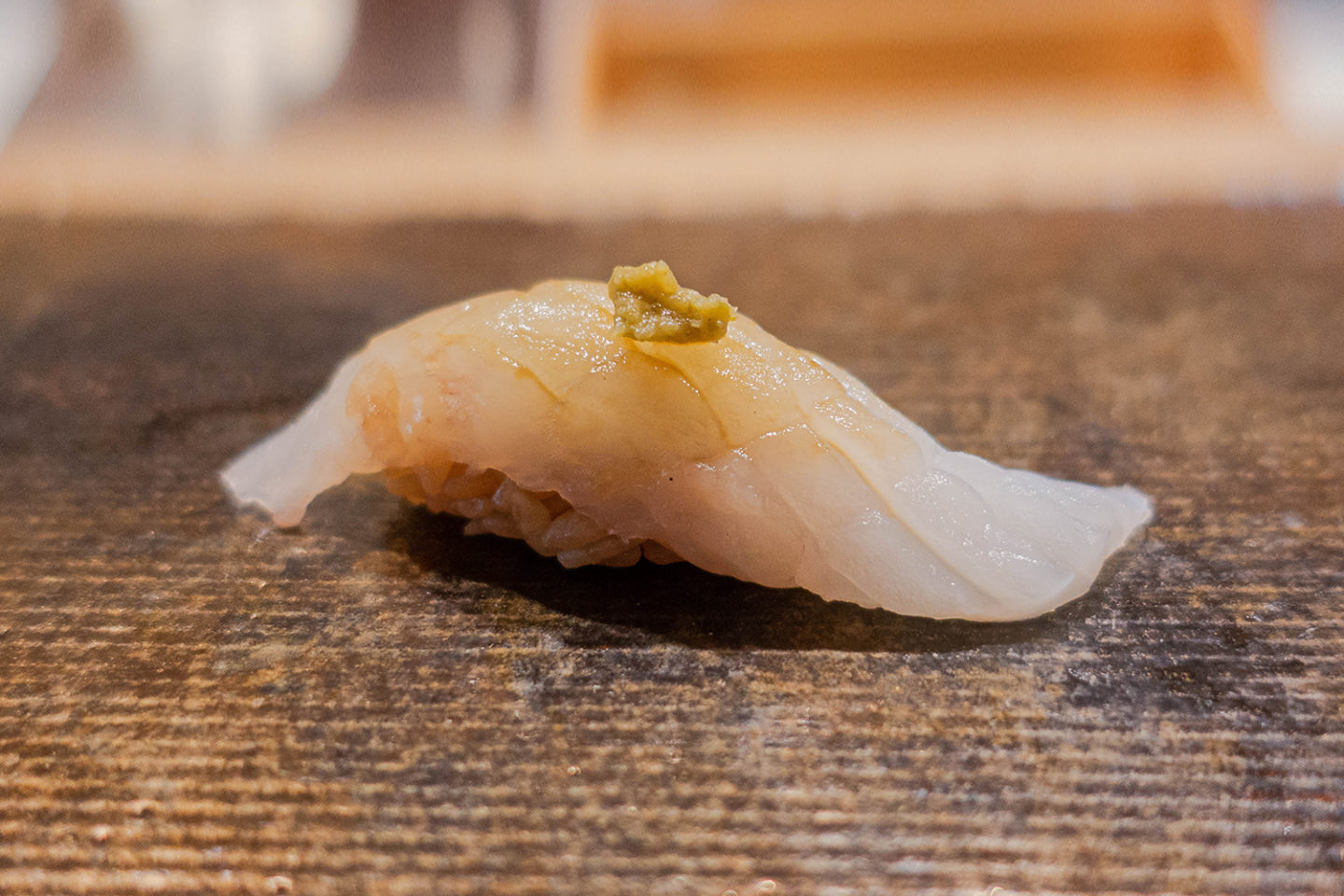
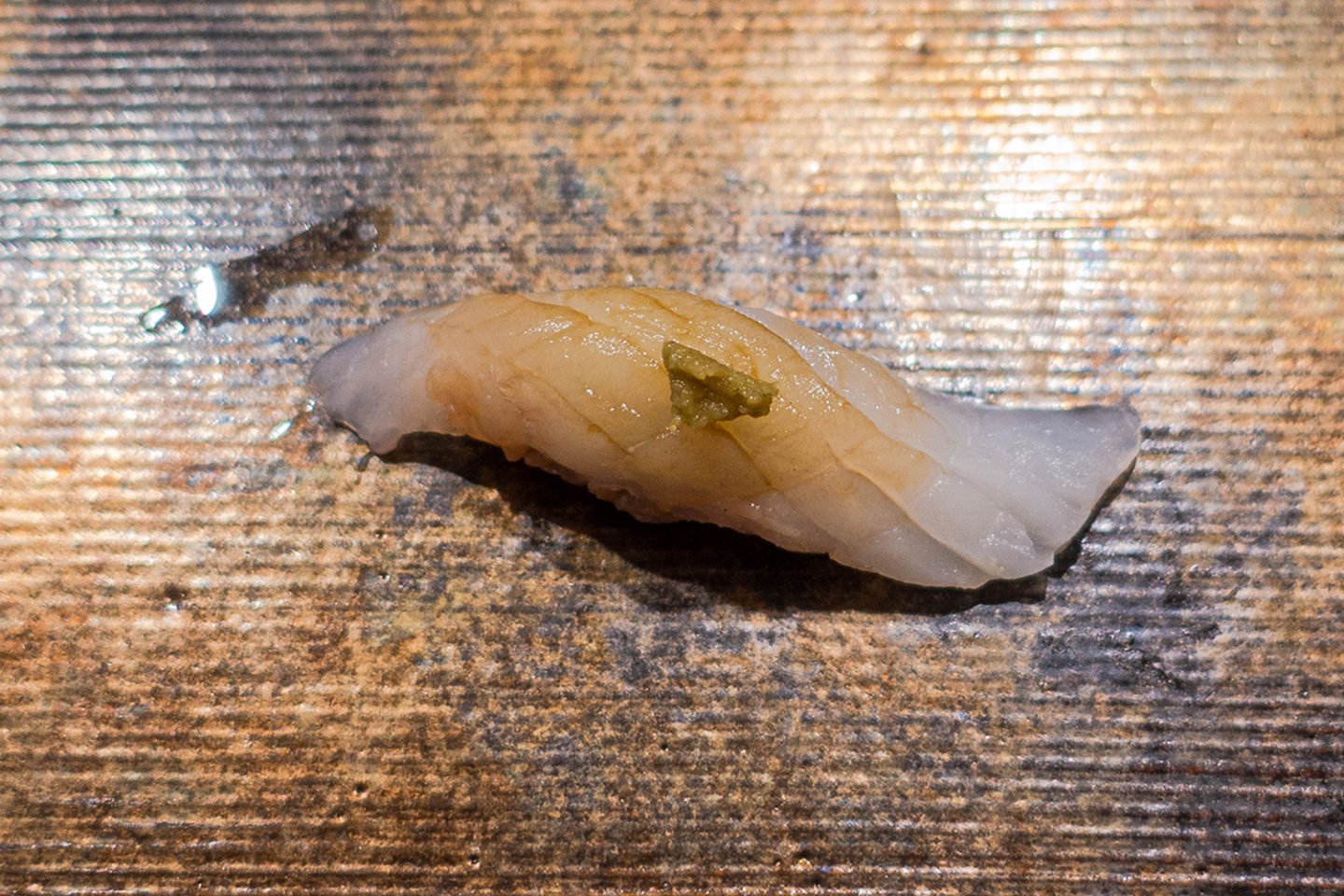
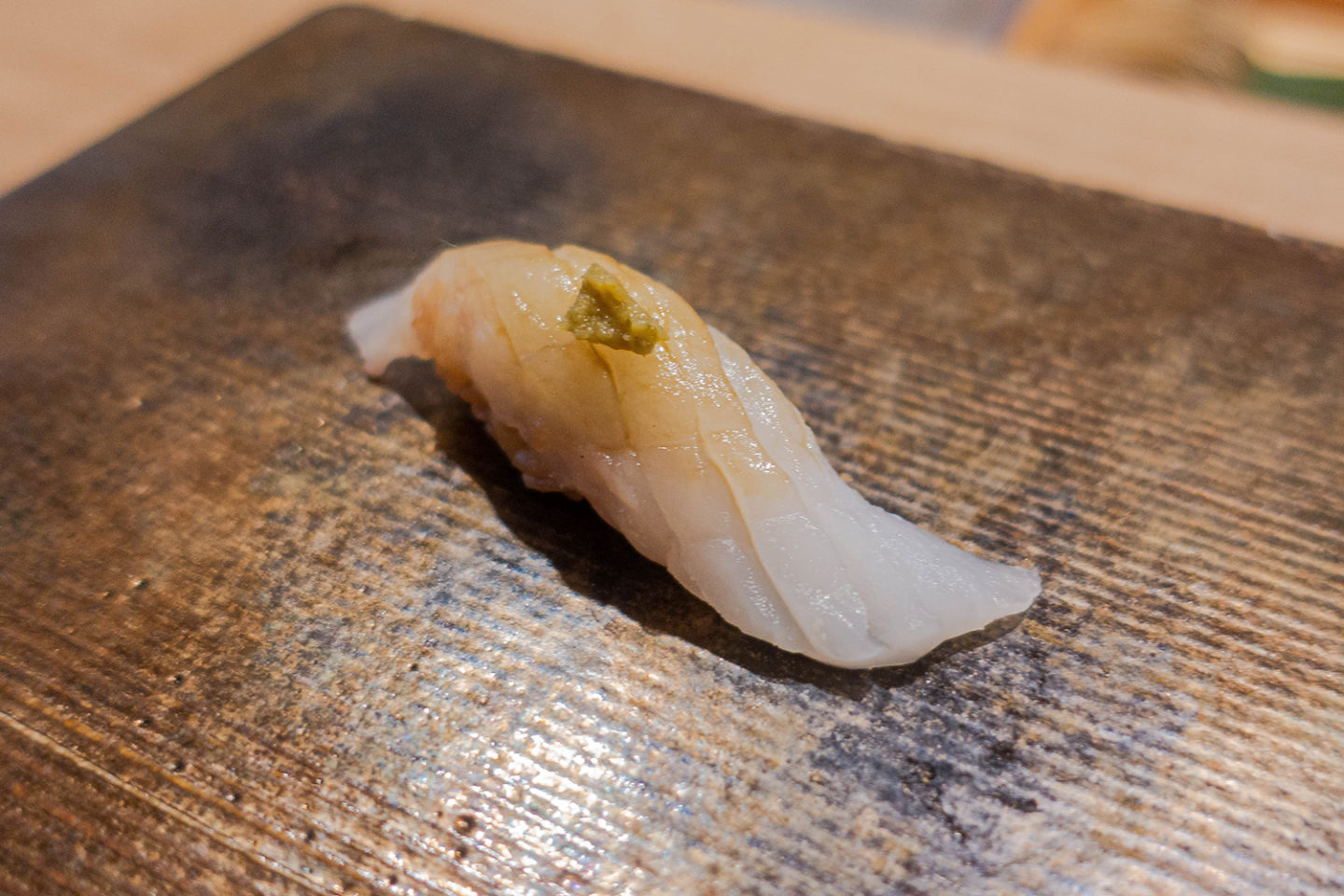
This was the John Dory from New Zealand. This white, freshwater fish had a neutral taste with a hint of yuzu and a brush of soy sauce. It had a light and stringent texture. It was a simple nigiri, executed well with delicious results.
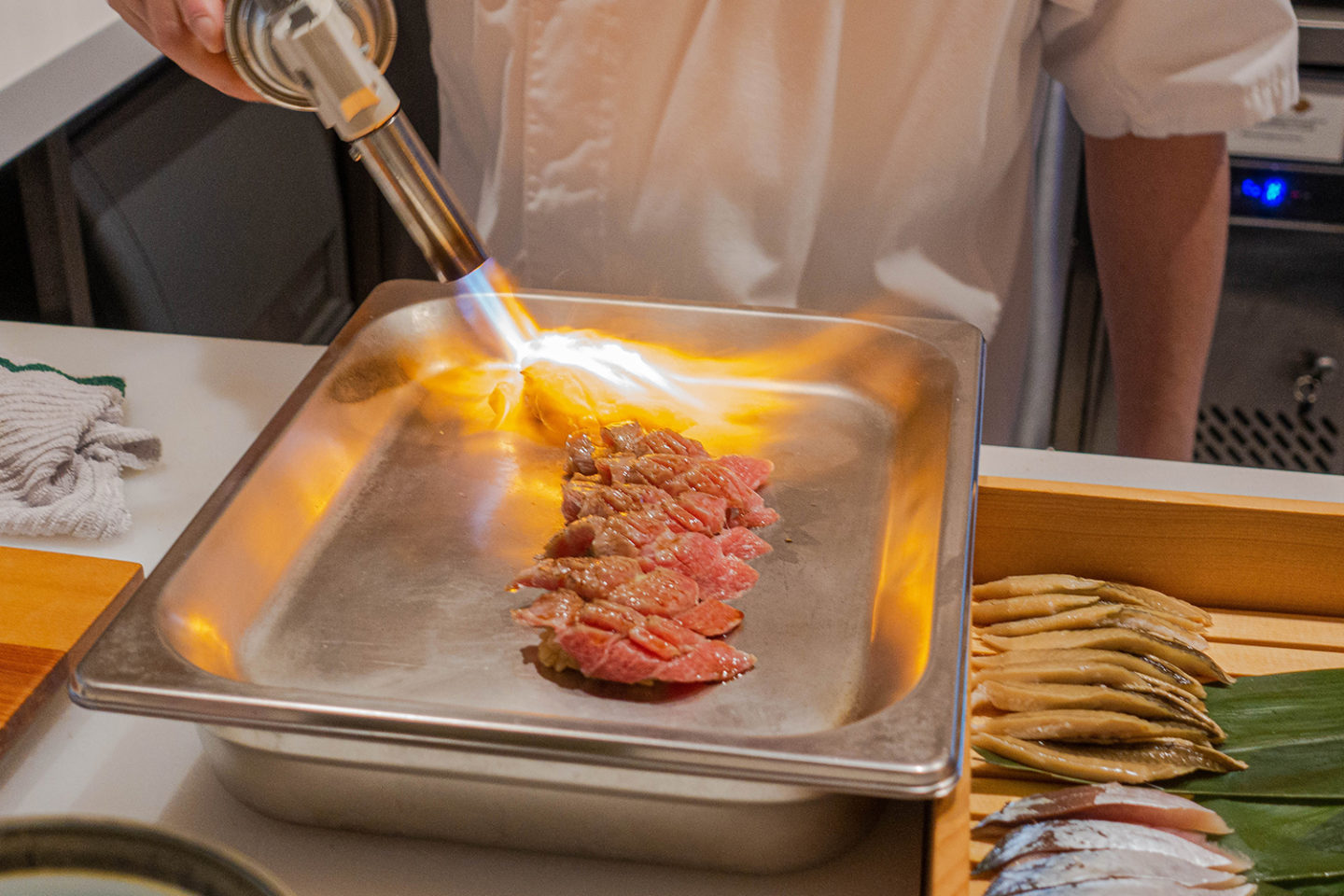
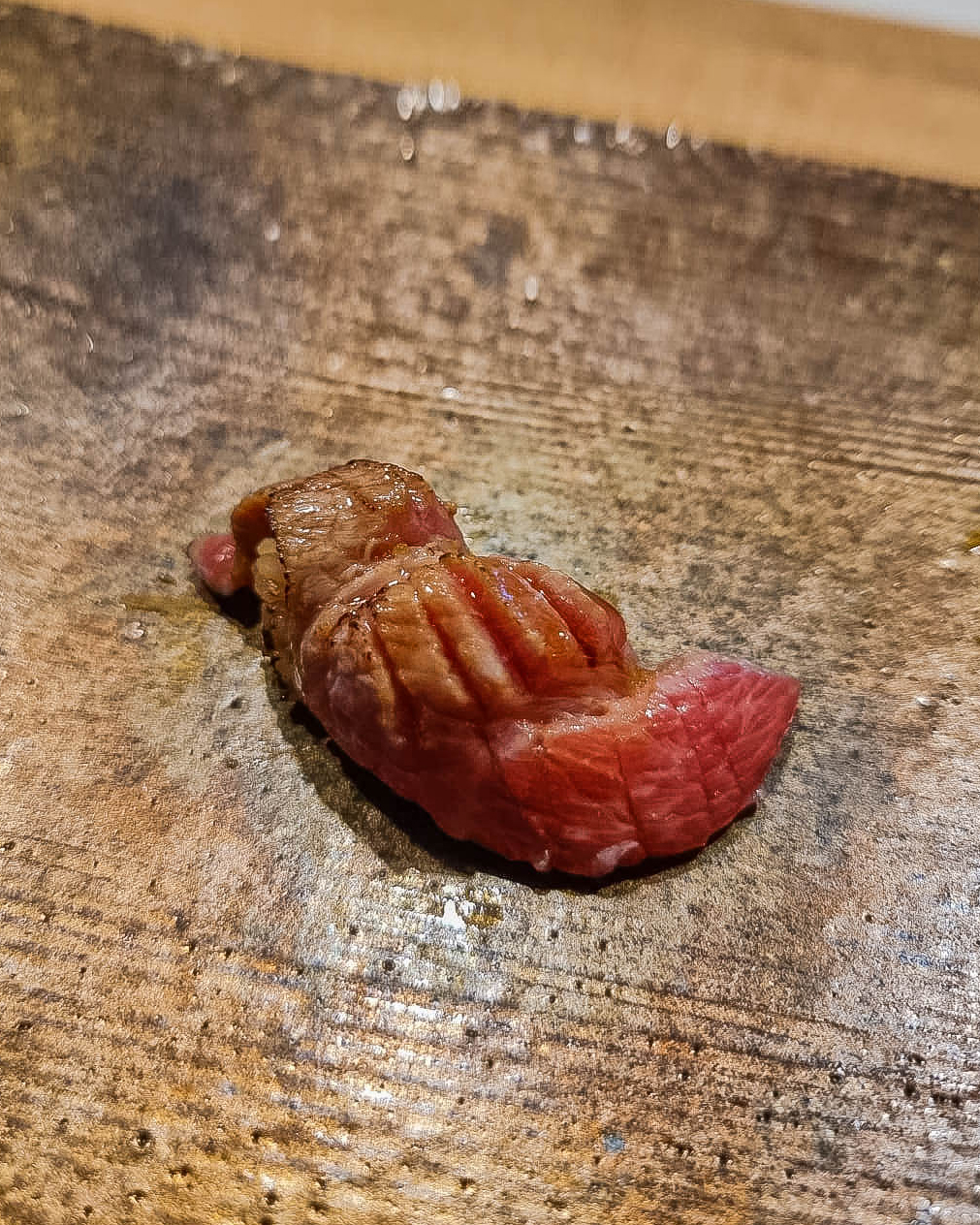
The sake must have been hitting me because I forgot to take a picture of the delicious aburi otoro 😱!!
I was so mesmerised by the woodfire smoky aroma that I plopped the whole thing in my mouth and mmmm-ed in pleasure.
This was another cut from the same Bluefin tuna from Tasmania, sliced at its belly. The charred areas had rendered out the fat, making it taste like a savoury piece of meat. It was very tender and melted in our mouths.
It was so damn good that it wasn’t until after I had swallowed it that I realised my instincts had taken over and neglected my camera 😅.
I was so mesmerised by the woodfire smoky aroma that I plopped the whole thing in my mouth and mmmm-ed in pleasure.
This was another cut from the same Bluefin tuna from Tasmania, sliced at its belly. The charred areas had rendered out the fat, making it taste like a savoury piece of meat. It was very tender and melted in our mouths.
It was so damn good that it wasn’t until after I had swallowed it that I realised my instincts had taken over and neglected my camera 😅.
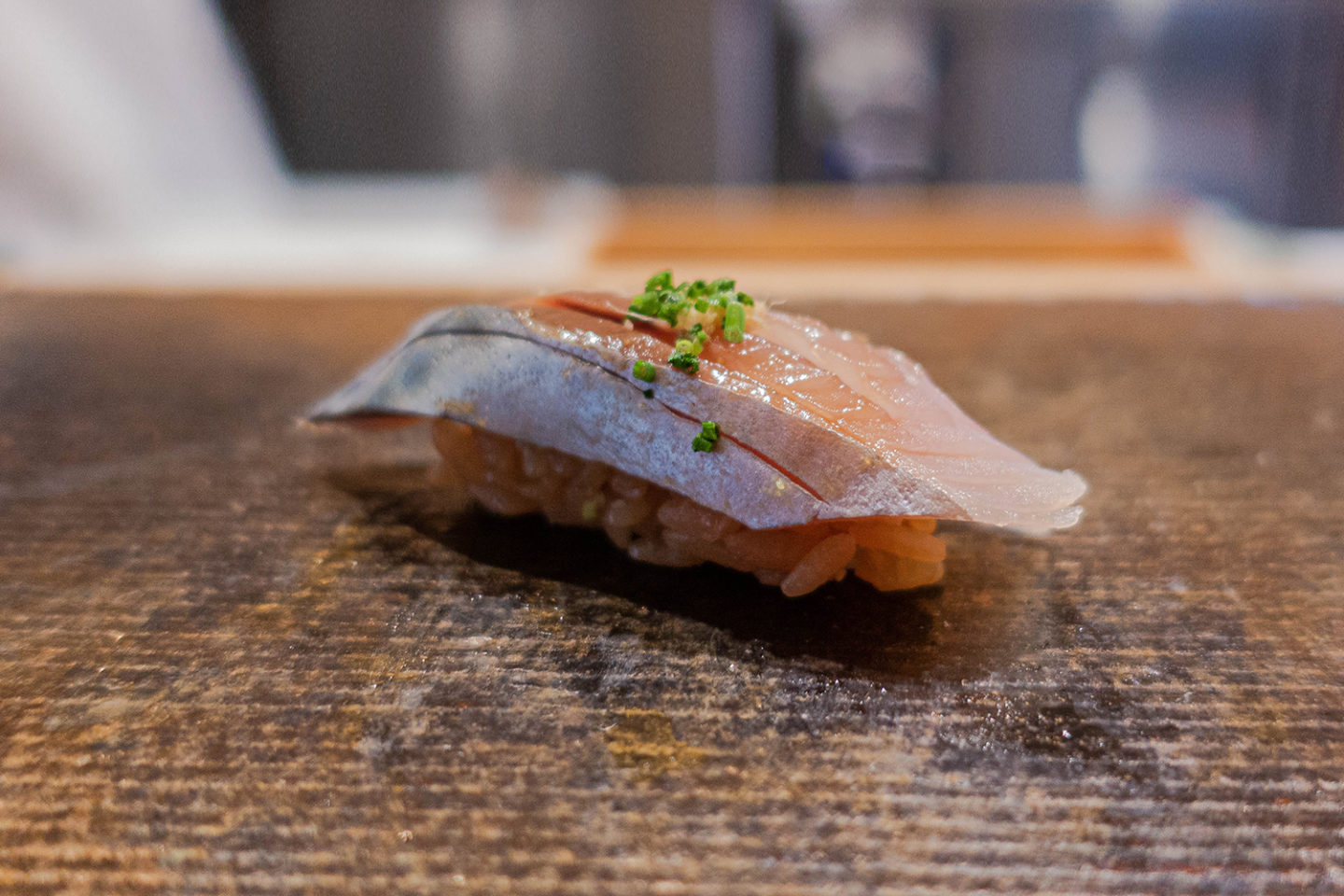
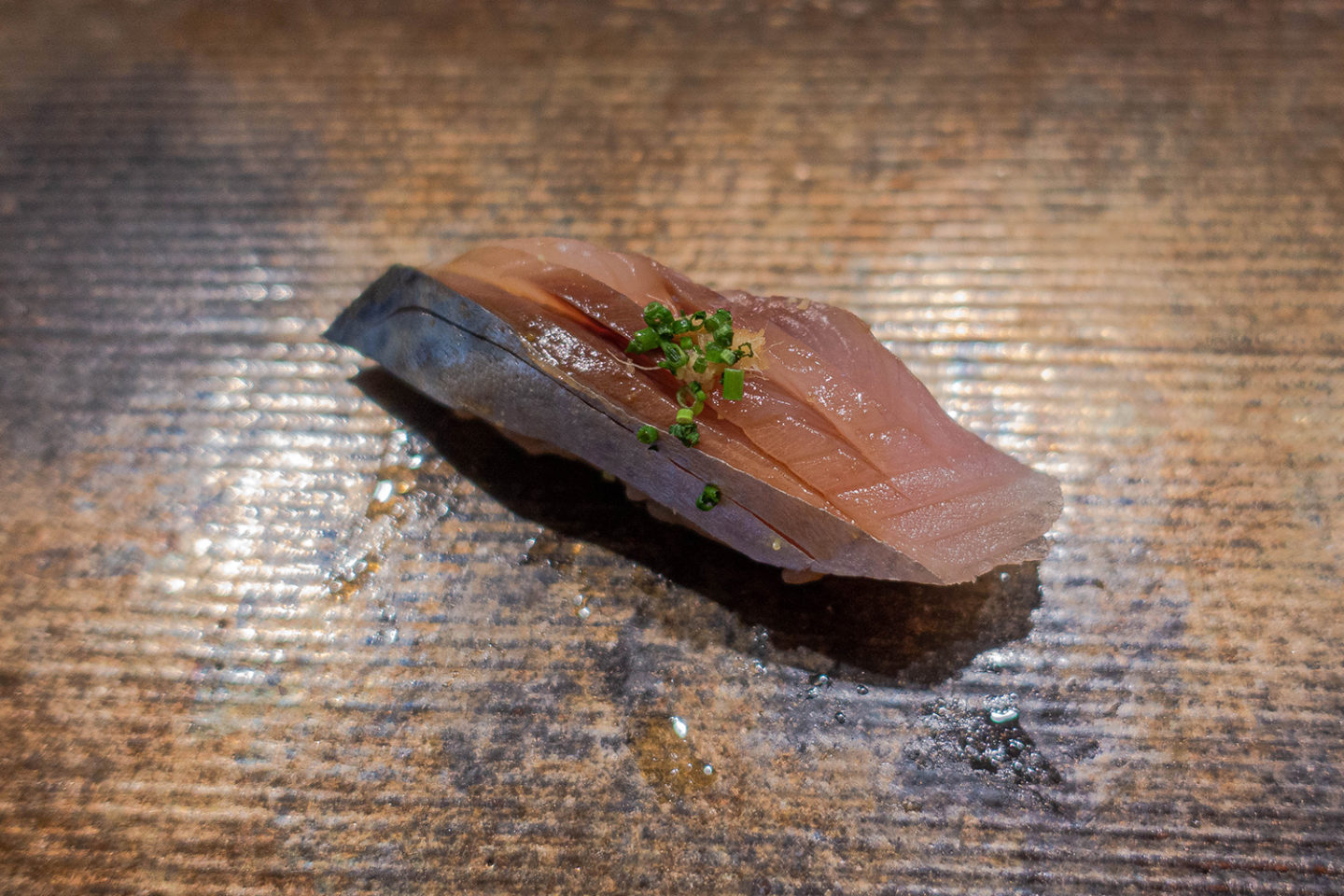
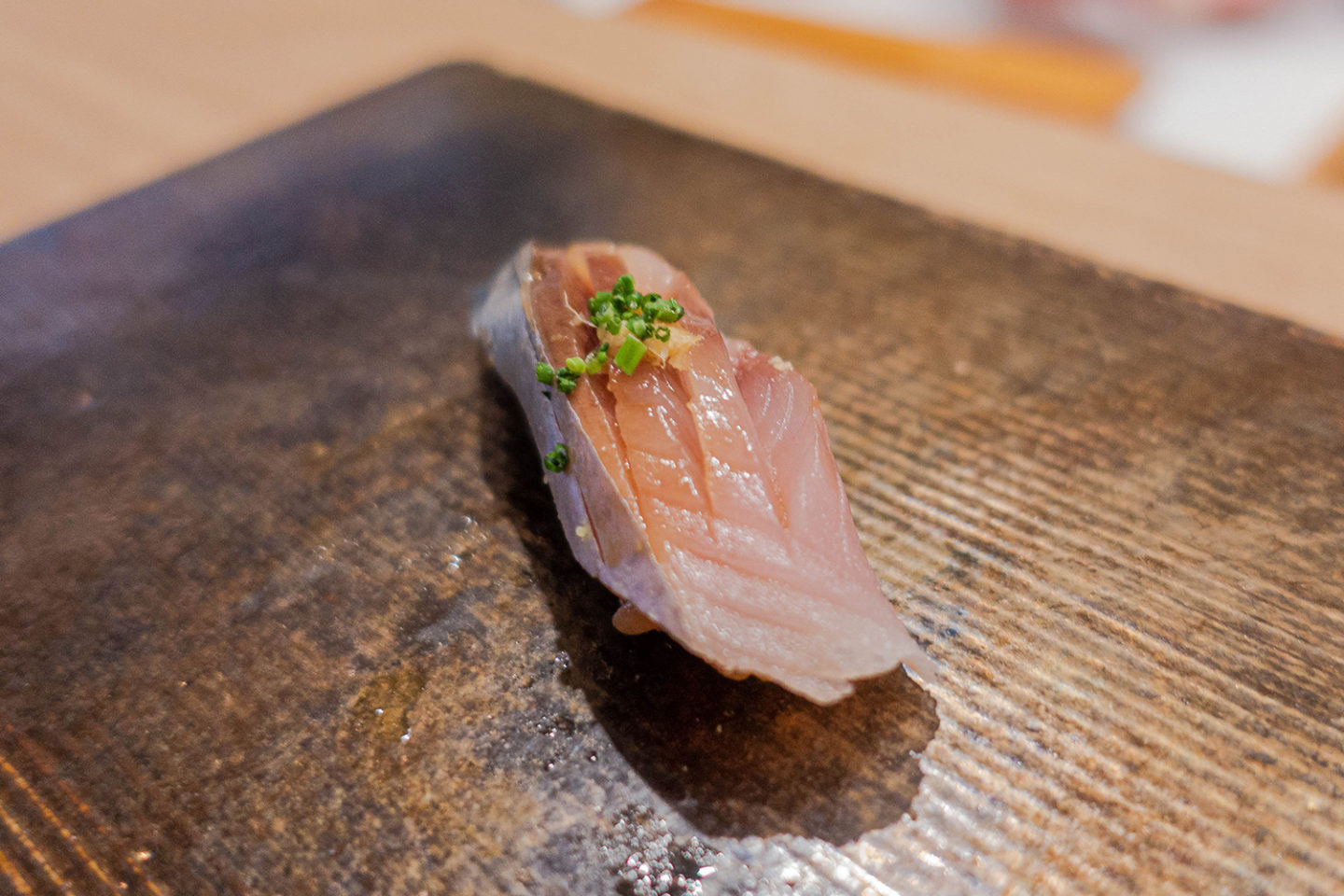
Our next nigiri was the shima saba, a cured Blue mackerel imported from Colombia. This was a delicate cut with a moderate fishy flavour and slightly oily texture. It was topped with chopped chives and a brush of soy sauce.
This was another simple nigiri that was executed well. Again, we were a tad disappointed by how skinny the serving was but that was due to our own gluttony.
This was another simple nigiri that was executed well. Again, we were a tad disappointed by how skinny the serving was but that was due to our own gluttony.
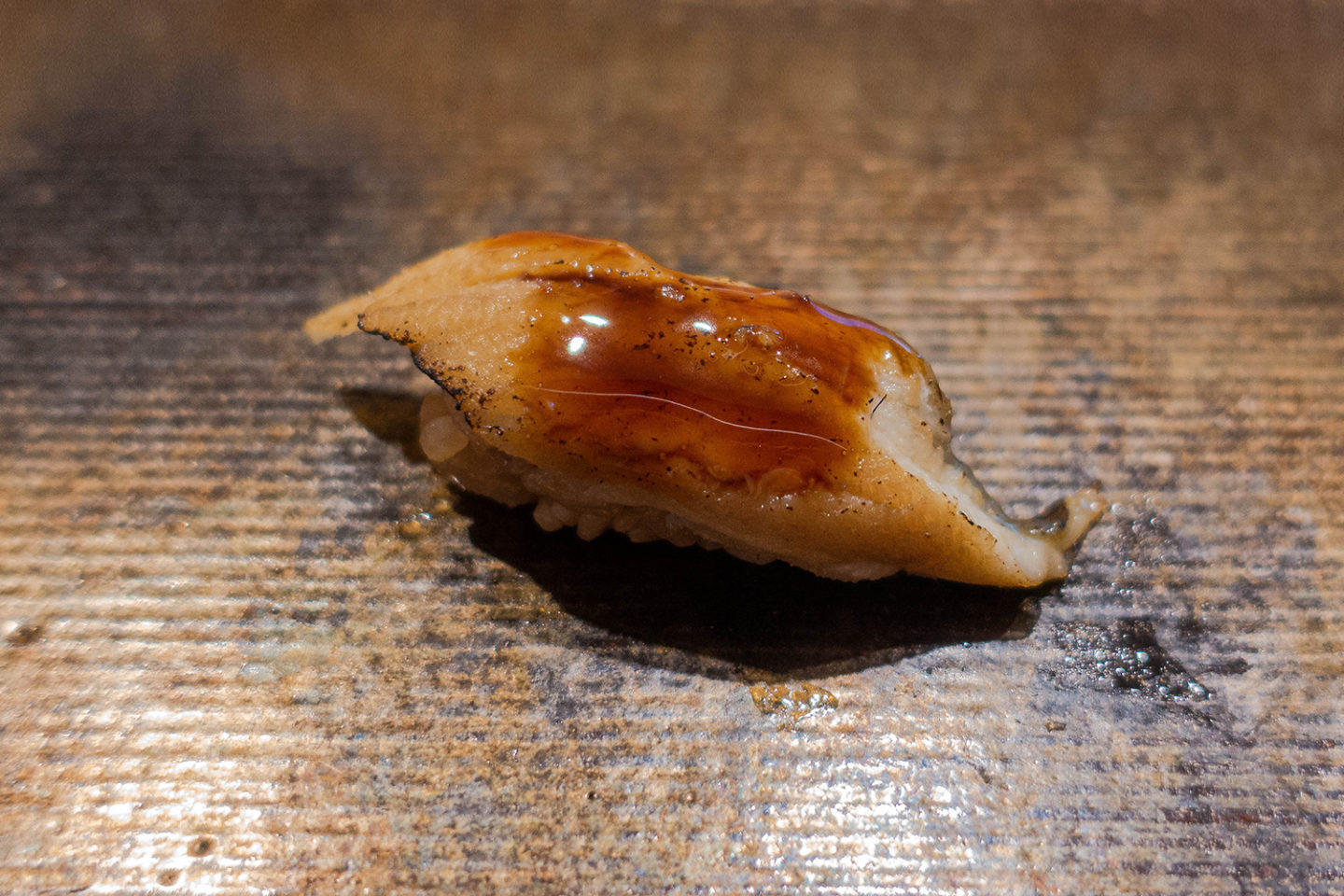
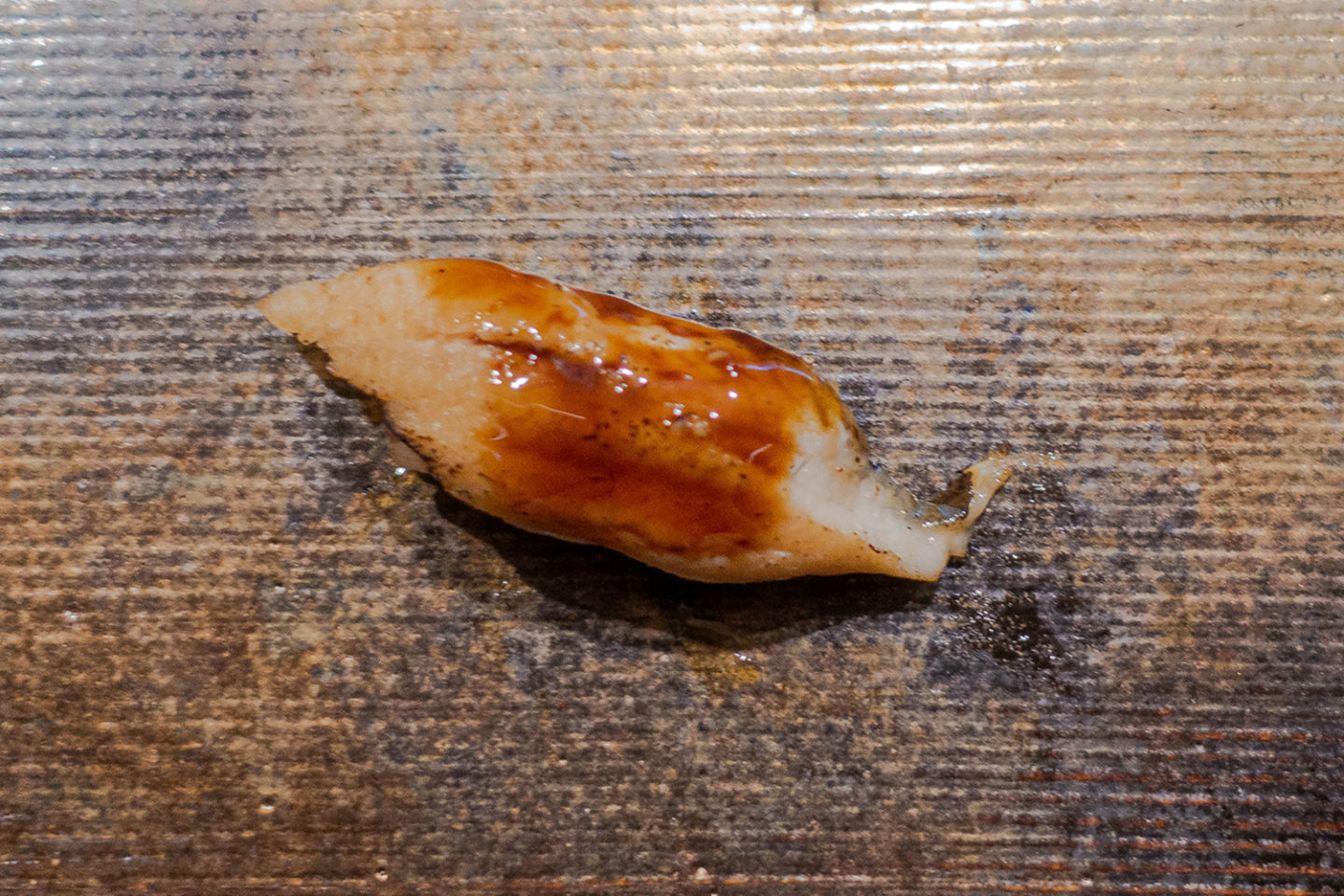
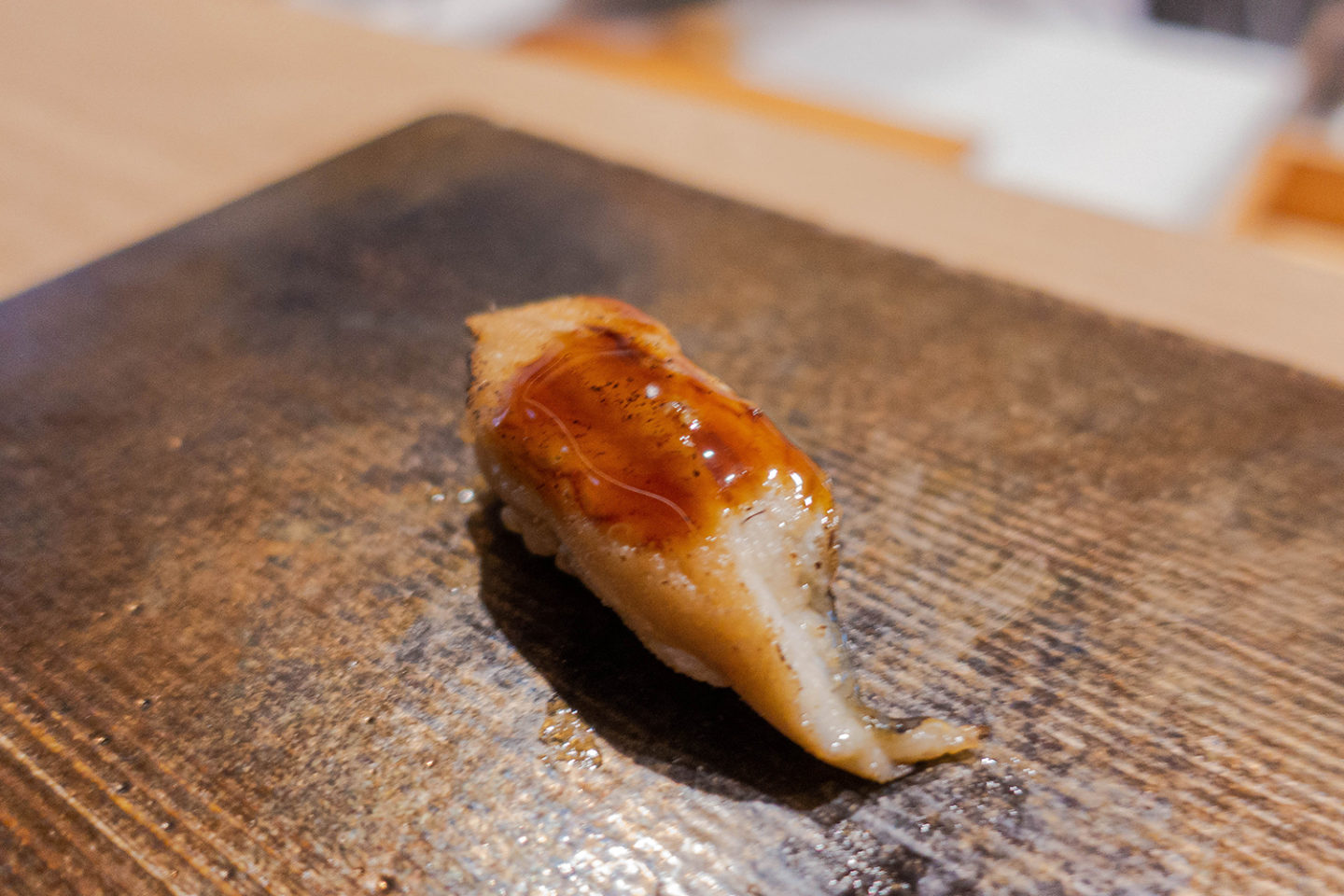
The anago (freshwater eel) from Nagasaki, Japan had a neutral taste with a pinch of salt, contrasted heavily by the sweet and savoury soy sauce. It was moderate in shape and had a creamy, tender texture.
Chef Miyauchi explained that he prefers to cook with anago because they are a lot thinner and therefore a lot harder and more time consuming to cook with. A lot of skills are required for the preparation of anago 👏🏻.
Chef Miyauchi explained that he prefers to cook with anago because they are a lot thinner and therefore a lot harder and more time consuming to cook with. A lot of skills are required for the preparation of anago 👏🏻.
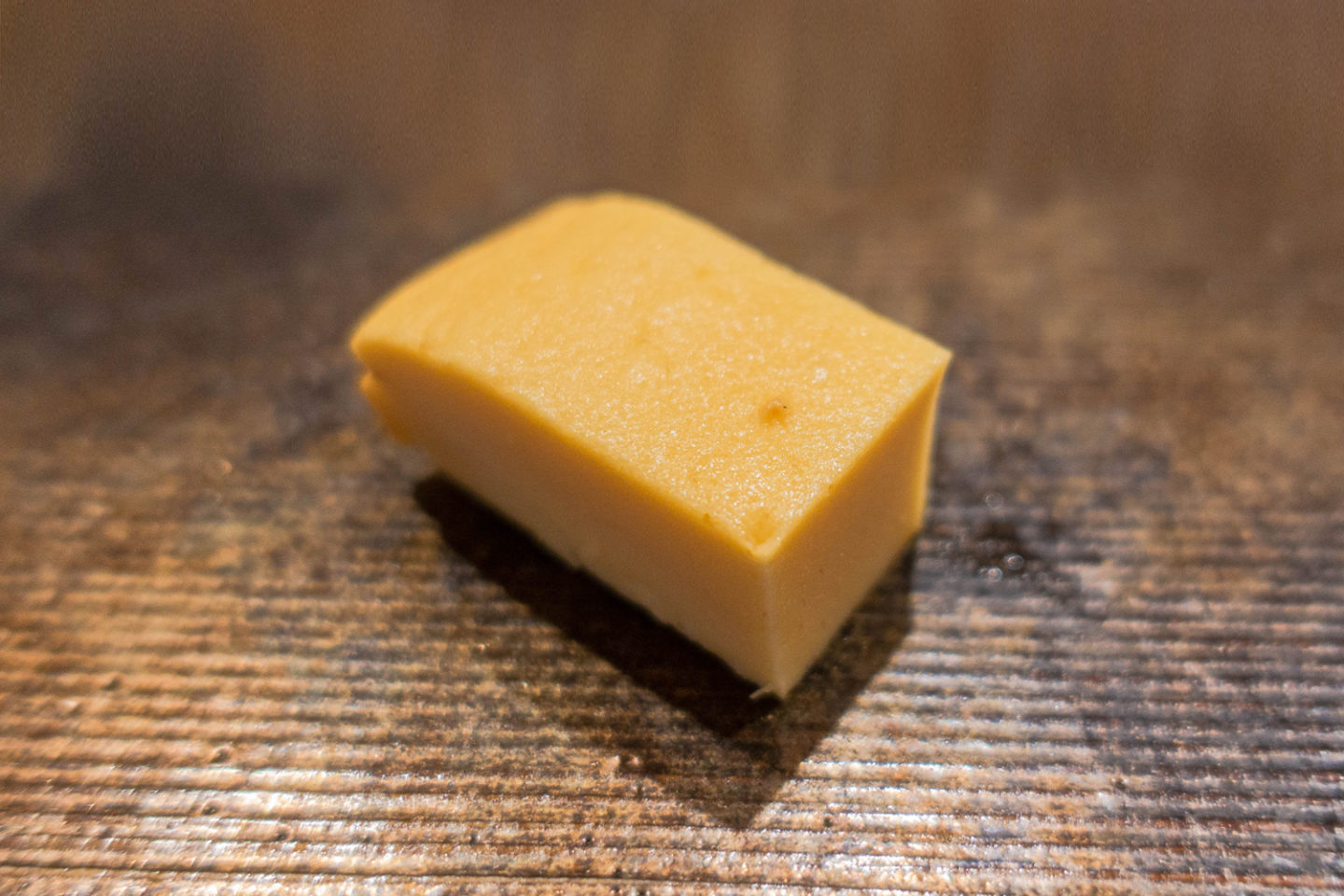
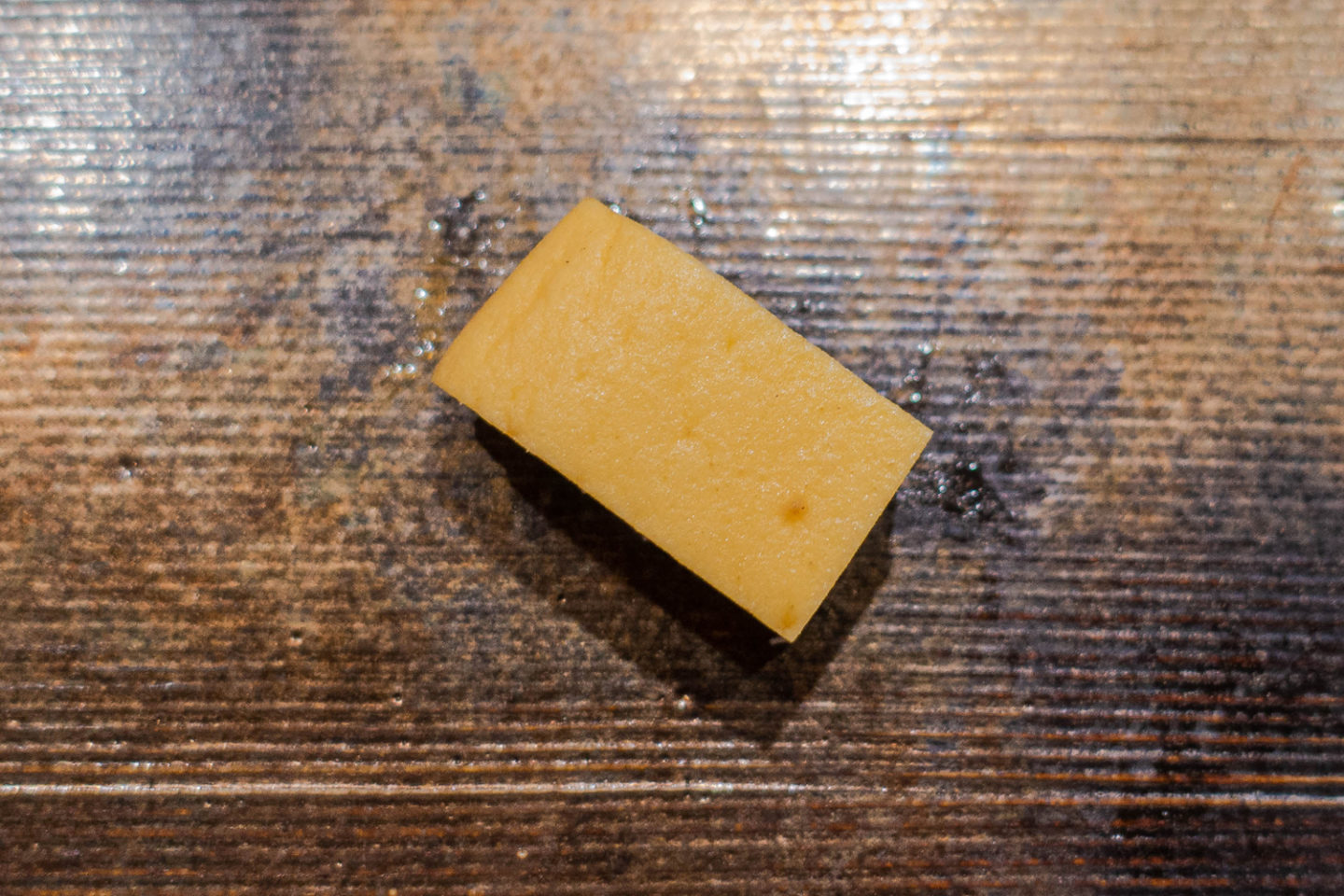
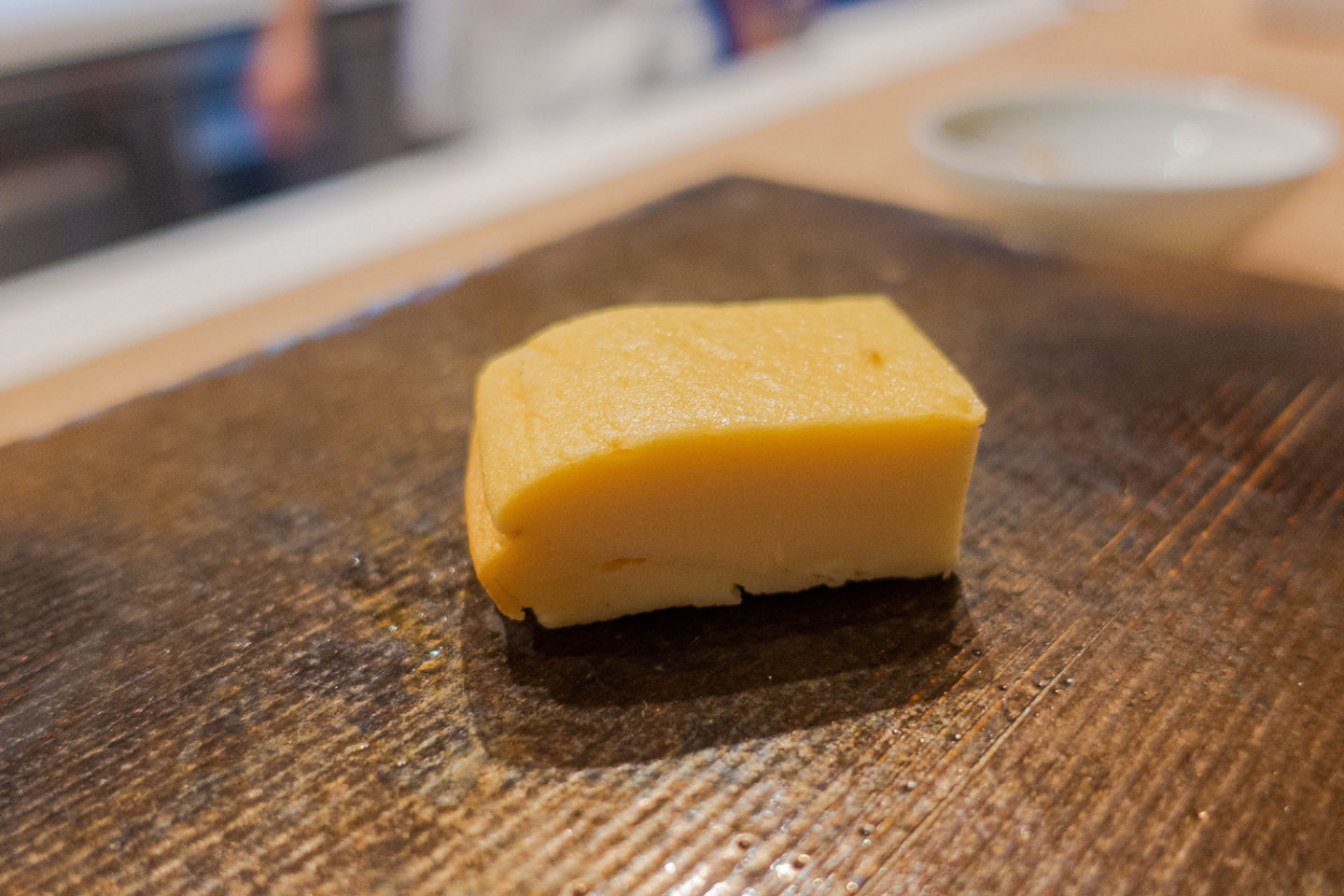
We were very sad when we saw the tamago because that meant the end was near 😭. This was a dense and fluffy piece of egg, like a compacted soufflé cake. It had a strong umami taste, leaning on the saltier side. Mick said this was one of his favourite eggs in Sydney.
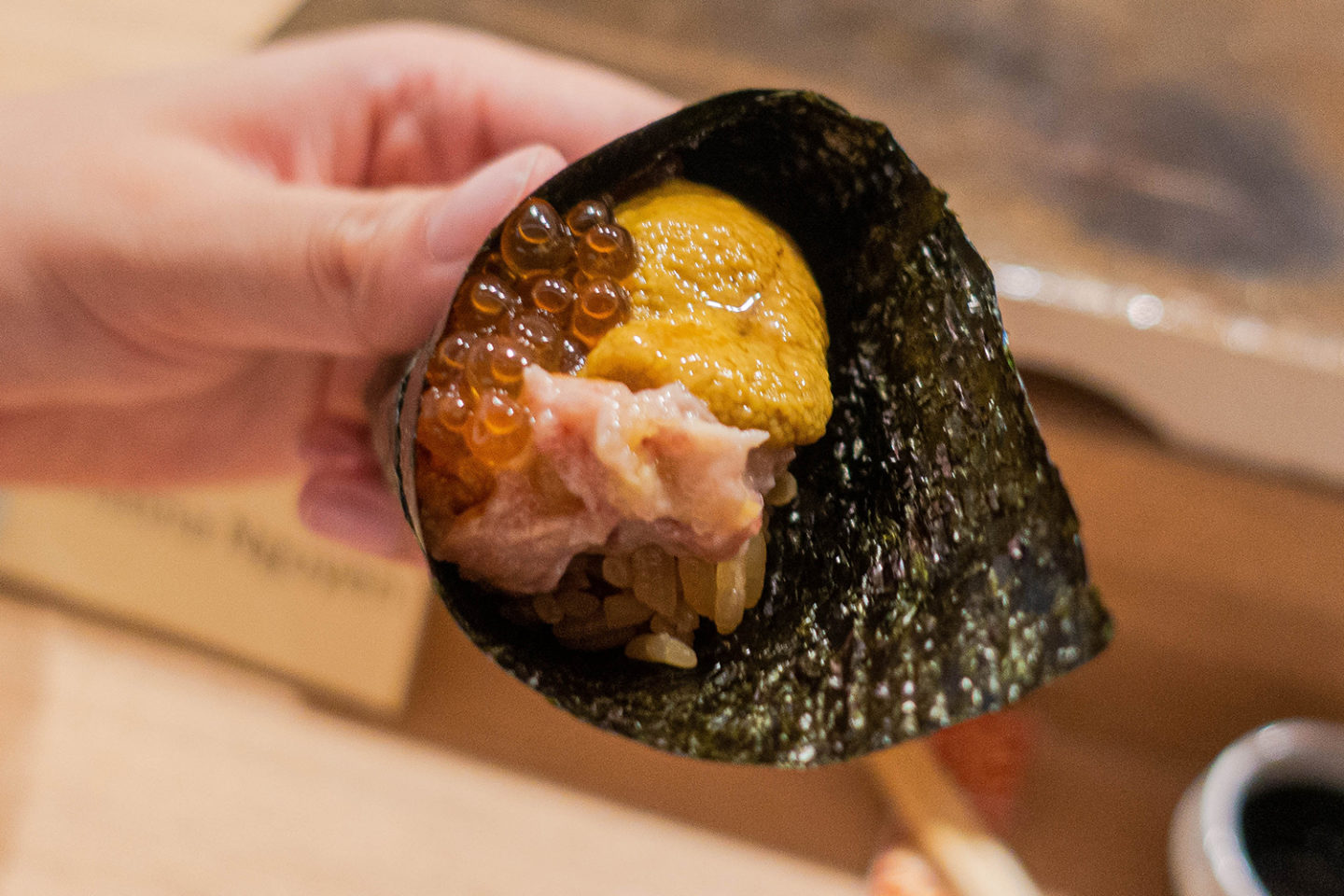
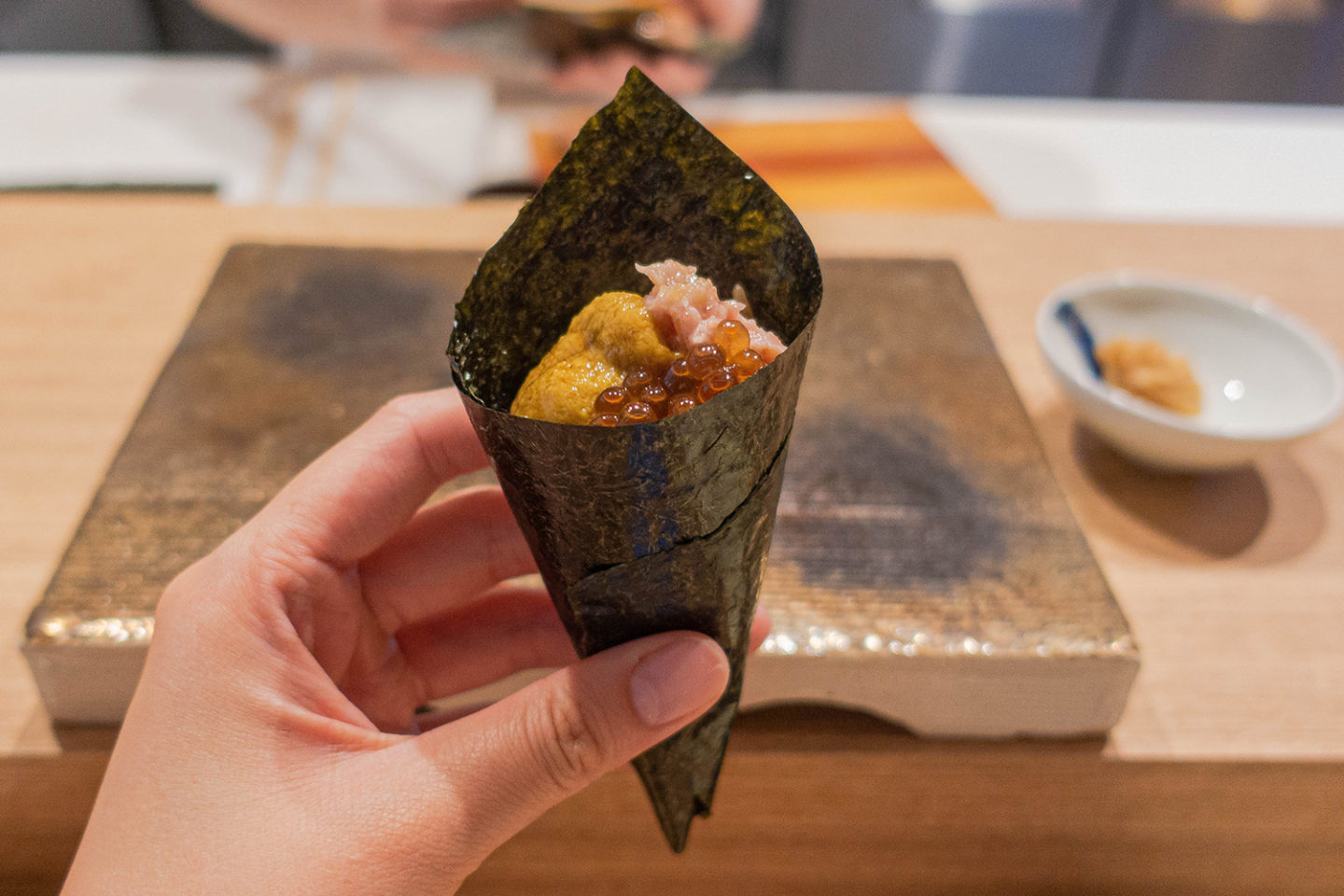
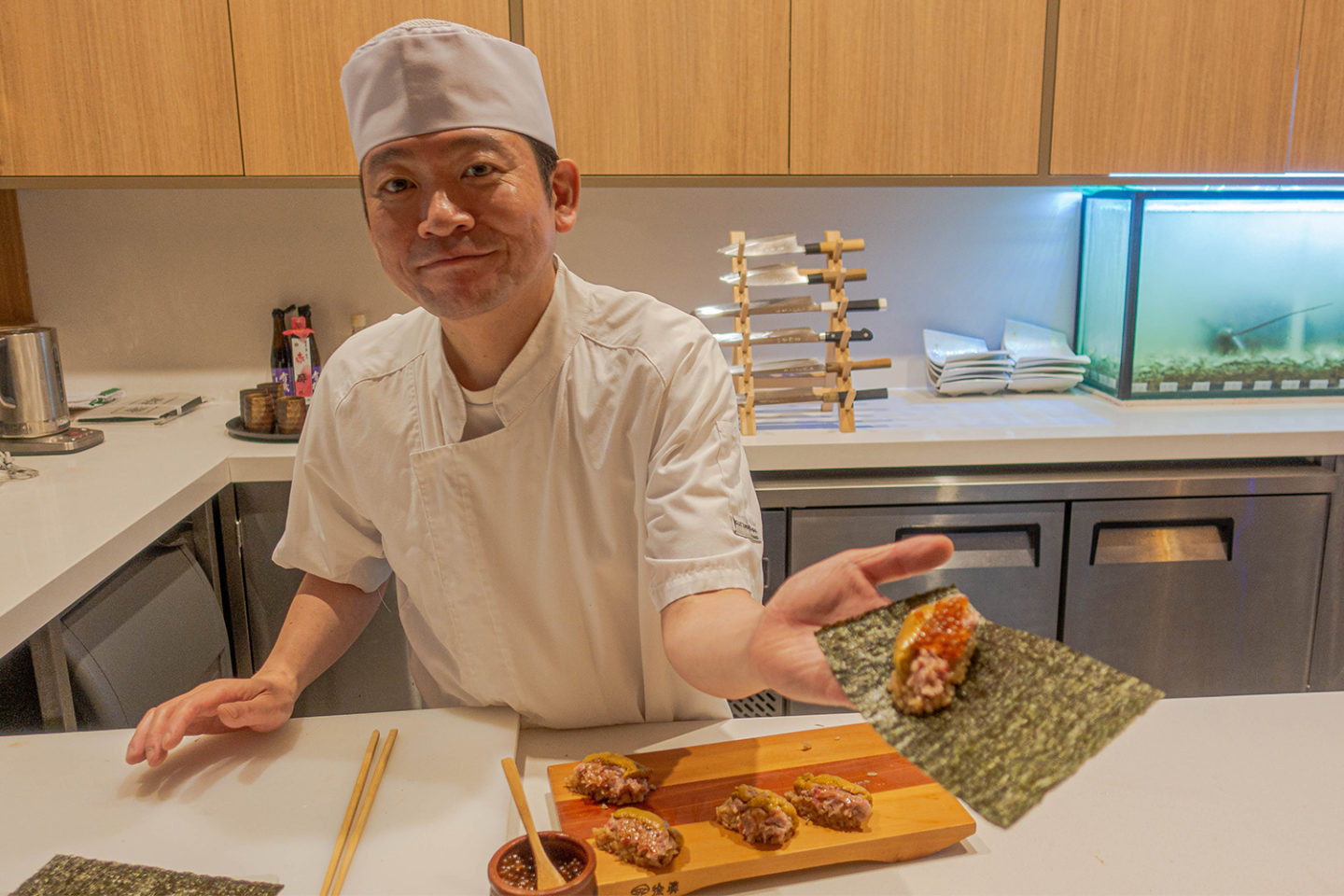
The final piece was the negitoro filled with leftover cut tuna, fragrant sea urchin and salty fresh ikura (roe), all wrapped in a crispy piece of nori. All the flavours were delicious and blended well in this bite 🤤. We loved the cold muchness of the tuna pieces. It was a generous handroll and a deluxe way to end the omakase.
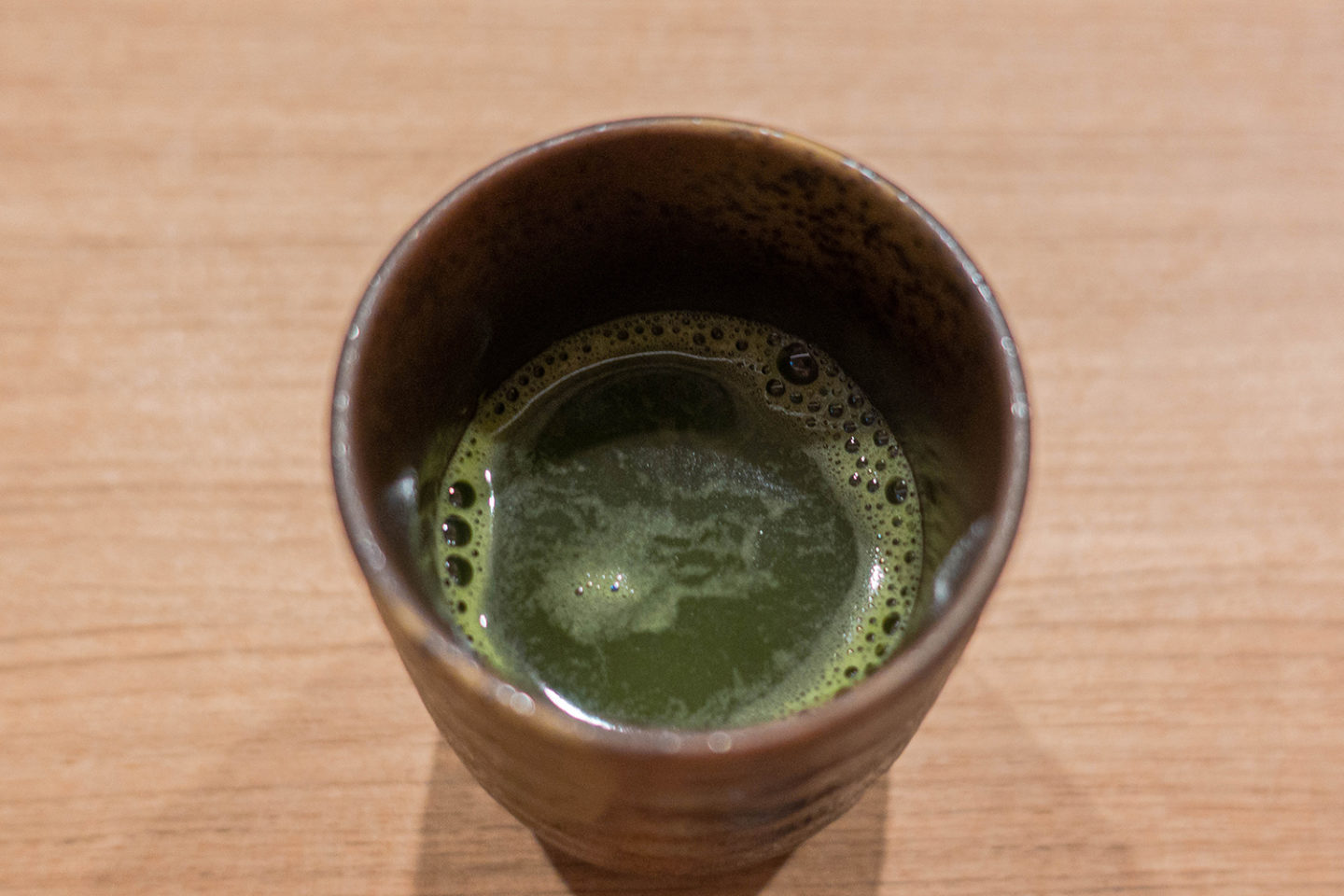
We were provided warm matcha with our desserts to cleanse our palate.
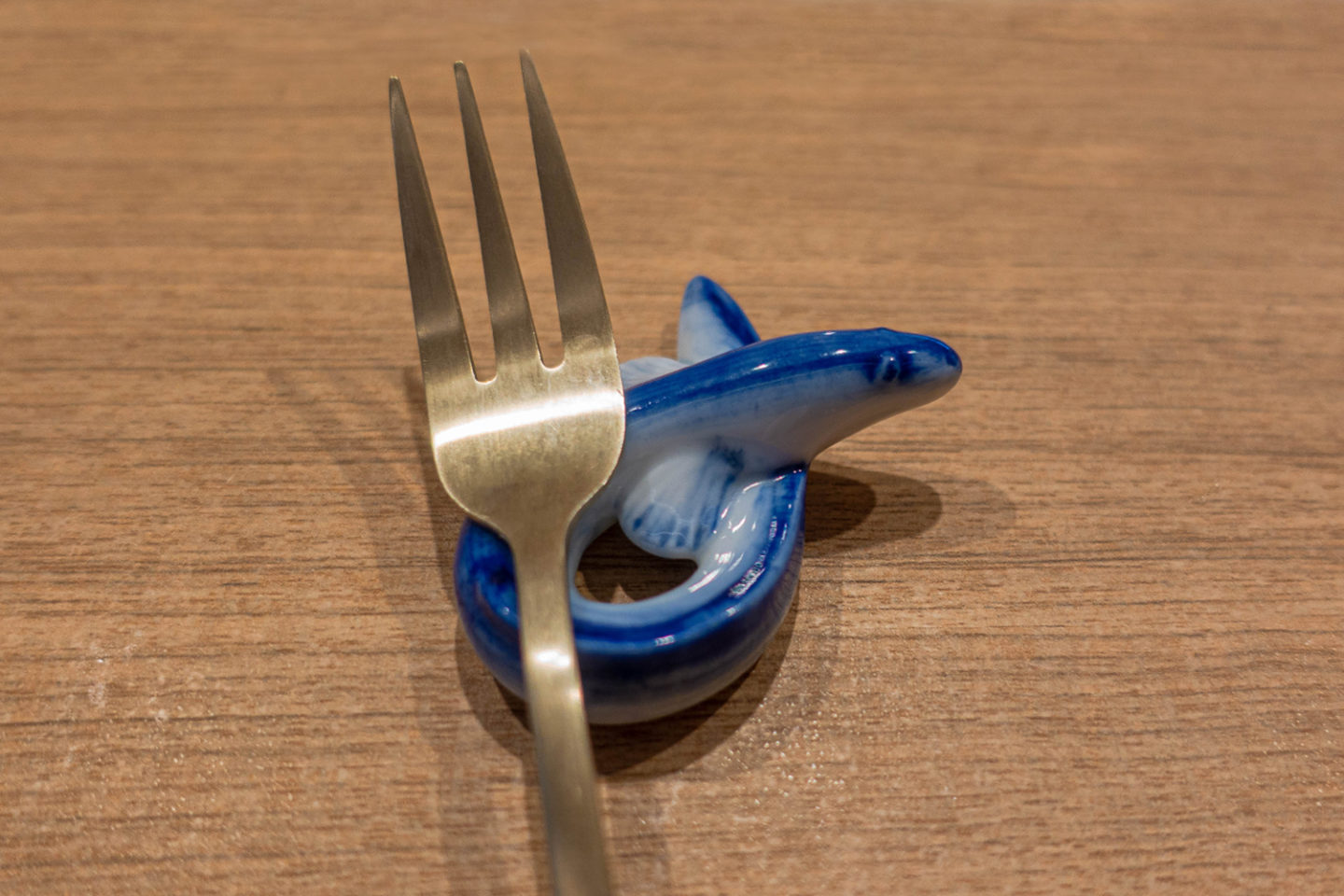
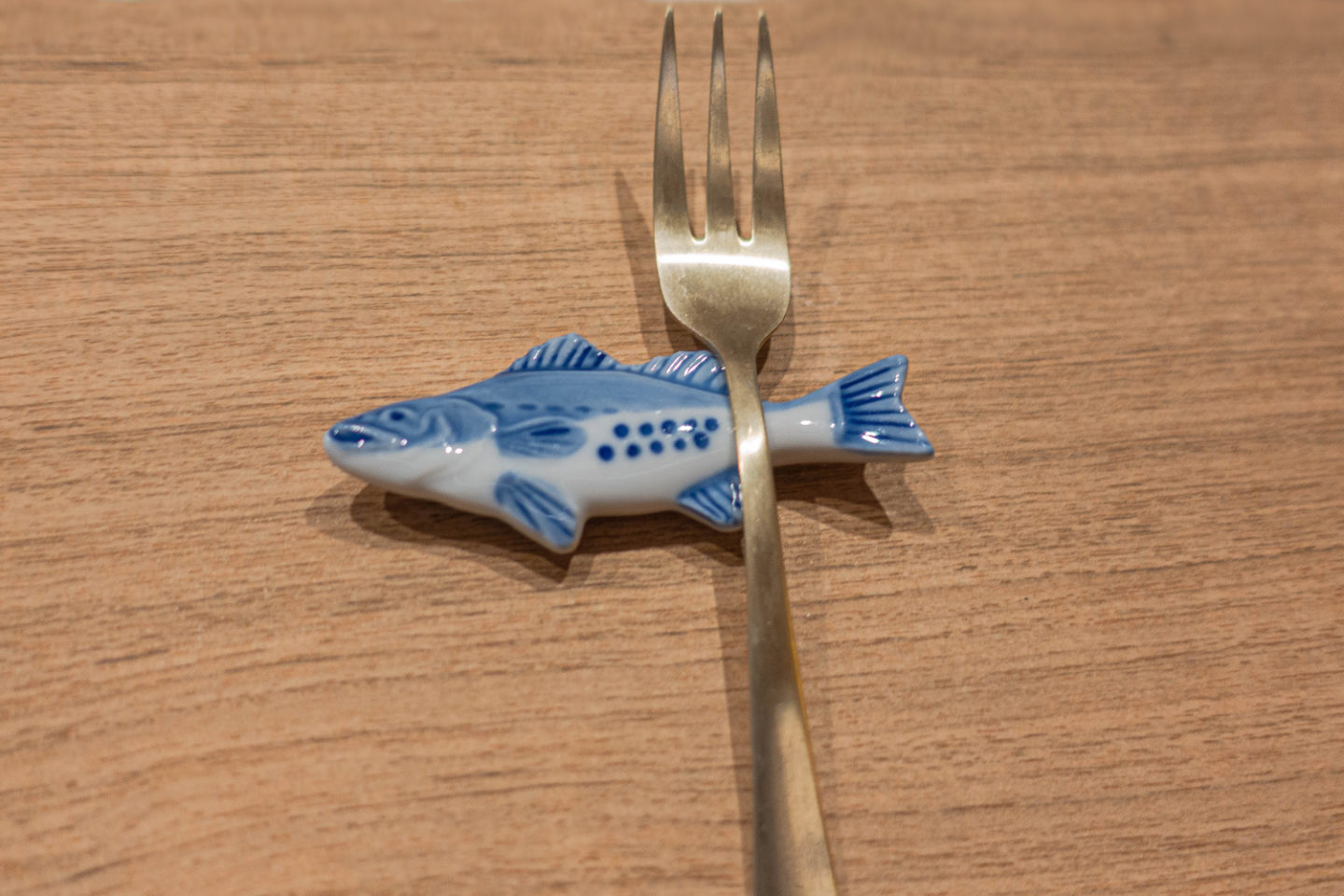
They handed out cute, little ceramic fork holders. They said that the fugi fish is often reserved for their favourite customer so keep your eyes out for that one 😂.
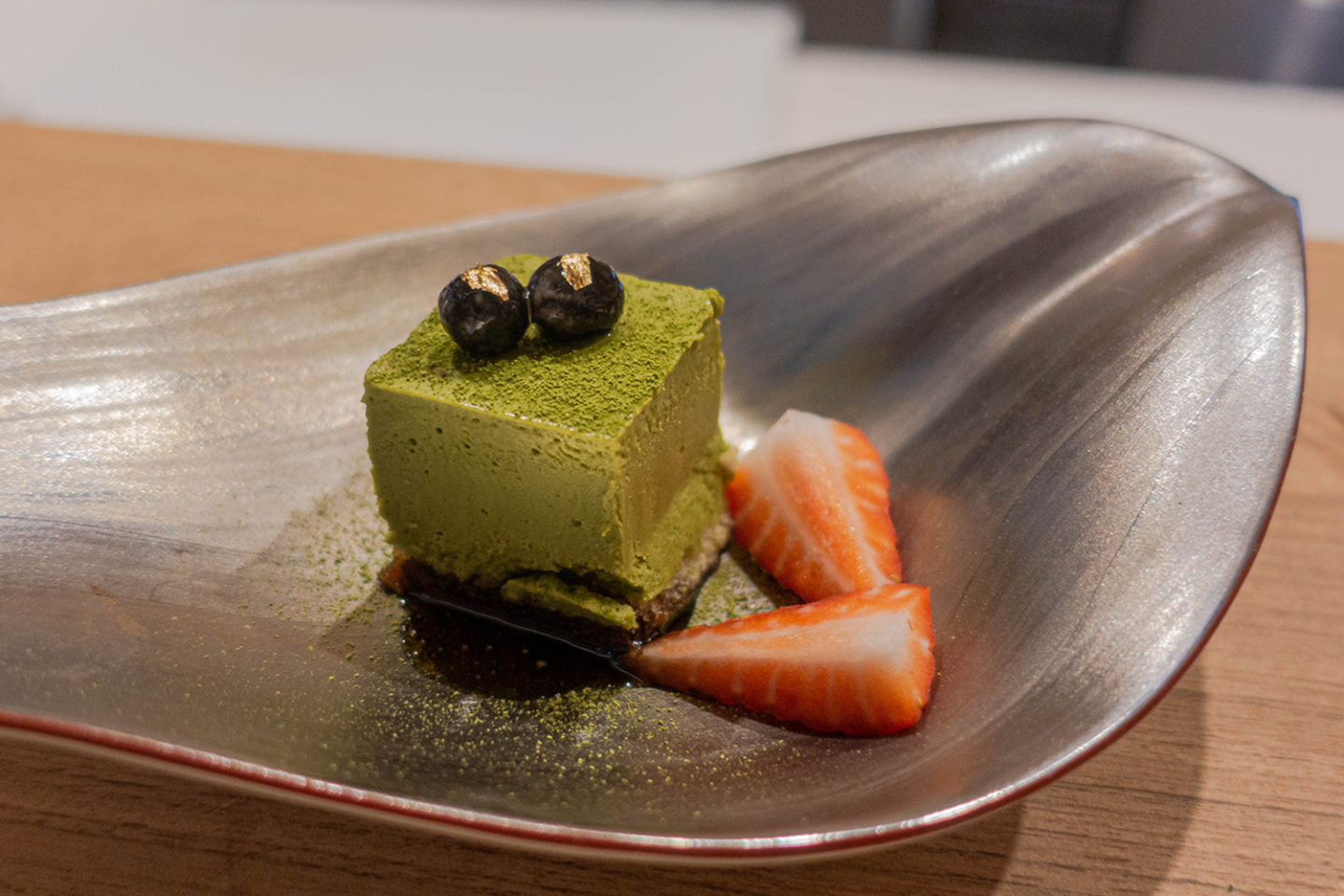
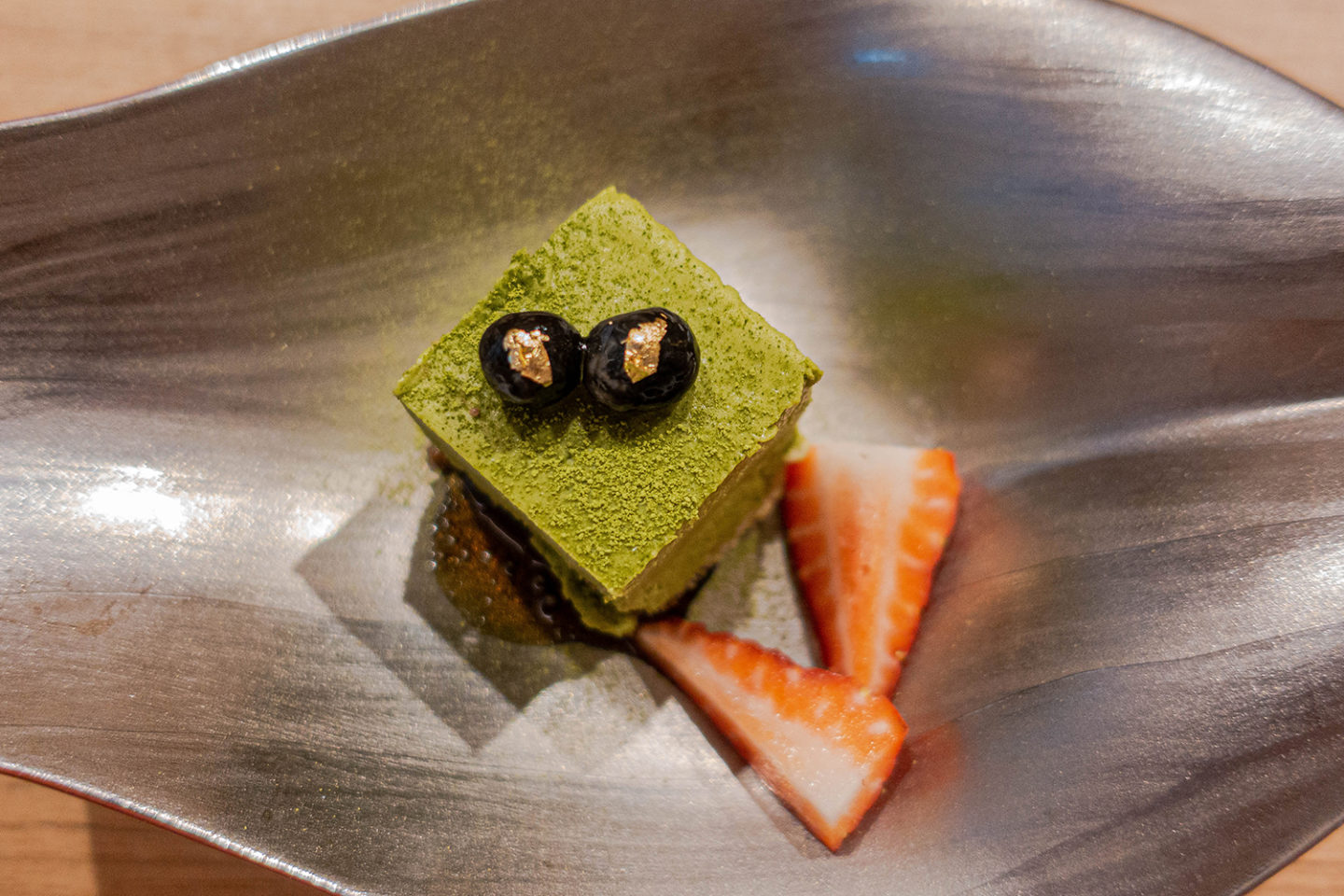
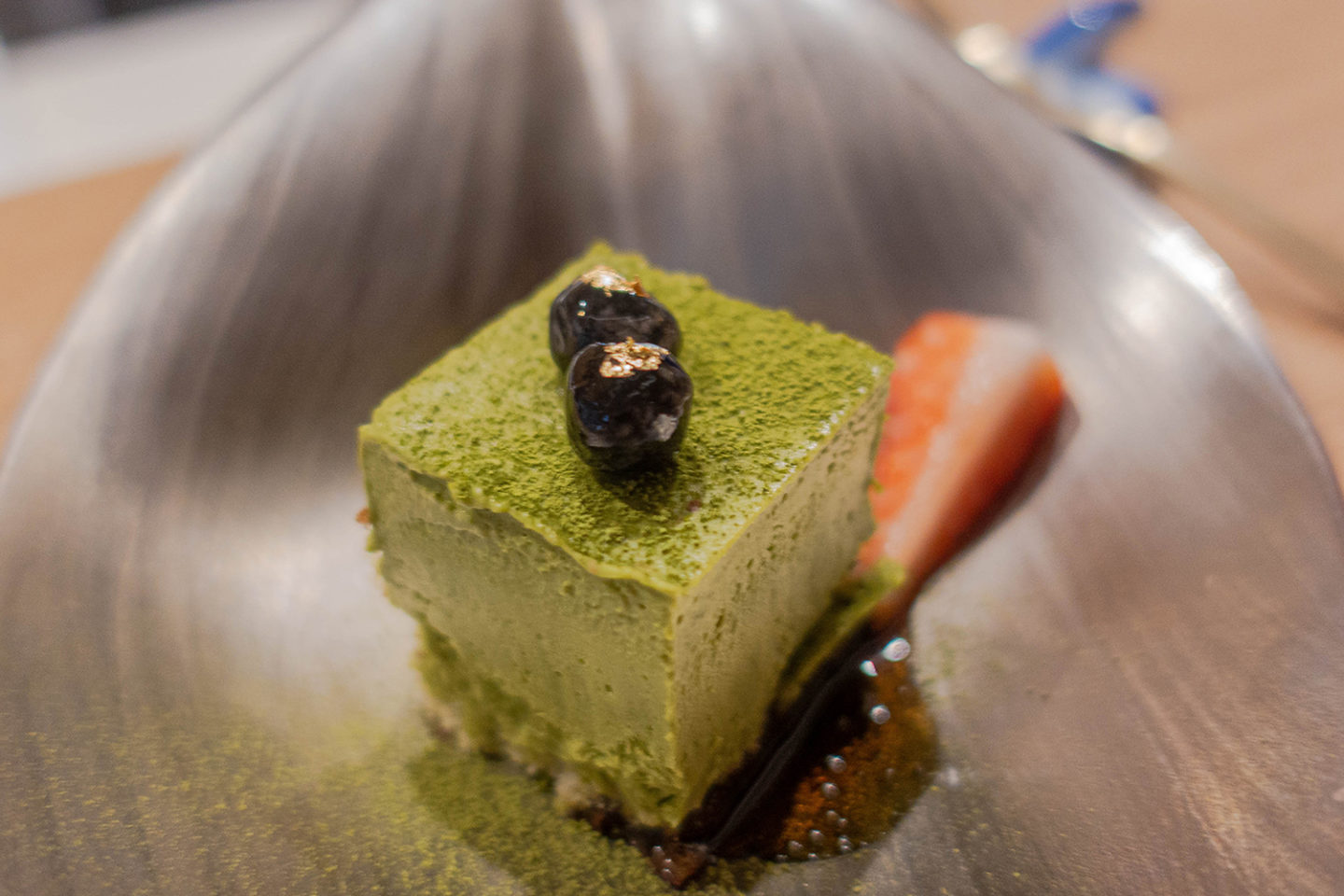
Our dessert was the matcha white chocolate mousse with black sugar sauce. This was very creamy and smooth, with a mildly bitter matcha taste. The black balls on top were soft pearls. And the gold, as fancy as they were, had no flavour contribution to the bite 😂. It was like eating fancy foil. The strawberries were mildly sweet with a bit of tartness to them.
Culture vs convenience
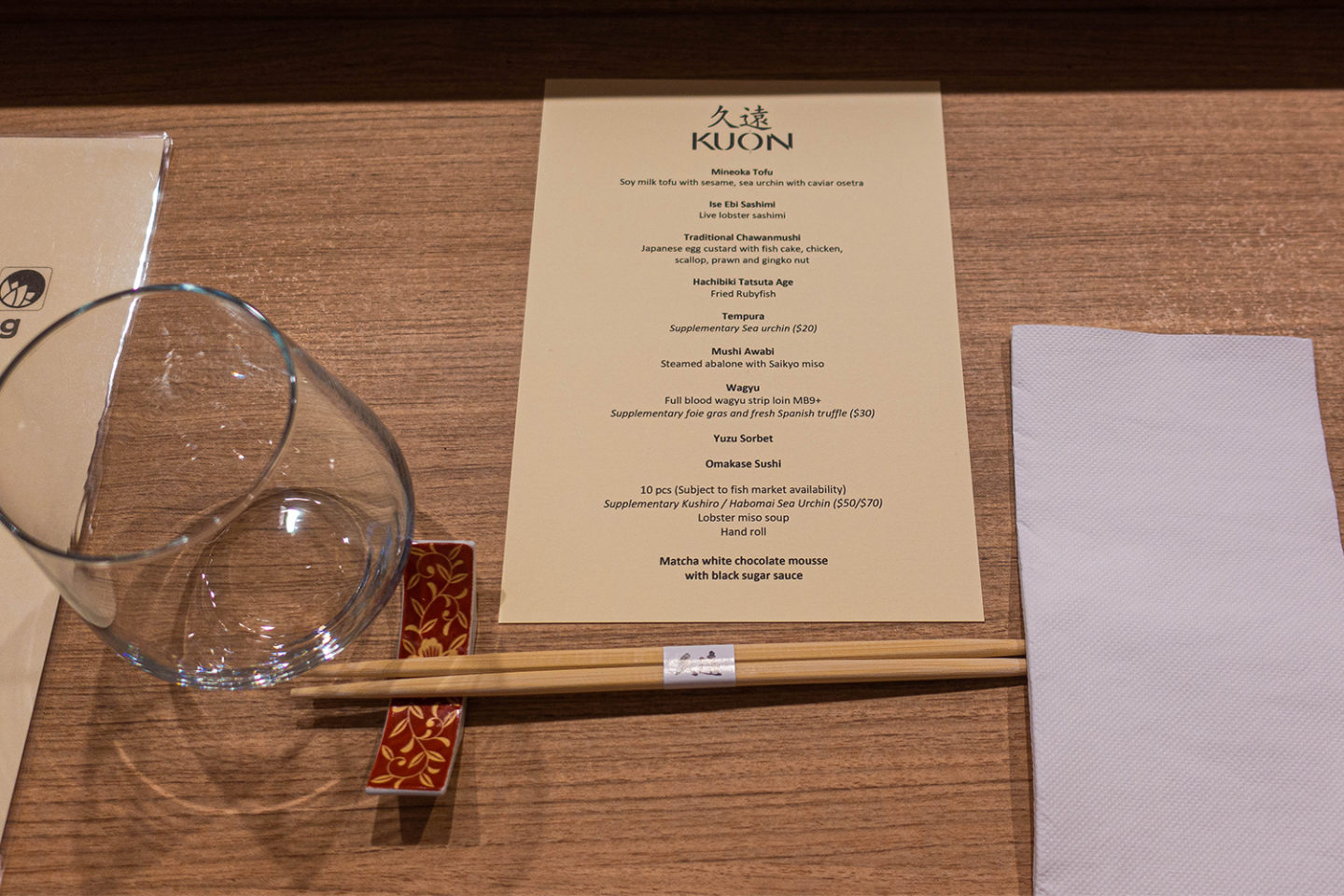
Omakase means “I’ll leave it up to you”. It means we leave it up to the chef to feed us. In Japan, for omakase, we’re not told what we’re eating until the moment the chef places it on our plates.
At Kuon, they texted me the menu and a “specials available” the night before. They also provided a printed menu, which is convenient for western culture 🙄 but is not true to Japanese culture. I’m nitpicking and tossed by this conflict but it’s one I can overlook.
At Kuon, they texted me the menu and a “specials available” the night before. They also provided a printed menu, which is convenient for western culture 🙄 but is not true to Japanese culture. I’m nitpicking and tossed by this conflict but it’s one I can overlook.
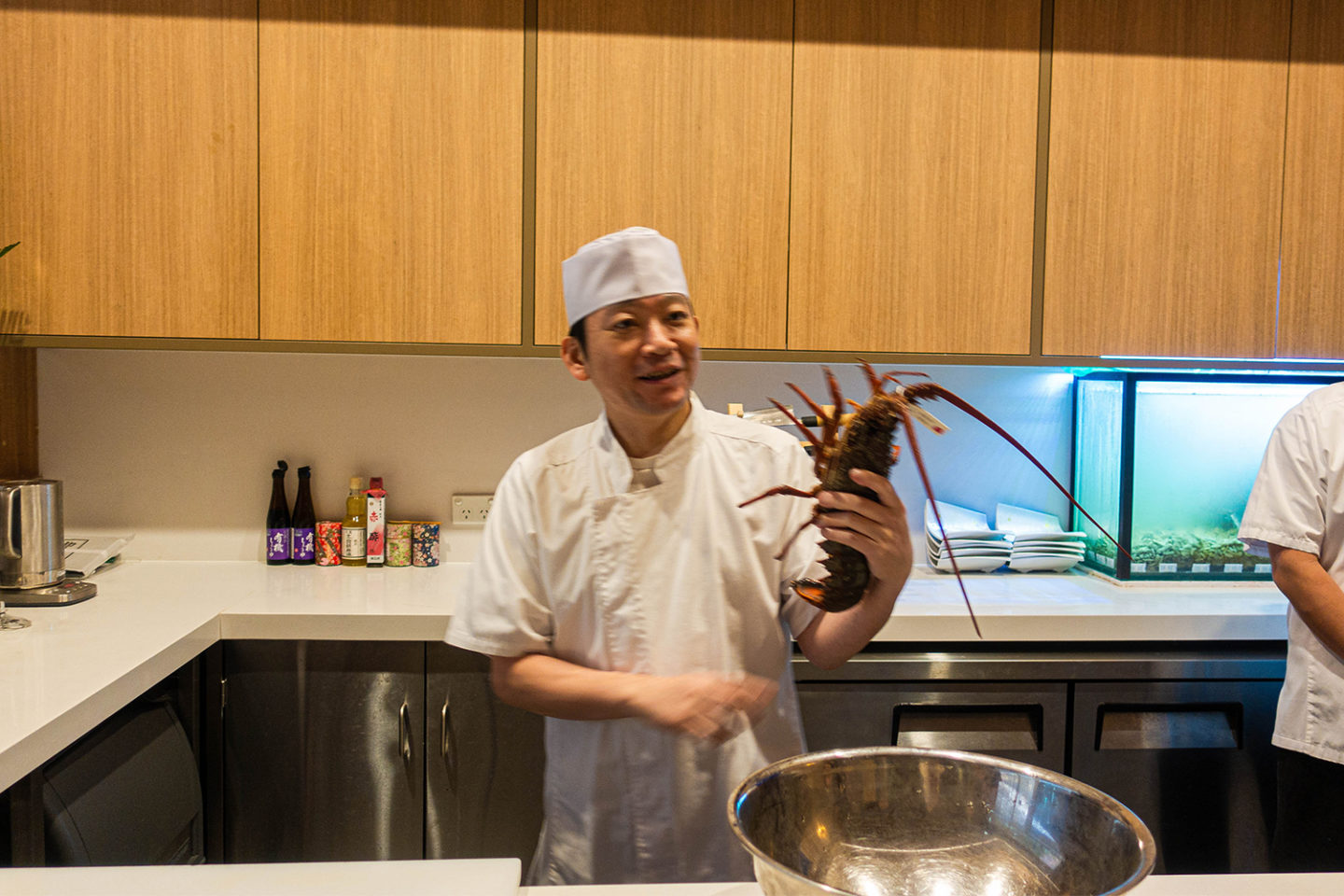
We noticed there were two empty seats and the chefs had left their dishes aside until their arrival. In traditional omakase in Japan (unless you get a snobby chef) and at Sokyo, all patrons are to wait until every guest has arrived. This is due to the showmanship of the omakase experience.
Again, I’m not sure how to feel about this. I’m happy we got to start on time because that’s what we paid for however if the situation was reversed and it was us in those late shoes, I’d be gut wrenched if the show went on. What do you think? 🤔
Again, I’m not sure how to feel about this. I’m happy we got to start on time because that’s what we paid for however if the situation was reversed and it was us in those late shoes, I’d be gut wrenched if the show went on. What do you think? 🤔
Service
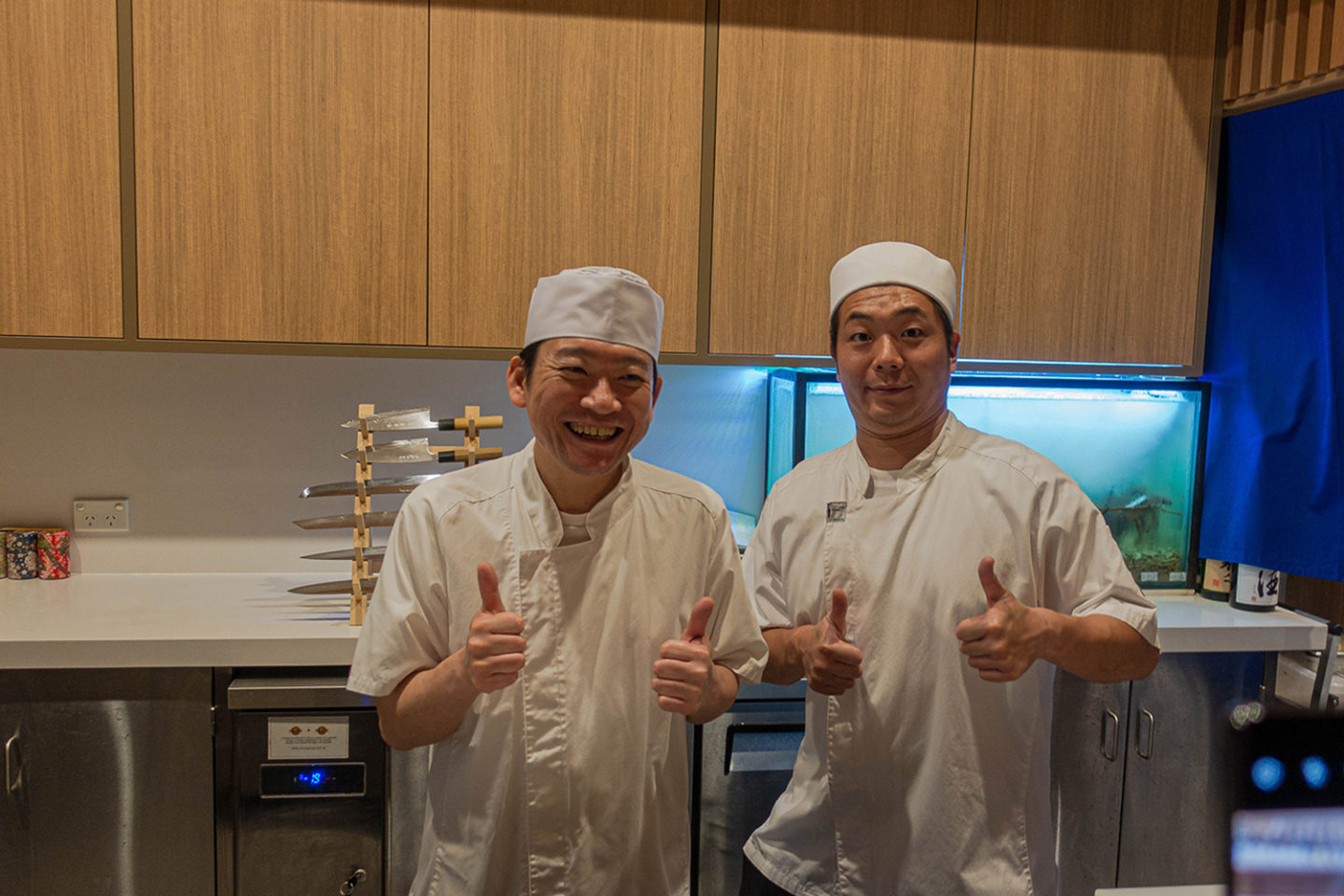
Both chefs did a great job executing their art to deliver every piece to all 8 patrons. Chef Jun Miyauchi had a quieter demeanour and was more focused on his work. His apprentice was a lot more cheeky and was always whipping out peace signs hehehe.
The female server was the most engaging of them all, cracking jokes with us after every second dish. She offered us two private seatings for the newly opened Kuon Tempura Omakase but unfortunately, we had plans, nooooo 😭.
The female server was the most engaging of them all, cracking jokes with us after every second dish. She offered us two private seatings for the newly opened Kuon Tempura Omakase but unfortunately, we had plans, nooooo 😭.
Review
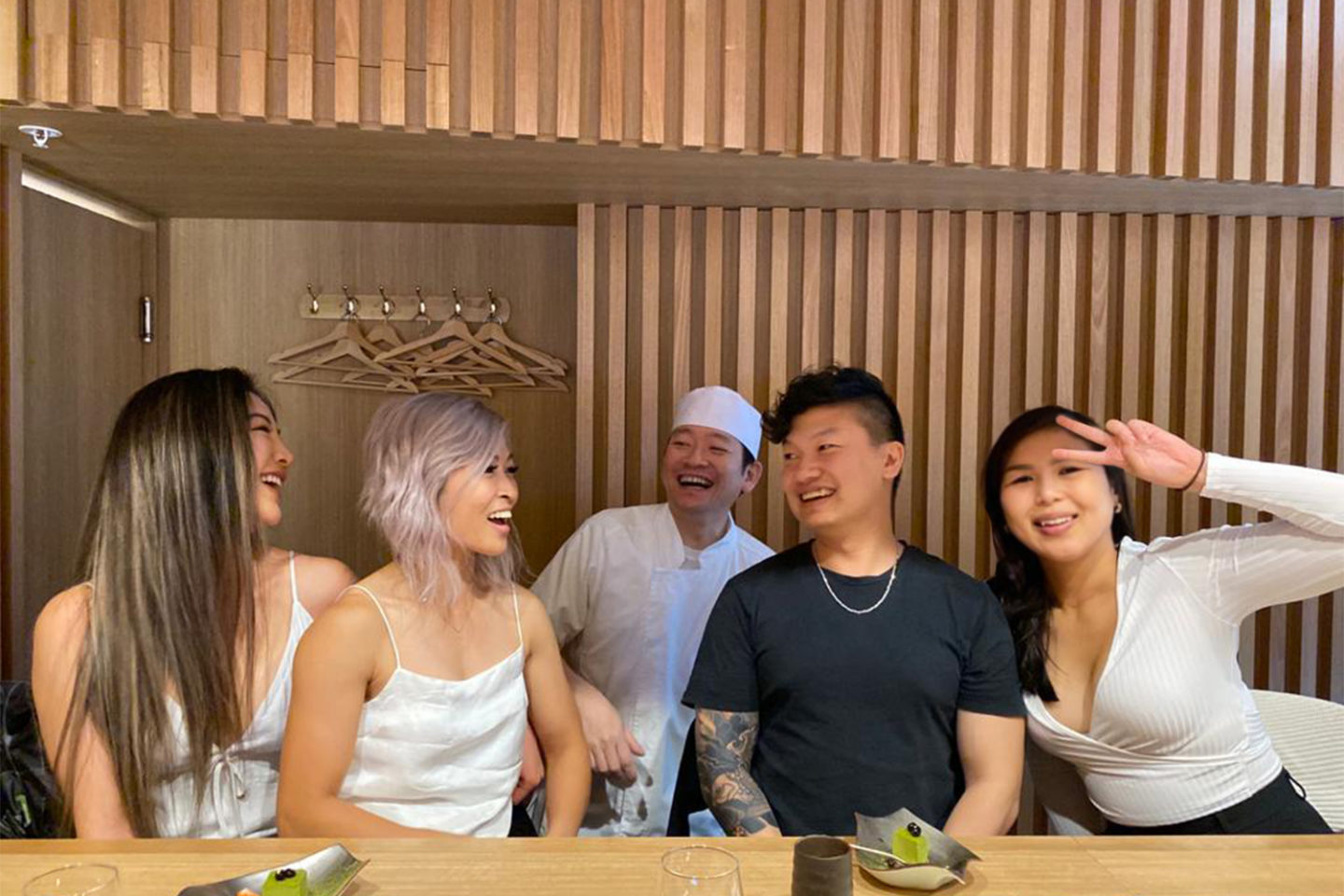
In all honesty, we were still hungry by the end of it despite the fact that we’ve been strictly dieting and only eating a third of our usual capabilities. We also had 6 doughnuts and 2 coffees before the meal. When compared to Chef Takashi Sano’s 26 piece feed (LINK), Kuon was lacking in quantity and serving size. I guess we’ve been spoiled by Chef Sano too much. Or we’re just a bunch of fatties 😳🤣.
In terms of value, we also cannot justify spending almost $300 for only 22 pieces. Yes, some of the pieces were exquisite but we’ve been fed boujee caviar, urchin and even rare kamatoro for much less money.
The good thing about Kuon is that it is an omakase experience accessible to the general public so it’s a great substitute for first-timers and nigiri lovers. I don’t think the add-ons are necessary (maybe the Spanish truffle and foie gras combo 😏) but otherwise, the set course should suffice any cravings and yearning for Japan.
In terms of value, we also cannot justify spending almost $300 for only 22 pieces. Yes, some of the pieces were exquisite but we’ve been fed boujee caviar, urchin and even rare kamatoro for much less money.
The good thing about Kuon is that it is an omakase experience accessible to the general public so it’s a great substitute for first-timers and nigiri lovers. I don’t think the add-ons are necessary (maybe the Spanish truffle and foie gras combo 😏) but otherwise, the set course should suffice any cravings and yearning for Japan.
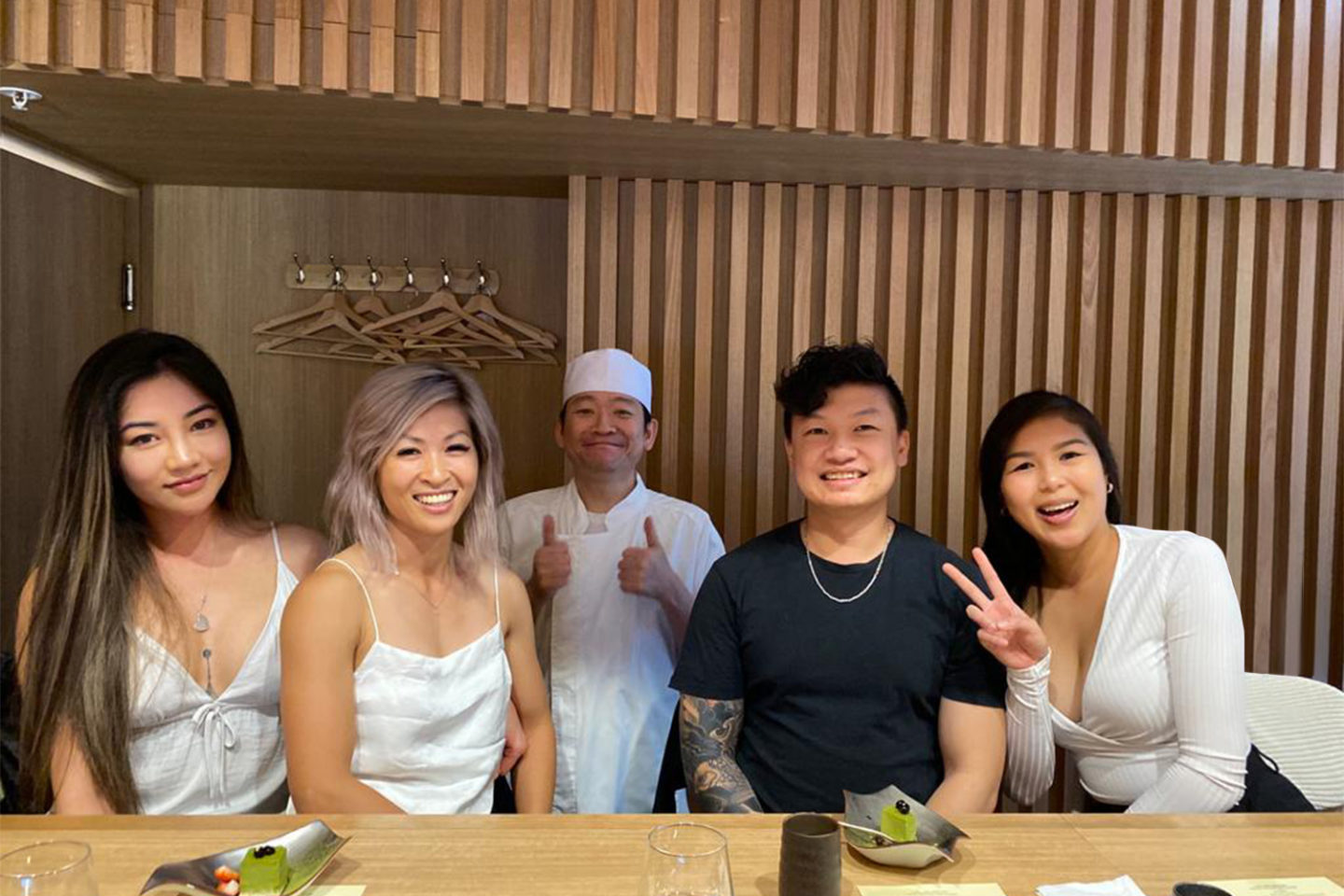
I’m going to keep booking Kuon because I have a few friends who would love to try it but we, ourselves, will not be coming back any time soon (unless I can’t find people to dine then I guess I have no choice but to go back 😂).
We’re going to explore more of the omakase scene in Sydney so until then, thanks for reading. Happy eating! 🍣
We’re going to explore more of the omakase scene in Sydney so until then, thanks for reading. Happy eating! 🍣

Wow, amazing weblog structure! How lengthy have you been blogging for? you made running a blog look easy. The full glance of your web site is fantastic, as neatly as the content!!
Wow, incredible blog format! How lengthy have you been running a blog for? you made running a blog glance easy. The total glance of your site is magnificent, as smartly as the content!!
Wow, amazing weblog structure! How lengthy have you ever been blogging for? you make running a blog look easy. The full glance of your web site is fantastic, let alone the content material!!